Backpacking Essentials for Your Overnight Hike
Share this:.
- Click to share on Facebook (Opens in new window)
- Click to email a link to a friend (Opens in new window)

What do you need for a backpacking trip? This checklist of backpacking essentials will help you remember every important item.
The essential gear items that you bring on any backpacking trip will almost always be the same. Beginner backpackers and seasoned vets will agree that your exact backpacking essentials kit will change over time, and most of us are still refining our gear list each time we go. Yet our essentials seem to always make the list despite our unique needs and climates.
No matter your experience level, using a list can help you remember all the vital equipment. Along with the packing list we provided, we’ll break down how to choose appropriate gear for your overnight camping adventure.
Download Printable Checklist

This backpacking essentials checklist is meant to be a general guideline to give you a baseline of necessary gear. Item types and amounts will vary depending on the backpacker.
This isn’t an ultralight backpacking list, but it ensures you have all the items you need for an overnight trip in the backcountry.

Backpacking Essentials: Camping Gear
For an overnight trip, you should be able to get by with a backpack that holds 30-50 L. If you’re backpacking for an extended trip (3-5 days), then you will need a larger pack (50-70 L).
Other than the length of your trip, backpack size is determined by how bulky your gear is. Remember, all the additional layers for a winter trip will add more bulk to your bag than a standard summer outing.

Even if there’s no rain in the forecast, plan to bring something to cover your pack. A simple rain cover is fine, or you can bring a large trash bag.
Sleeping Setup
The first part of your sleeping setup to decide on is if you want to use a backpacking tent , tarp, bivy sack, or hammock. All of these sleeping shelters have their pros and cons and are very personal choices.
If you’re just busting out your tent for the season, make sure it’s in tip-top shape before your trip with our waterproofing, patching, and spring cleaning guide.

The sleeping bag you need depends on the climate and weather conditions. Be well-prepared for the night ahead by determining the appropriate bag temperature/comfort rating. Seek out a bag rated at least 10 degrees colder than the anticipated low temperature.
So if you expect the low for the night to be 30 degrees, pack a 20-degree bag or lower. Mummy bags are recommended for backpacking because they provide more warmth and are easier to pack down.
The next consideration should be if your bag is insulated with down or synthetic materials. Both have pros and cons, but the main difference is that down tends to be lighter and easy to pack down small with a higher price tag. Synthetics are bulkier, but they still insulate when wet and dry much faster.
For most skilled backpackers, keeping a bag dry isn’t too tough, so the light weight, compressibility, and long life of down bags makes them a top choice.

The Best Backpacking Sleeping Bags of 2024
A sleeping bag is one of your most important pieces of camping gear. We've found the best backpacking sleeping bags for every use and budget. Read more…
The final piece of the sleeping setup is a sleeping pad. Don’t forgo packing this item. While it’s tempting to think of a sleeping pad as only a comfort item, it provides much-needed insulation and warmth while you sleep.
No matter the shelter you’ve chosen, a sleeping pad is a must. Classic Therm-a-Rest Z Lite pads are an ideal and affordable sleeping pad choice, as you don’t have to worry about air leaks. Check out our list of the best sleeping pads on the market.
We didn’t include a pillow on the list. You may choose to bring an inflatable pillow for your sleeping arrangement. But for most backpackers, a great tip is to stuff some clothing into a stuff sack for a sufficient pillow for the trail.
Notice that we recommend a headlamp, not a flashlight. If a flashlight is all you have at the moment, it’s certainly usable. And some experienced campers love the power and versatility of a small flashlight.
However, for most people, a headlamp makes your life much easier during backpacking trips. It frees up your hands if you have to set up or cook in the dark. Plus, it makes hiking in early mornings or late at night much safer.
Even if you’re only out for one night, bring fresh batteries along. You can opt to change the batteries right before you go, but having a backup set should become a habit.
If you’re shopping for a new headlamp, pay careful attention to the battery life in the product specs. While extra lumens can be nice, you don’t need a ton of light for most backpacking, as you’re moving slowly or working close to your body. But long battery life is very helpful on multiday excursions.
Opt for a headlamp with a rechargeable battery versus disposable batteries for a more versatile headlamp. But keep in mind that you’ll likely need to bring a battery pack for recharges in the field when on longer trips.
Camp Kitchen

Stove and Fuel
For overnight trips, there are ways to get around packing a stove. Still, part of the delight of a crisp morning outdoors is a hot cup of coffee and a warm breakfast. You can cook these using old-fashioned fire and coals, but there are fire restrictions in many areas.
Having a camp stove and fuel makes cooking after a long day of hiking quick and easy. There are many options of camp stoves, ranging from very simple and small, like the proven MSR Pocket Rocket , to cooking systems like the Jetboil Mini Mo and multifuel liquid stoves that can function well even in bitterly cold weather. Then you have the more minimalistic stoves like a biofuel stove that burns biomass or alcohol stoves for a lightweight heat source.
Check out our article on the best backpacking stoves to learn more.
Cooking Gear
Beyond your stove, you’ll need a cooking pot, mug, and utensils. To keep things minimal, consider using a compact cookset that packs down together. These will usually have one utensil, one cooking pot with a lid, and a mug that all pack back down into the size of the pot.
The Sea to Summit X-Set 21 Cookset and the Stanley Camp Cookset are both excellent examples of this kind of setup.
For silverware, a spork is a standard option. Try to research the materials and read product reviews. There are many plastic spork options available, but metal or titanium utensils will last you much longer.
Minimalism on the trail may be a learned skill, but it will save you pack weight without compromising necessary creature comforts.
Dishwashing
With minimal cookware, dishwashing becomes a breeze. We recommend bringing some biodegradable soap along and a packable microfiber cloth to dry the dishes. Still, with only a few dishes, you should be able to get by without the use of a dishwashing tub.
If you prefer a dishwashing tub, some innovative and packable designs make doing the dishes easy.
For an overnight trip, it may be possible to pack a bladder of water to last for the length of the trip. However, you don’t want that to be your only available option. Having at least one water bottle ready to drink from at all times is advised, and having a water filtering system on hand will give you the security and flexibility you need to have a safe and enjoyable trek.
If you bring a water bladder along with your water bottle, bring at least a 2L bladder, although a 4L bladder is ideal. MSR makes very durable dromedary bags for backpacking.
Looking for a water filter? Check out our list of the best water filters here .
Disclaimer: Your backpacking food shouldn’t gross you out, and you need to bring enough!
There are so many fantastic backpacking food options available. Some are prepackaged, so all you have to do is add boiling water.
For an overnight trip, it’s easy to plan for food. When planning, make sure to think beyond mealtimes. Bring plenty of snacks to fuel you as you hike. Things like trail mix, power bars, and fruit such as oranges and apples are all great options.
As most of our food is packaged, especially for backpacking, be sure to follow Leave No Trace guidelines. If you pack it in, pack it out!
Depending on the area you’re traveling to, you may need to keep your food away from bears. Be sure to do your research and bring either a bear canister or bear bag when necessary.
Apparel and Footwear
Three important things to remember about backpacking clothing and shoes are as follows:
- Your clothes should be moisture-wicking materials. Avoid cotton, as it absorbs moisture easily.
- Pack and wear layers of clothing. You can pack clothing according to weather forecasts, but layering is the best way to prepare.
- Make sure your shoes are broken in before your hike. No one likes blisters. Ouch!
When you’re backpacking, you don’t need to change your pants and shirt every day. Backpacking life often means you should expect to get a little dirty (and maybe a little smelly).
So if you’re planning a simple overnight trip, you can expect to wear what you had on the first day. Bring an extra pair of underwear and socks, though. It’s nice to have a fresh pair, and you won’t have much other clothing packed, so no worries about space.
The clothing you should bring depends on the climate and current weather conditions. Even if there is no rain in the forecast, it’s better to be safe and pack at least a light waterproof jacket.
Packing layers of clothing also makes things more comfortable because temperatures vary throughout the day. So having to put on or take off one layer is much easier than having to change a complete outfit.
Your clothing and layering system should also include jackets. The type and number of jackets you bring depend on the climate and weather conditions.
Hiking boots or trail shoes should be a priority when planning a backpacking trip. They protect you from rocks and carry you over varying terrain. You need to trust that they will support you the whole way.

Most importantly, know the climate and terrain. If you’re going to be in a cold, wet environment, consider waterproof shoes or gaiters to protect yourself. If it’s hot and dry, maybe trail running shoes will fit the bill. Each trip and each person has different needs for footwear.
You’ll also want to break in your shoes properly if they’re new. This process can be done through various day hikes or just wearing them throughout daily activities.
Personal Hygiene
There are only a few backpacking essentials on the personal hygiene list, so they’re easy to keep in one place. These should include basics like a toothbrush, toothpaste, hand sanitizer, and any prescription medications.
Other than that, also bring items like a trowel for digging catholes or wag bags to pack out your waste. If you use toilet paper or wipes for sanitation, bring a sealable bag so you can pack them out after you’re done.
For female backpackers, menstrual products are essential as well. It’s a good idea to pack some even if you aren’t expecting your cycle to start. If you don’t want to carry around disposable menstrual items, you can use a menstrual cup. If you have never used one before, test it out before your trip.
Emergency Kit and Personal Items
Emergency or survival kit items are the most frequently forgotten items for most backpackers. They’re easy to forget because they won’t necessarily be used each day. Even though you won’t use one often, they play an important role in your backcountry safety. So take emergency gear seriously and add it to your backpacking essentials list.
A simple emergency backpacking kit should include a first-aid kit , whistle, firestarter, waterproof matches, emergency shelter, and a multitool.
Other safety and personal items that can make life easier on the trail include a knife, a gear repair kit, sunscreen, a sun hat, and insect repellent. If there are bears in the area where you’re backpacking, bring bear spray as well.
Having a reliable navigation system should be included on this list. Many hikers now use their smartphones for this. However, smartphones always have the potential to die or break on the trail. Having a laminated map and a compass as backup is a safe way to ensure you know your current location and where you’re going.
Finally, don’t forget other personal items like keys, identification cards, your wallet, permits, and your phone.
Packing Tips
When you’re packing for your overnight backpacking trip, lay out all of the essential backpacking items on the floor before you pack them. This way, you can inspect your gear and make sure you have everything on your list.

If you want to keep your backpacking essentials organized in your pack, using stuff sacks or organizational bags can be very helpful. Separating items in pouches or bags can make gear more accessible, organized, and compact. Using this packing process will ensure that you don’t forget any of your backpacking essentials.
The final tip we will leave you with is to print out two copies of your itinerary the night before you leave on your trip, even if it’s only an overnight adventure. Give one to a friend or family member and leave the other one in your car.
If you can’t hand off a paper copy, at least contact a trusted friend or family member and tell them where you plan to be in as much detail as possible, including when to expect you to return. This way, if something happens to you while you’re gone, someone will be able to alert the authorities right away, and they’ll know where to start looking.
Planning, packing, and embarking on a trip as a beginner can be intimidating. Because this article is focused on your packing list, not specifically how to pack, here are some more backpacking tips and tricks to help you get out there.

The Best Backpacking Tents of 2024
Whether you're looking to spend 100 nights on the trail or stick to a tight budget, we've found the best backpacking tents of 2024. Read more…

The Best Backpacking Water Filters of 2024
We tested the best backpacking water filters and purifiers for your next trip into the great outdoors. Read more…
Follow Us On
Subscribe Now
Get adventure news and gear reviews in your inbox!
Join Our GearJunkie Newsletter
Gear Top Stories Deals

17 Top Overnight Hiking Packing List Items for 2024 + What to Wear & NOT to Bring

There’s nothing more refreshing than getting out of town for a quick connection with the wilderness, even if you only have one night available. It’s important with a quick trip like this, to just pack the essentials you’ll be carrying every item you bring with you!
Keeping your pack as lightweight as possible, while also bringing along everything you’ll need is challenging, so I’ve created this overnight hike packing list of 17 must-haves for an ultimate overnight hike. I’ve also included tips on what to wear on an overnight hike , what NOT to bring with you, and answers to FAQs.
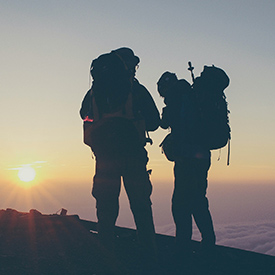
What to Pack for an Overnight Hike – 17 Essentials
Weather is unpredictable, so my motto is to be prepared for anything. The Terra Hiker waterproof poncho is an easy item to pack because it is very compact and lightweight. It’s also large enough to cover a backpack, so that stays dry as well. The material on this poncho is more durable than the cheaper ones I’ve used in the past, so that it doesn’t rip or blow around in the wind as much. Hope for sun, but be prepared for rain by bringing this poncho along on your hike.
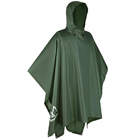
View on Amazon.com ➜
2. LifeStraw Water Bottle
If you’re hiking near water, you have the fortune to not need to carry as much heavy water with you. Instead, bring the LifeStraw Go Water Filter Bottle and you can fill up water from a lake or stream or tap water facucet and turn questionable water into highly filtered potable water. The hollow fiber membrane filter removes 99.9% of bacteria and parasites. It also reduces pesticides and chlorine that might be present in the unfiltered water. This item is a big must-have on hikes and camping trips in our house.
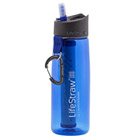
3. Paracord Bracelet
These bracelets are becoming quite popular as survival tools in the wilderness, and this one by A2S Protection has even more power to the punch. Not only does it have the cording that can be used for numerous situations that arise, but it’s a compass, flint fire starter, fire scrapper, small emergency knife, and emergency whistle all rolled into one. Skip by the basic version, and go for this 5-in-1 survival tool for just a couple dollars more. Worth every penny if you get into a pickle.

4. Hiking Socks
You will thank me later—wear one pair, and bring another. This is probably my single best advice I can give someone who’s going on an overnight hike. Who knows when you’ll step in that opportune puddle, or a rain burst will open up? If you settle for regular, run-of-the-mill socks during your outing, you will undoubtedly wear out the fabric, causing a blister to form. On top of that, depending on the time of year, your feet may not stay as warm as you desire. Get this 3 pack of Innotree hiking socks to ensure a warm, dry, and comfortable experience on the trail. I can’t go hiking without them.

5. Solar Phone Charger
It’s doubtful you will find an outlet along the trail, but you will have plenty of sun! Ditch the usual powercord and bring this Blavor Solar Phone charger instead. It doesn’t take up much space, has a lower price point than most, and fits most of the newer versions of iPhone and Samsung models. Since your phone can double as a flashlight and compass, as well as contact 911 if needed, you won’t want to lose charge. You’ll also be helping the environment by going green!
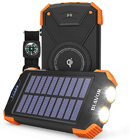
6. Pocket Knife
You’ll encounter numerous times a pocket knife will come in handy while you’re on the overnight hike. The Smith and Wesson Extreme Ops is sturdy, made of Black Oxide High Carbon Stainless Steel. The blade is a generous 3 inches, and the pocket clip makes it quickly accessible. And don’t worry; there’s a liner lock for safety. Definitely bring this on your hike!

7. Blister Balm
No matter how avid of a hiker you are, you’re bound to get some blisters every now and then from the repetitive motion and uneven terrain. However, using a product like Body Glide Blister Balm before you put on your shoes will minimize any blisters that might be headed your way. I’ve used this product in many situations, and I always thank myself later. A bonus feature is that the Vitamin A and C that are in the formula help to soften and soothe already chaffed feet.
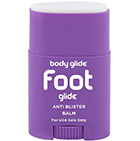
8. Headlamp
Having a hands-free light with you will be so convenient when the sun goes down. This LED headlamp by Foxelli is waterproof and has an extra long battery life, which will last you the full evening. They are so sure you’ll love it that they offer a money back guarantee. No more struggling to do things one-handed in the dark; just wear this Foxelli headlamp and you’re good to go.

9. Solid Shampoo
Solid shampoo has been one of the best overnight hiking buys. It is small, can be used for hand washing and if you have access to water, can be used as shampoo. Plus, it minimizes your use of plastic and liquids. I chose this one from Love Beauty and Planet because it smells incredible and is infused with coconut water. I suggest putting it into a baggie so that if it’s wet, it won’t get on other things in your pack.

10. Hand Sanitizer Spray
If you’re hiking and have limited access to water, iGuard hand sanitizing spray by Minteer Formulas is a wonderful option to keep the germs away. Use it before eating, after using the restroom, and anytime in-between. I love how this has a lid that can clip on to the outside of my backpack, allowing for extra space (even though this is very small!) and easy access. This pack will last quite some time; over 600 sprays! Use iGuard to keep yourself healthy and safe on your overnight hike.
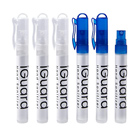
11. Quick-Dry Hiking Pant
Whether it’s sweat or rain or river water, you’re likely to get wet at some point on your hike. No one enjoys walking around in wet clothing, so try to wear a quick dry pant that converts to shorts, which kills two birds with one stone if it ends up being too hot outside. These Jesse Kidden pants are lightweight and have several pockets for essentials. One of the most important things to keep you going with a positive attitude is comfort, which these definitely provide.
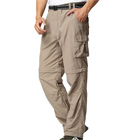
12. Insect Repellent
Nothing will BUG you more than pesky insects who tag along on your hike. Repel them with a repellent that has DEET for maximum effectiveness. Cutter has this very small spray that won’t add weight it’s less than half an ounce! I was pleasantly surprised to find that the smell is light and the feel on the skin is not greasy nor sticky. Easy to put into a pant pocket. Use this repellent to create a barrier against irritating bugs that can spoil the outdoors.

13. Waterproof Matches
Maybe your matches fall into a lake. Or, more likely, an afternoon shower dampens your gear. In either case, you’ll benefit from bringing along waterproof matches instead of the run-of-the-mill kind. Just bring a small pack of these Coghlan’s waterproof matches to avoid the catastrophe of a fire-less evening. One of the most rewarding parts of hiking is that crackling sound that complements the delicious smoky scent in the air; a relaxing way to end a long day of hiking. Don’t miss a single flame.

14. Neck Wallet
I like to keep the most important things close to me, so I use this Hero Neck Wallet under my shirt with my identification and emergency information. This would also be a good place to store a dose of prescription medicine if necessary. Anything you simply DON’T want to lose along the way, and/or want to conceal, use a neck wallet to guard your belongings. The heavy duty fabric and YKK zippers will endure your hike without a problem. It also comes with a lifetime replacement guarantee for peace of mind. No matter where my family goes, I am always wearing this under my shirt for safe keeping.
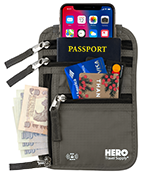
15. Hiking Backpack
A good backpack is something you can use over and over again, so make sure to find one that will last a long time. Choose one that has several easy access compartments, is lightweight, and has durable fabric and zippers. My current favorite is by Mountaintop . The adjustable hip belt takes the strain off my shoulders. It’s the perfect size for an overnight hike; not too big, not too small. One of the compartments can hold a small sleeping bag. As I’ve said, comfort is key to success on an overnight hike, so I’m picky about which backpack to bring, and this one passes the test.

16. Sleeping Bag
The number one thing that will weigh you down (besides water), is your sleeping bag. Finding a lightweight one that is waterproof and durable is challenging, but look no further… Oaskys has one that is all of those things, plus comes with a compression bag and straps so that you can attach it to your pack. So much better than that bulky one you had as a child! Tip: This is only for Spring, Summer and Fall. Winter overnight hiking is a whole ‘nother level.
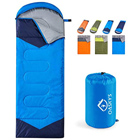
17. Extra Small Tent
You may decide to sleep under the stars—on some occasions, I’m right there with you! But if you want a little more outdoor protection, the smallest tent possible is always best. Remember, it’s all about the weight of your pack that determines comfortability, so choosing the most compact, lightweight tent is best. There are many out there, but the smallest one yet that has a super easy set up is from Go Time Gear . This mini tent weighs about half a pound! It’s meant for survival and emergencies, which makes it perfect for inclement weather and an on-the-go overnight hike. Sleep under the stars if you desire…but keep this handy in case of a sudden rain shower!

Other Overnight packing list items not to forget
- Face and body wipes
- Carabineers
- Small quick-dry towel
- Collapsible cup
- Mini water filter
- No-frame camping chair
- Hand warmers
- Instant coffee
- Small mirror
- Toilet paper
- Mini hairbrush
- Travel toothpaste/brush
- First-Aid kit
- Tiny camera
- Waterproof phone pouch
- Selfie stick
- Eating utensils
- Notebook/pencil
- Field guide
- Sleeping pad
- Plastic bag for waste
- Inflatable pillow
- Deodorant wipe
What to Wear for an Overnight Hiking
You won’t need much because it’s only one night, so wear what you’re comfortable with in the current weather, and plan for a cooler evening. Always check the forecast. Having one set of clothes with you in case of an emergency is really all you’ll need; space is precious in your pack, after all! Wearing layers is also a good idea, because it’s easy to take off an extra item as you go. Below is the breakdown of what to wear and pack for your outdoor adventure. Pro tip: Roll the clothing to make it fit easier in your backpack.

What NOT to bring on an Overnight Hiking
1. don’t pack books.
download an E-book onto your phone if you want to read in the evening, but don’t take a physical book with you.
2. DON’T PACK valuables
DON’T no need to carry the extra weight of things that you won’t need. A little cash and a credit card for emergencies should be all you need.
3. DON’T BRING too many clothes
you may be tempted to bring extra items, but less is more when you’re carrying everything yourselfON’T since you’re only gone one night, you won’t be going too far; full survival gear mode is not necessary! Just the essentials.
4. DON’T BRING gear you won’t use
DON’T since you’re only gone one night, you won’t be going too far; full survival gear mode is not necessary! Just the essentials.
5. DON’T TAKE a bath towel:
DON’T the face and body wipes will work wonders instead. Having a super small quick drying towel is sufficient for this length of a trip.
6. DON’T TAKE dense foods
DON’T you’ll want to pack some food to keep your energy up, but keep in mind the weight of the items. Applesauce pouches are deceptively heavy, for example!
Jeans: The jean material doesn’t allow for the flexibility and breathability you’ll want on your hike. Choose lightweight cotton items or quick-dry items instead of heavy jean material.
strong Bulky clothing: You’ll want ease of movement, so don’t let anything get in the way of that! Dress in layers, and don’t over pack.
Non-breathable fabric: From head to toe, you’re likely to work up a sweat while hiking. Quick-dry fabrics will be your best friend. Consider your footwear choices, too—some shoes have a more breathable design than others. This one by Flarut is an example of a breathable hiking boot, if your hike is mild to moderate.
Uncomfortable shoes: A few days before your hike, wear your shoes for a day or two to see how they feel. You won’t want to find out 3 hours into your hike, that they rub your foot the wrong way. You can bring along a couple pieces of moleskin just in case.
FAQs about an Overnight Hiking
1. where should i go for an overnight hike.
It’s important to keep in mind how far you think you’ll go in a day. 10 miles or 5? Pick a hike that has an obtainable distance, and keep in mind if you’ll need water along the way LifeStraw Water Bottle fill-ups. Consider any wildlife you may encounter. Reading the ratings/reviews of different areas online is quite valuable in case there are recent changes in the zone you are planning on. Lastly, find out if you need any permits for where you are going rains.
2. What should I eat on an overnight hike?
Snacks: Beef jerkey, trail mix, granola bars, dried fruit. Dinner: Peanut butter and jelly sandwiches, chips, tuna pouch. Breakfast: Dried granola, dried fruit, cereal bars. Tip: Freeze a couple string cheese and/or yogurt tubes, and they will stay cold for a few hours on day one.
3. What are the most popular activities to do on an overnight hike?
In the evening, when the hiking is over and it’s time to relax, one of my favorite things to do is study the stars on a clear night. There are apps, such as Star Walk, that can be your guide to what’s above. Listening to an Ebook is also a calming evening activity if you’re alone. If you’re with others, playing a game of cards and swapping stories around the campfire is a simple way to create new memories and laugh about the old ones.
4. Can I take my children on an overnight hike?
Of course! Remember that their needs may be different than yours, so pack different items as needed. The number one thing that might become an issue is what they are carrying. Children have less stamina for carrying a pack for long distances. If this is your first overnight hike with children, plan for a short adventure and see how that one goes first.
5. Do I need to bring a tent?
Not necessarily. Some areas are great for just sleeping under the stars.Other places, a hammock such as this one by Kootek will be a comfy choice. Just consider the weather, what time of year it is, and how much you want to carry with you. Of course, the super small Go Time Gear tent would be easy to bring along just in case something comes up.
6. What should I do if it rains?
If you have your poncho with you (large enough to cover your backpack) and it’s a light rain, you can keep on hiking, unless it is a steep incline. Of course, lightning is a different story. In that case, take cover and wait it out. When you’re planning where to put your tent at night, make sure to not make it at the bottom of a hill, where all the water will run down to. If it starts to get cold, use your hand warmers to heat yourself up until you can light a fire. As soon as the rain lets up, try to get dry as fast as possible to minimize discomfort.
7. Is it okay to hike solo?
When the still quietness of the outdoors calls to you, it’s okay to follow the lullaby and have time for introspection. A lot can be accomplished in one’s mind on a solo overnight hike. However, it’s very important to consider a few factors, such as your age, overall health, wildlife of the area, cell phone reception, and trail difficulty. As attractive as it may be to get out and get some peace and quiet, playing it safe and bringing a buddy may help you out in the long run. You also may want to ask a couple of people who know you best what their opinions are, just in case you’re forgetting any important considerations. Hiking solo and hiking with a pal both have benefits, so either way, you’ll have an excellent journey.
- Blue Mountains
- Central Coast
- Central West & Orange
- Lord Howe Island
- Hunter & Mid-Coast
- Lake Macquarie & Newcastle
- North Coast
- New England & North West
- Outback NSW
- Riverina Murray
- — Albury Wodonga
- Snowy Mountains
- South Coast
- Southern Highlands & Tablelands
- Daylesford & Macedon Ranges
- Geelong & The Bellarine
- Great Ocean Road
- Victoria’s High Country
- Mornington Peninsula
- Phillip Island
- Yarra Valley & Dandenong Ranges
- Outback Queensland
- Southern Queensland
- Sunshine Coast
- Townsville North Queensland
- Tropical North Queensland
- Whitsundays
- Coral Coast
- Margaret River & South West
- The Kimberley & North West
- Eyre Peninsula
- Fleurieu Peninsula
- Flinders Ranges & Outback
- Kangaroo Island
- Limestone Coast
- Yorke Peninsula
- Katherine & Surrounds
- Alice Springs & The Red Centre
- Arnhem Land
- Hobart & South
- Launceston & North
- North Island
- South Island
- Cook Islands
- New Caledonia
- Philippines
- Switzerland
- United States
- Aboriginal Culture
- Arts & Culture
- Beach Lifestyle
- Eat & Drink
- Nature & Parks
- Adventure & Sports
- Canyoning & Abseiling
- Climbing & Bouldering
- Dog Friendly
- Gravel & Bikepacking
- Kayaking & Paddling
- Mountain Biking
- Skiing & Snowboarding
- Skills & Safety
- Snorkelling
- Trail Running
- Wild Swimming
- Microadventures
- Multi-day Hikes
- Comparisons
- Gear Guides
- Photo Essays
A regular dose of adventure inspiration, trip ideas, latest events and giveaways.
Overnight hiking packing list with 20+ essentials.
Tim Ashelford
Tim's the Publisher of We Are Explorers and he's been around since the early days. You're most likely to find him running trails around Sydney with mates or dialling in his lightweight hiking setup, but he can also be found falling off bikes, surfboards and climbing cliffs all over the country. Tim also writes for NSW National Parks and he's passionate about inspiring people to get outdoors.
- Author Profile
Learn about We Are Explorers' Editorial Standards
Jess is a Content Editor at We Are Explorers. Her bucket list is long and her weekends are full. She’s an ultralight adventurer but will always sacrifice a few grams to bring a book. Endlessly curious, Jess loves nothing more than discovering new places (real & fictional!), and pushing her limits to the max.
- Editor Profile
Heading out for your first overnight hike into the wilderness? Helping a friend prepare to hike into the bush? Just really good at forgetting stuff? Our packing list for an overnight hike is your new best mate.
Packing List for an Overnight Hike
Optional items are italicised.
- Hiking Pack (40 – 70L)
- Pack Liner or Rain Cover
- Mesh Organisers
Sleep System
- Tent or Shelter
- Sleeping Bag
- Sleeping Mat & Pump
- Lightweight Pillow
- Groundsheet
- Sleeping Bag Inner Sheet
Eatin’ ‘N’ Drinkin’
- Food (Meals & Snacks)
- Water Bottles or Water Bladders (Min 2L)
- Water Treatment System
- Cookstove & Fuel
- Matches or Lighter
- Pot & Pot Grips
- Lightweight Bowls or Plates
- Knife, Fork & Spoon
- Coffee Maker
- Dishwashing Supplies
- Mobile Phone
- First Aid Kit
- Sunscreen , Hat & Insect Repellent
- Head Torch & Batteries
- Personal Locator Beacon (PLB)
- Mirror & Whistle

- Map & Track Notes
- Waterproof Map Case & Pencil
- Toothbrush & Toothpaste
- Hand Sanitiser
- Chafing Cream
- Women’s Sanitary Supplies
Read more: How Explorers Deal With Periods on Adventures
- Hiking Boots or Trail Runners
- Wool Hiking Socks
- Thongs or Sandals for Camp
- Waterproof Gloves
Warm Weather
Lightweight wicking materials (not cotton).
- T-Shirt or Shirt
- Pants or Shorts
Cold Weather
To add to warm weather clothing.
- L/S Thermal Top (Wool)
- Fleece, Synthetic or Down Jacket
- Thermal Leggings (Wool)
- Neck Buff/ Neck Gaiter
Other Stuff
Print your own copy.
We’ve made a high-res, printable version! Click the image below download a handy packing list you can use over and over again.
Want more help choosing your gear?
- Which Hiking Stove Should I Get?
- 13 Best Camping Coffee Makers in Australia
- 10 Best Puffer Jackets in Australia for Men & Women
- 12 Best Sleeping Mats for Hiking in Australia
- 14 Best Hiking Backpacks in Australia
- 10 Best Sleeping Bags in Australia
- What To Wear When Hiking – A Beginner’s Guide
- 11 Best Rain Pants in Australia
We Are Explorers uses affiliate links. If you buy anything through our Wild Earth links we earn a small commission, which helps keep our site free! We choose products for gear guides and lists based on our own experience and understanding of outdoor gear and its impact. Learn more about our Editorial Stand a rds .

Packing List for an Overnight Hike
Carry only what you need
Figuring out what essentials to carry on your first overnight hike can be difficult if you haven't done it before. And the requirements will vary greatly, depending on circumstances. Are you going alone, or will you have companions? Are you hiking near roads and other trappings of civilization, or are you in the true wild? Are there animals in the area that might be a threat, or are mosquitoes the most dangerous thing you're likely to encounter? Are you doing one night out in the open air, or is this a multiple-night hike?
A common mistake for first-timers is to overpack. Nothing ruins a hike more than carrying too much on your back. Yet you also need to cover the basics in order to make sure your hike is safe and comfortable enough to not sour you on the whole experience.
The following list is loosely based on the ten essentials for a day hike, modified for overnight trekking. Use it as a starting point, then adapt the list as you gain more experience in the great outdoors.
Time of year and the climate of your region will dictate much of what you should pack in the way of clothing, but a good rule of thumb is to think in layers. Instead of packing one bulky coat or jacket, it's usually better to pack several thin but warm pieces that you can put on or take off as needed. Any store specializing in outdoor activities will have a number of different brands and price points from which you can choose. Here is what we recommend:
- Base layer (top and bottom). Polypropylene long underwear is both lightweight and offers good warmth.
- Mid (insulating) layer. Here, too, thin but insulating fabrics are usually best for a hike.
- Outer (shell) layer, which in mild weather could be a thin windbreaker and whatever pants you feel comfortable hiking in. If temps are going to be 30 degrees and below, consider a heavier shell.
- Extra socks. Wet feet will quickly ruin a hike. Make sure your socks are appropriate for hiking. Wool, or wool blends, are usually better than cotton.
- Hat and gloves. Your hat should protect you from the sun and also be thick enough to stop heat loss. Thin gloves made from Thinsulate are best.
- Sunglasses.
- Optional: Change of underwear (you can always go without or turn yesterday's inside-out).
- Optional: For those in bear country or doing long hikes, an extra set of base layers to sleep in as pajamas.
Sleeping under the stars is great when it's practical, but more often you will need some form of protection from the elements and from insects. At a minimum, you should take:
- A tent or a tarp that can be erected as shelter. A one-man mummy tent can be great for solo overnights. In areas where bugs are a problem, make sure your tent has good insect netting.
- Sleeping pad (and patch kit, if it's air-inflated).
- Sleeping bag.
- Optional: Tent footprint. A ground tarp can be an important addition where ground is moist.
Steady hiking burns a lot of calories, and you'll need to replace those calories with nutritious, filling food. For some people, hot meals are essential, but for others, cold foods, such as nutrition bars, nuts and dried fruits, and beef or fish jerkies are just fine, especially for brief overnights. Plan carefully for each meal rather than simply pack a lot of random foods. You will eat more than you think. Consider a backpack cooler with a separate compartment to keep cold foods cold. Many experienced hikers like to start and end the day with hot meals, but find that a cold lunch—or a series of snacks—will work just fine for midday. Here's a sample list that works for many:
- One cookable breakfast, one cold lunch, and one cookable dinner for each full day on the trail. Many outdoor supply stores carry a number of ready-to-eat meals that work great for long trips. Just add hot water in the bag, and you're good to go.
- Snacks for in-between meals. Use your day hiking experience to help you gauge quantities. Estimate on the high side until you become more experienced.
- One cooking/eating dish.
- Eating utensil (the "spork," which includes both fork and spoon in one utensil, is great).
- Cup for hot drinks.
- Camp stove and fuel.
- Animal-proof food storage appropriate for your area: Bear-proof canister, rope, and bag for bear-bagging; or rodent-proof bag, can, and rope for mouse-bagging, etc.
- Optional: Camp spices.
- Optional: Stove repair kit (depending on your stove and trip length).
Keeping hydrated is even more important than food on an overnight hike. There are two options: pack in all the water you are likely to need in some form of container, or bring along a water filter or purifier that allows you to drink available lake or stream water. The latter option is best provided there is plenty of water out on the trail, as it greatly reduces the weightload in your pack.
If you must carry water, you can either pack bottles, or use some kind of Camelbak-style reservoir system. Either way, don't skimp—you will need a lot of water, not only for drinking, cooking, and washing up, but also for any emergencies, like getting lost or helping out other hikers on the trail.
Comfort Items
So-called comfort items may not be life-and-death necessities, but you will be surprised by how essential some of these things will seem out on the trail. If you're being assaulted by mosquitoes during stretches of hiking in the deep woods, bug spray will sure seem essential. As will:
- Sunblock/sunscreen
- Biodegradable toilet paper
- Optional but a really good idea: Hand sanitizer/biodegradable soap.
- Optional: Wet wipes.
- Optional: Hand shovel for digging holes to bury feces.
- Optional for women: Urine director, menstrual supplies.
Just in Case
There is no need to be paranoid about the dangers of the trail, but neither do you want to be naive about the hazards, especially when hiking alone or in remote country. These items will give you peace of mind:
- Fully-charged cell phone (but never count on having cell service).
- Headlamp and extra batteries.
- Your hiking emergency kit—including, at a bare minimum, an emergency whistle, knife, duct tape, water purification tablets, map and compass, waterproof lighter/striker, firestarter, large garbage bag, space blanket.
- First aid supplies.
Miscellaneous
As space allows, consider bringing these items, as well:
- Lightweight stuff sacks to keep everything organized.
- Copies of relevant guidebook pages. Make photocopies of the relevant pages, or just tear out the pages you'll need.
- Camera in a ziplock bag or waterproof case.
- Bear spray (if appropriate in your area).
- Hiking poles (optional).
- Reading material like a book or magazine.
Make a trip plan and stick to it. Even if you are hiking in relatively civilized territory, make sure other people know where you are going and when you are coming back. In addition to filing your plans with friends and family, tell a park ranger or the local sheriff/police department where you are going and when you plan to be back. This is especially important if you are hiking in a remote area.
Should you find it necessary to change your plans on the trail—such as if a trail is washed out or closed—try to contact someone to let them know that your trip plan has changed.
Everything You Should Pack for a Hiking Trip
Everything You Should Pack for a Camping Trip
The 14 Best Backpack Brands of 2024
What to Wear Hiking: Experts Share the Best Hiking Clothes
What to Pack for a Short Hike
The Best Daypacks for Hiking of 2024, Tested and Reviewed
The 14 Best Survival Kits of 2024
Everything to Know About Hiking With Your Dog
Planning a Camping Trip: The Complete Guide
The 11 Best Beach Bags of 2024
Your Complete Guide to Bikepacking
The 8 Best Backpack Coolers of 2024, Tested and Reviewed
How to Choose and Prepare for a Hiking Trip
A Beginner's Guide to Hiking Boots
How to Go Hiking With Your Kids
Vacation Packing Checklist for France
Cookie policy
Wanderlust Movement | A South Africa Travel Blog
45+ Hiking Essentials: The Ultimate Hiking Packing List for Beginners
March 18, 2021 by Lauren Melnick
Last Updated on March 6, 2024 by Lauren Melnick
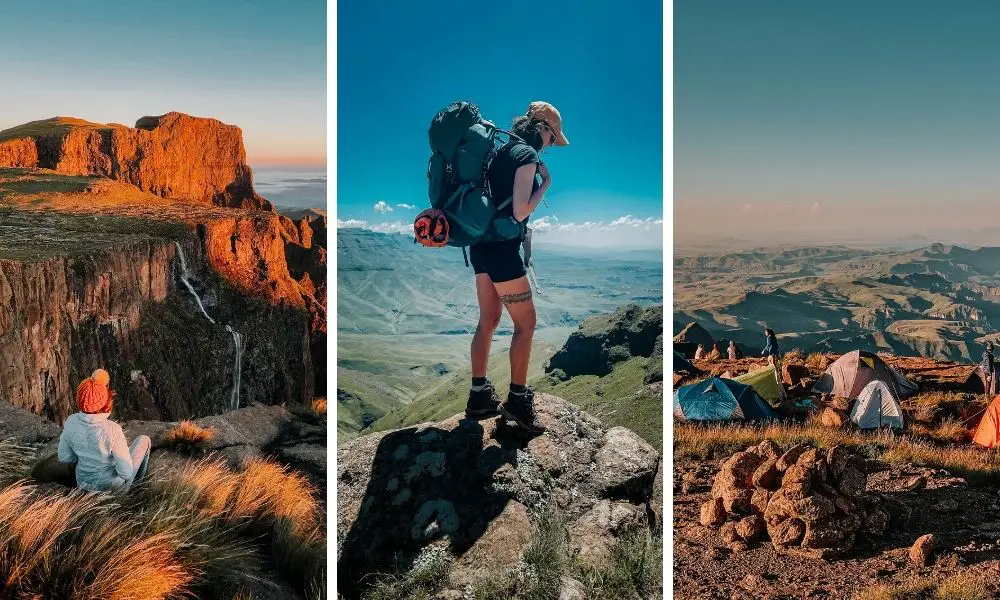
Does packing for an overnight hike make you want to set your hair on fire and send you into a state of panic? Then this is the article for you!
I’m sharing everything you should include in your hiking packing list to make sure you have the most stress-free experience while in the mountains.
However, you don’t need to bring allllll these items for every single hiking trip . You’ll need to tweak it according to your needs. For example, multi-day hikes like the Otter Trail have huts so you don’t need to pack a tent and an insulated mattress.
As someone who has had quite a view hiking fails from not packing the right gear, I’ve learned a thing or two about you need (especially the things that’ll help you get a good night’s sleep).
Trust me, by the time you get to the end of this article, you’ll be an absolute hiking packing master
So, let’s get started – here are all the hiking essentials to pack for a multi-day trek!
Psst…Want more hiking tips and inspiration for your next adventure? Check out these other posts:
- 15+ Best Hikes in South Africa With Mind-Blowing Views
- 12 Best Hiking Trails in Cape Town With Jaw-Dropping Views
- The Best Drakensberg Hikes That’ll Take Your Breath Away
- Hiking The Otter Trail in South Africa: Absolutely Everything You Need to Know
- Hiking Tugela Falls: Africa’s Highest Waterfall
- 10+ Spectacular Multi-Day Hiking Trails In The Western Cape
Table of Contents
Trekking Poles
Hiking shoes, water bladder, first aid kit, mosquito and bug repellent, spf lip balm, sweat wicking shirt, insulated jacket, windbreaker, rain jacket, hiking shorts, hiking pants, wool hiking socks, sleeping bag, sleeping bag liners, insulated mattress, toilet paper and plastic bags, knife and duct tape, jet boil and fuel, water bottle, dishwashing liquid + cloth, portable charger, camera/phone, multi-day hiking packing list, hiking gear for beginners.
Before you go into the mountains, you need the right hiking gear. Here’s what to add to your overnight hiking checklist:
The most important item for any overnight hike is a hiking backpack .
You want to make sure you’re investing in a bag that is made specifically for multi-day hikes. It’s going to give you all the support you need and keep your weight off your back.
I use the Osprey Aura 65l . It’s one of the best hiking backpacks for women as it’s designed for our bodies for a more comfortable fit.
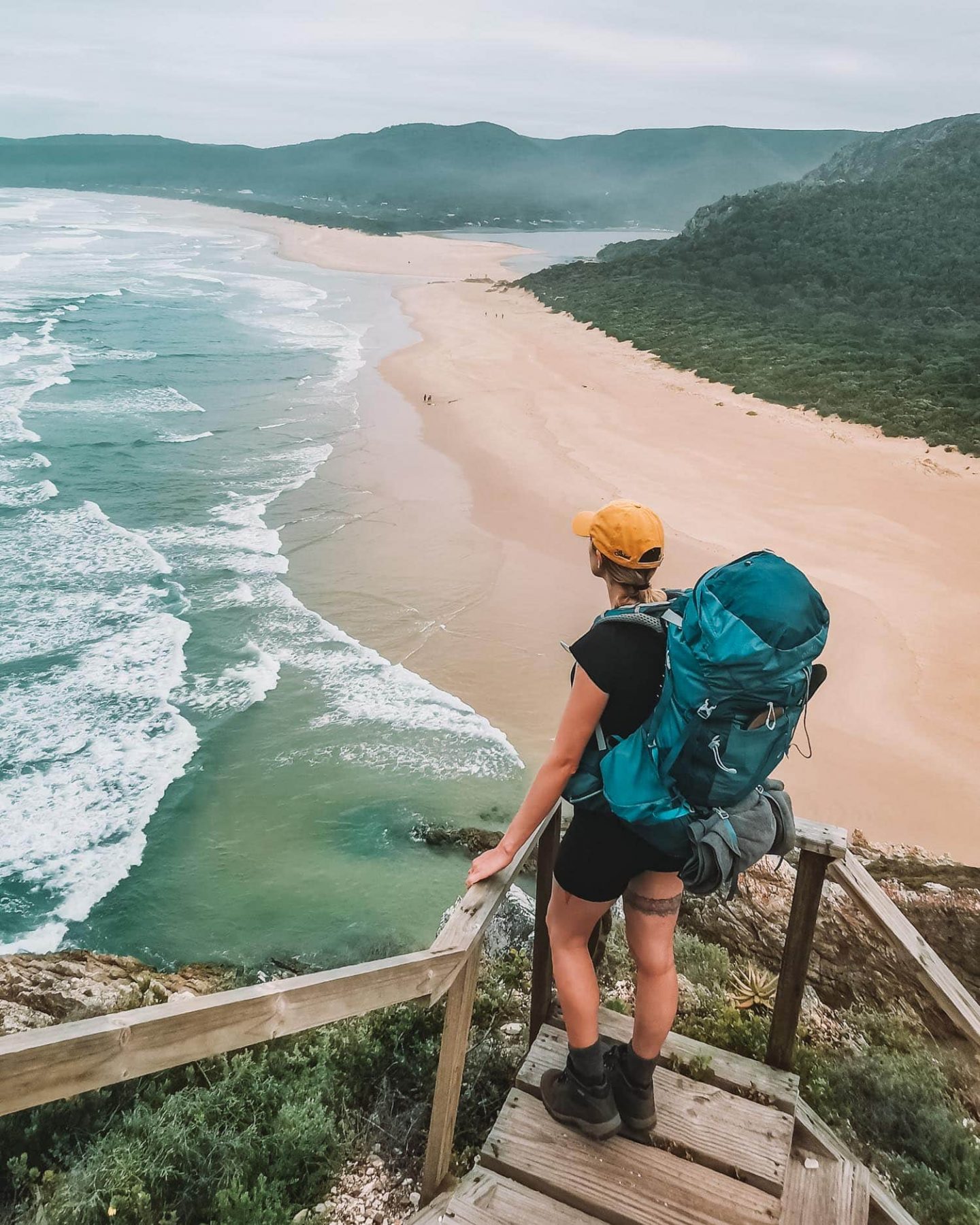
While the weather forecast may say clear skies, sometimes you can’t predict the weather.
A rain cover for your backpack is one of those must-haves for hiking to keep all your gear dry (like your camera and sleeping bag).
If your pack doesn’t come with one, you can buy a rain cover separately. I bought this one from Outdoor Warehouse before I upgraded my pack to an Osprey.
A headlamp needs a spot on any hiking equipment list. It’s also one of my essential items for photography as I often wake up before sunrise to shoot or venture into the wilderness to shoot the Milky Way at 1 am.
When you’re packing for a multi-day hike, a headlamp is going to make it easier to see what’s lurking around your campsite at night.
Plus, you might need to start hiking before sunrise if you’re doing the Otter Trail and need to cross the Bloukrans River at low-tide.

Do you need trekking poles for every single overnight hiking trip? Yes and no.
If your multi-day hike is strenuous (like the Mnweni Circuit in the Drakensberg), trekking poles will go a long way in helping you get up the mountain while it’s not required for an easier hike like Tugela Falls .
However, if you have bad knees, you should invest in poles even if you’re doing easy day hiking trails.
Why do you need a dry bag if your backpack has a rain cover? Extra precautions.
If you’re someone like me who brings expensive camera gear on adventures, you’ll want to add a dry bag to your hiking trip packing list.

Choosing the right hiking shoes for your trip is incredibly important. You want to consider the type of conditions you’re trekking through as well as the style of hiking.
My go-to hiking shoes are the Altitude V Ultra from Hi-Tec . While these hiking boots are quite heavy, they are waterproof (I love jumping in puddles!), have an excellent grip (a must if your route involves scrambling), and super comfortable. For something lighter, I love the K-Way Women’s Scree Shoe .
Water bladders are one of the first things to pack for hiking trips.
It makes it easier to stay hydrated, and you don’t need to keep taking off your pack to pull out your water bottle. I use the 2l water bladder from First Ascent, and it also comes in a 3l if you want more carrying capacity.
Always remember to check the trail has water points and pack purification tablets.
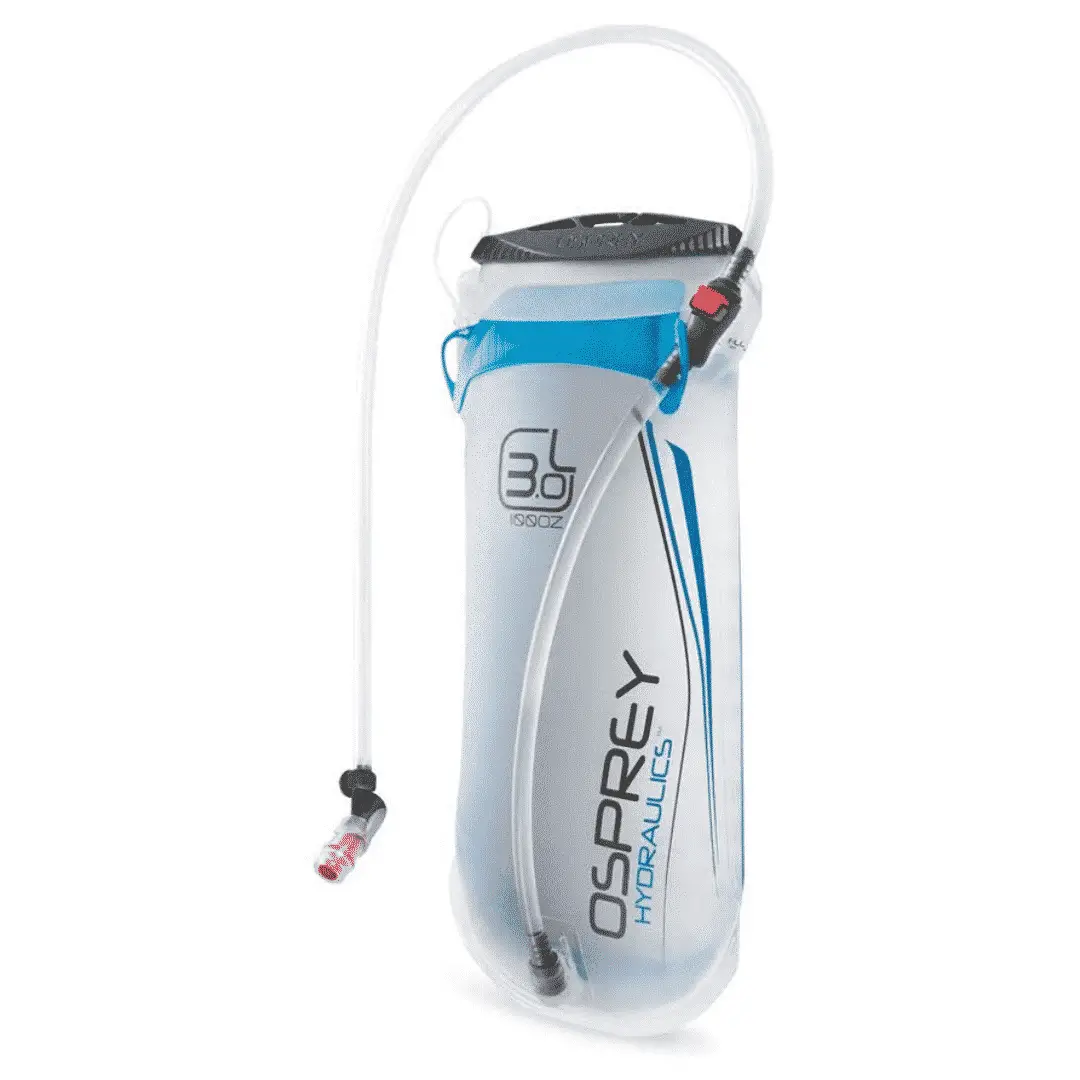
When you’re out in the mountains, you never know what might happen.
You could need a headache tablet, or you might trip and cut yourself on the trail. Add a small first aid kit to your hiking packing list.
Outdoor Warehouse has kits specifically designed with hikers in mind, and it tells you how many people can use it.
If you’re hiking in the summer months, you’ll want protection from the swarms of mosquitos.
If you’re wearing sweet-smelling deodorant, you might attract a few more unwanted friends.
Pack a small bottle of bug and mosquito repellent to get a good nights sleep and avoid bites while on the trail.

I’ll admit, I’m not the best at remembering to pack my SPF lip balm, but it’s a hiking essential. My lips always start to crack and sometimes bleed on a backpacking trip.
When I don’t use my lip balm, I’m in pain for the next couple of days after the hike while the cracks recover.
Don’t leave home without packing sunscreen! It’s one of the top 10 essentials for hikes and will protect you from painful sunburns.
I use the Cetaphil SPF 50+ for oily skin from Dischem . I’d highly recommend it if you’re someone who finds the ‘greasiness” of sunscreen makes you breakout.
P.S. You should wear sunscreen every day to prevent signs of ageing and skin damage.

Toiletries include things like your toothbrush, toothpaste, face wash, make-up etc.
It’s anything that will make you feel clean and comfortable. When packing for a hike, try to use small bottles to lessen the weight in your pack.
What to Wear Hiking
Not packing the right clothes for hiking will leave you freezing or sweating your butt off in the mountains. Here’s what to add to your hiking wardrobe:
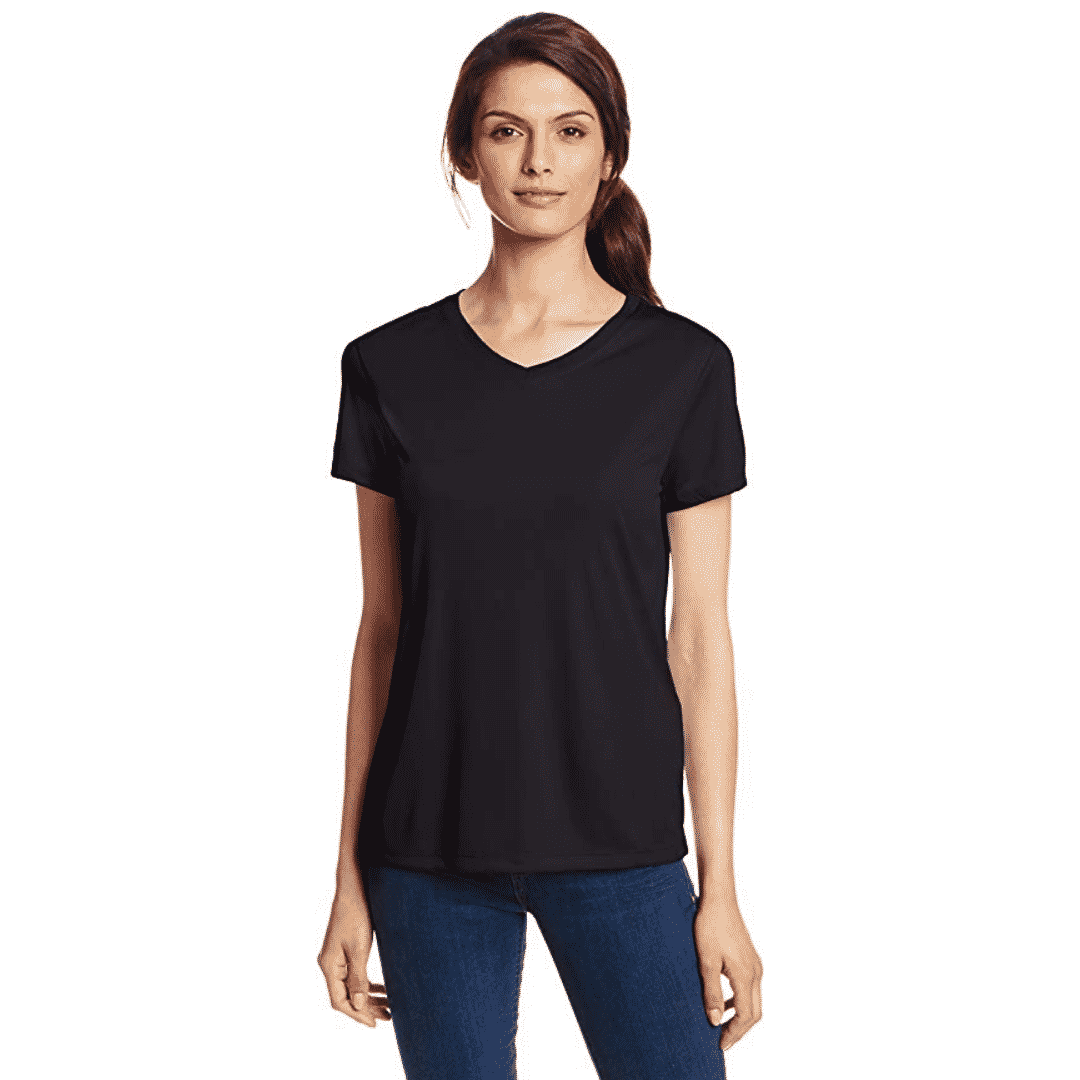
When you start building a hiking wardrobe, invest in a moisture-wicking and quick-drying shirt.
On multi-day hikes, you’re going to sweat A LOT, and you want to wear something that can keep you comfortable.
K-Way has sweat-wicking shirts made from Quik Wic fabric to keep you cool and dry outdoors.
As someone who is a reptile and gets cold as soon as the sun dips under the horizon, I am obsessed with my insulated jackets .
I use the K-Way Women’s Swan ’18 Down Jacket . It’s incredibly light-weight and packs down small.
K-Way also has the Women’s Ember Re: Down Jacket , made from 100% recycled down.
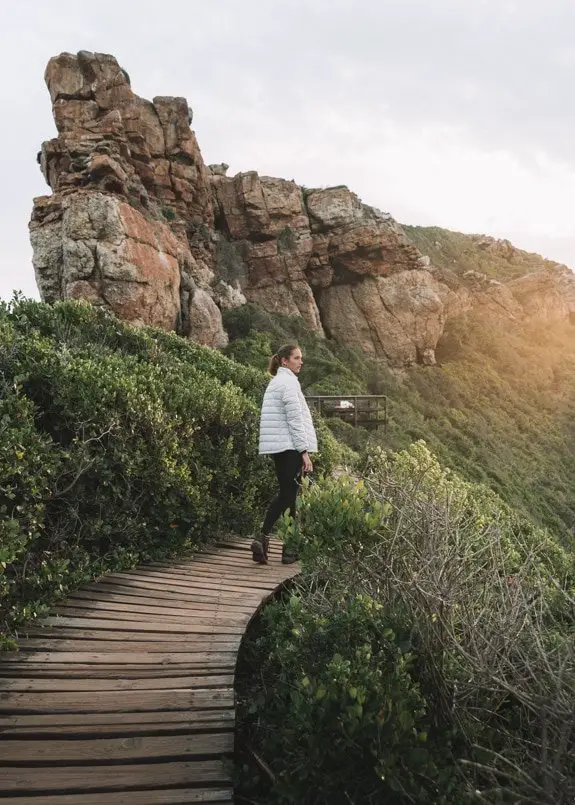
I bought my first windbreaker for my overnight Tugela Falls hike, and it changed my life.
The K-Way Franklin Rain Jacket is light-weight, windproof and waterproof. I used it as an extra layer in the late afternoons and early mornings when the temperatures were cooler and loved it.
When the wind did pick up, it insulated me and kept me comfortable the entire time. I love that you can adjust the sleeves with a velcro strip to stop the wind from sneaking in up your arms!
Another investment I made towards my hiking wardrobe is an insulated mid-layer.
I often reach for my long sleeve mid-layer when I am layering under a heavier jacket or when I want a bit of extra warmth.
My favourite is the K-Way Women’s Hazel Crewneck Fleece . It uses an insulating waffle knit, making it perfect for chilly outdoor conditions.
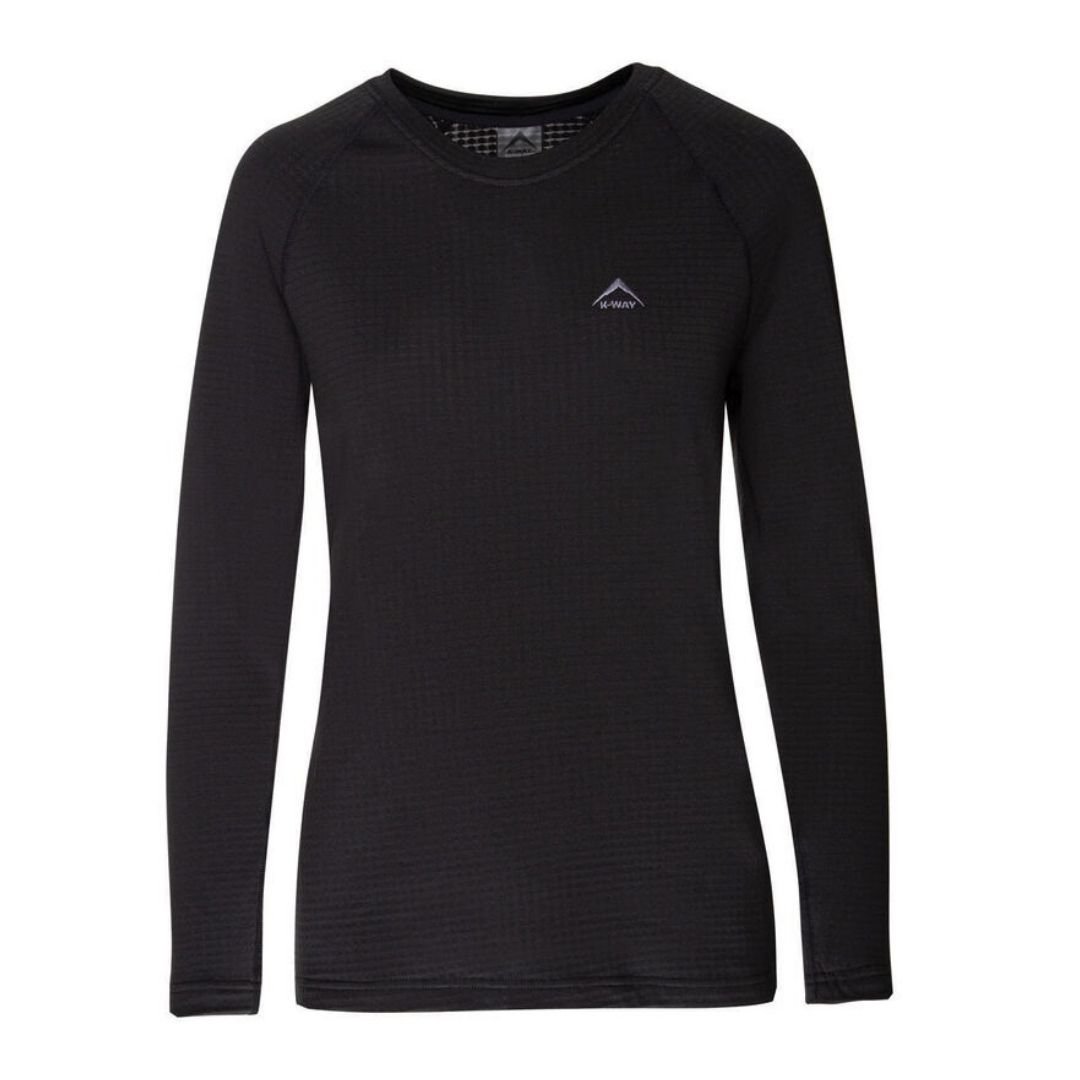
If you have a waterproof windbreaker, you can get away without buying a separate rain jacket.
However, if you’re hiking or trail running in heavy rain, you might want to invest in something like the First Ascent Ladies AR-X Waterproof Running Jacket or the First Ascent Ladies Submerge Rain Jacket .
Both are light-weight, packable, and designed to keep you dry in heavy downpours.
For multi-day hikes in the Drakensberg or anywhere else in South Africa, a pair of hiking shorts will go a long way in keeping you cool in the summer months.
I’ve been using a pair from Boody (it’s made from sustainable bamboo), but I have noticed it’s not the most durable material.
I’m looking at upgrading to First Ascent’s Ladies Corefit Short Tights which has a pocket for your phone!
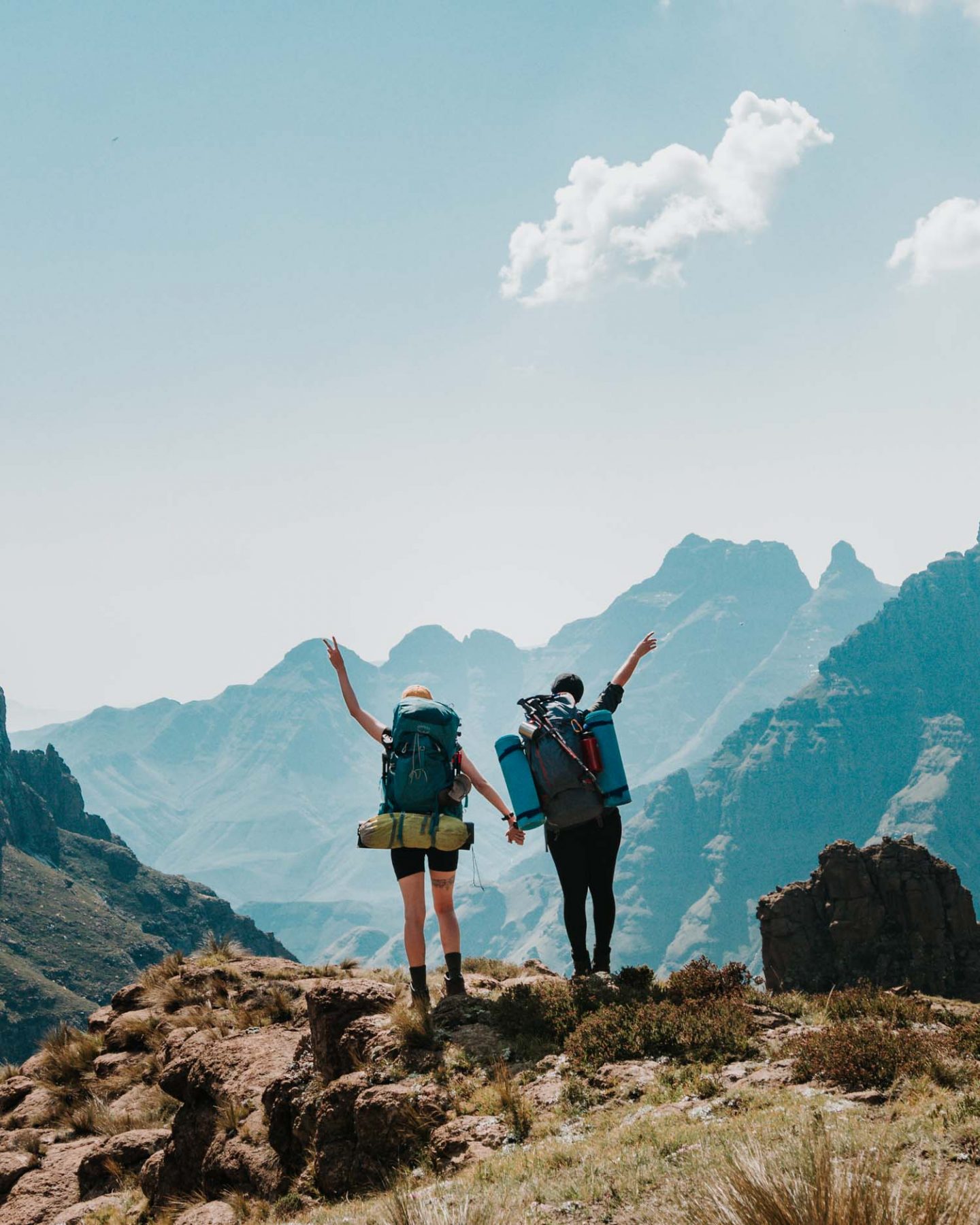
For colder temperatures of if you want to limit sun exposure on your legs, add a pair of long pants to your hiking packing list.
Hiking leggings are a great choice, but if you’re going through more bushy areas, opt for more durable hiking pants .
I did Mnweni without a pair of thermals , and I will never make that mistake again.
Thermals are excellent base layers when you want extra warmth and double as pyjamas in the evening.
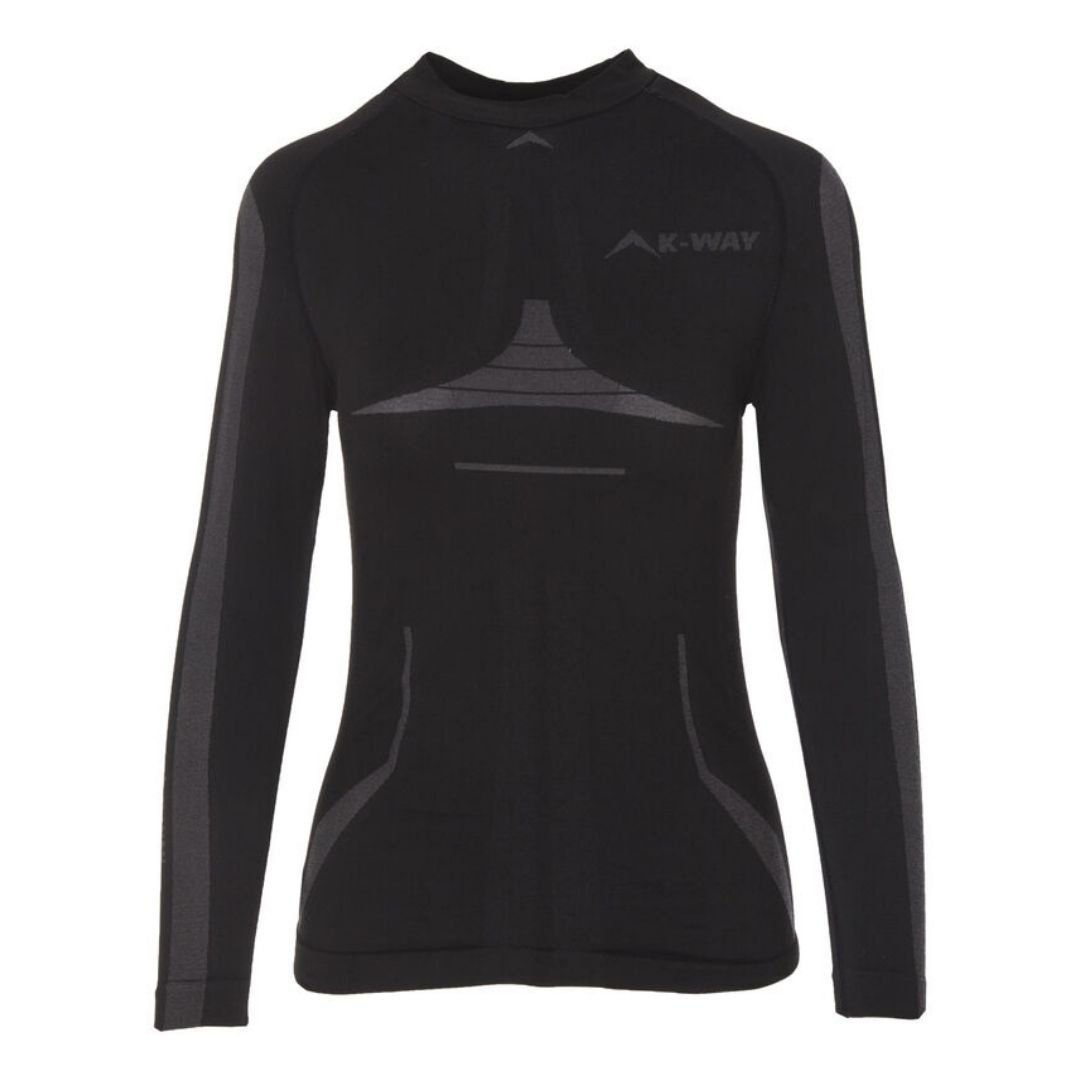
Have you ever had sunburn on your head or ears? It’s the WORST! Protect yourself with a sun hat on your overnight hiking trip.
I often wear a cap from Stoked (one of my favourite South African brands) but opt for a wider brim hat like Olive Venture Wide Brim Hat if you want extra protection.
A thick pair of hiking socks will go a long way in preventing blisters.
For your hiking packing list, look for hiking socks that are breathable, moisture-wicking and odour resistant.
I like to double up my socks as an extra precaution for blisters, and it works like a dream!
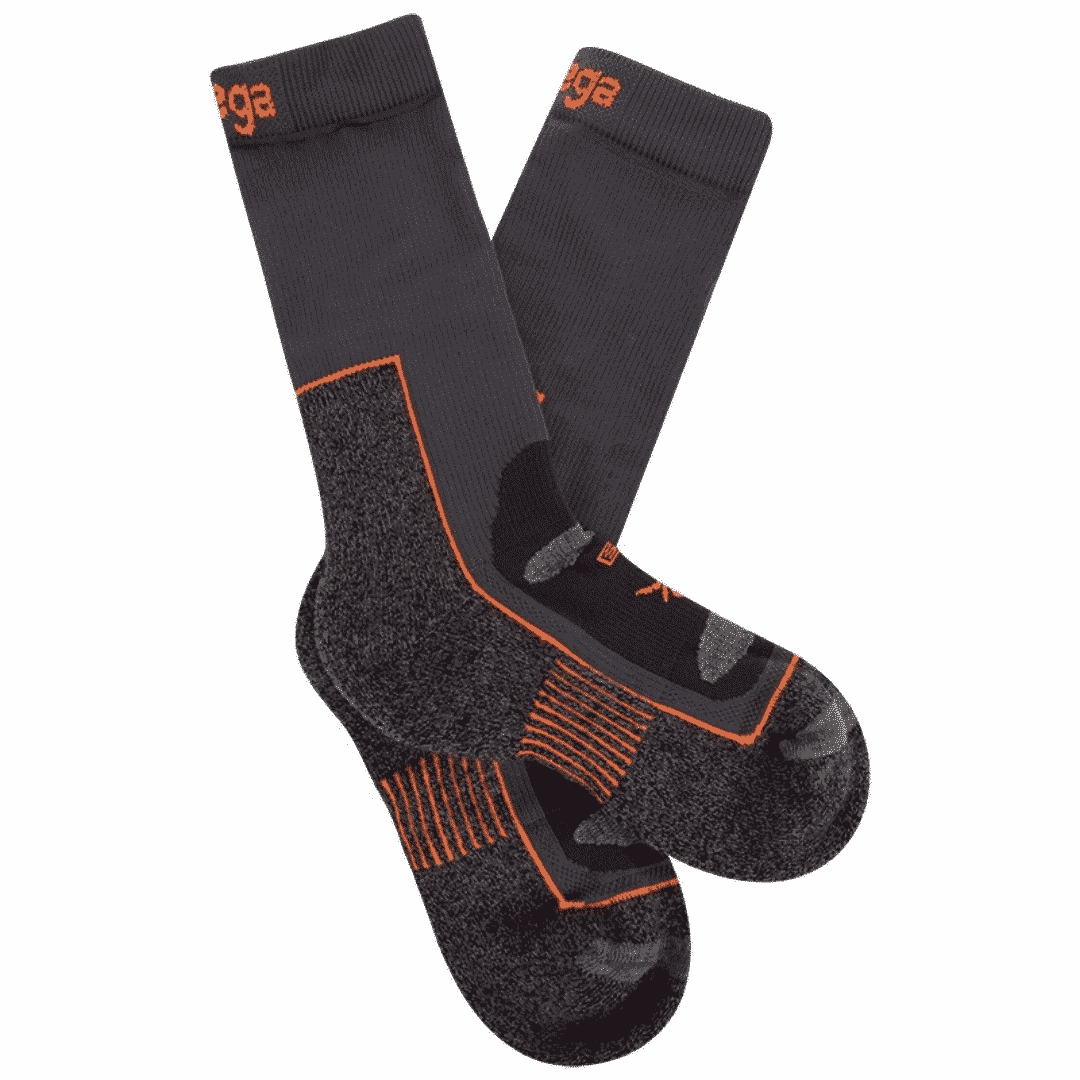
After a long day of hiking, a pair of sandals will feel like the ultimate luxury for your toes.
I bring a pair of flip flops , but if you want to wear socks with your sandals in the evenings, opt for a pair like the K-Way K-Way Women’s Lily Sandal.
Gloves are essential for your trekking gear list if you’re going to colder climates or the temperature will drop quite a lot in the evenings.
Gloves will keep your hands toasty in the evenings and make it easier to cook or take photos in the cold.

Another must-have for sun protection is a pair of polarised sunglasses .
I love the Gold Vintage Octo Lens With Metal Frame from Escape Society. These sunglasses are super affordable and stylish.
Buffs are a handy piece of gear to own.
You can use them as a mask when shopping or use them to protect your neck and face from the sun, wind, and cold.
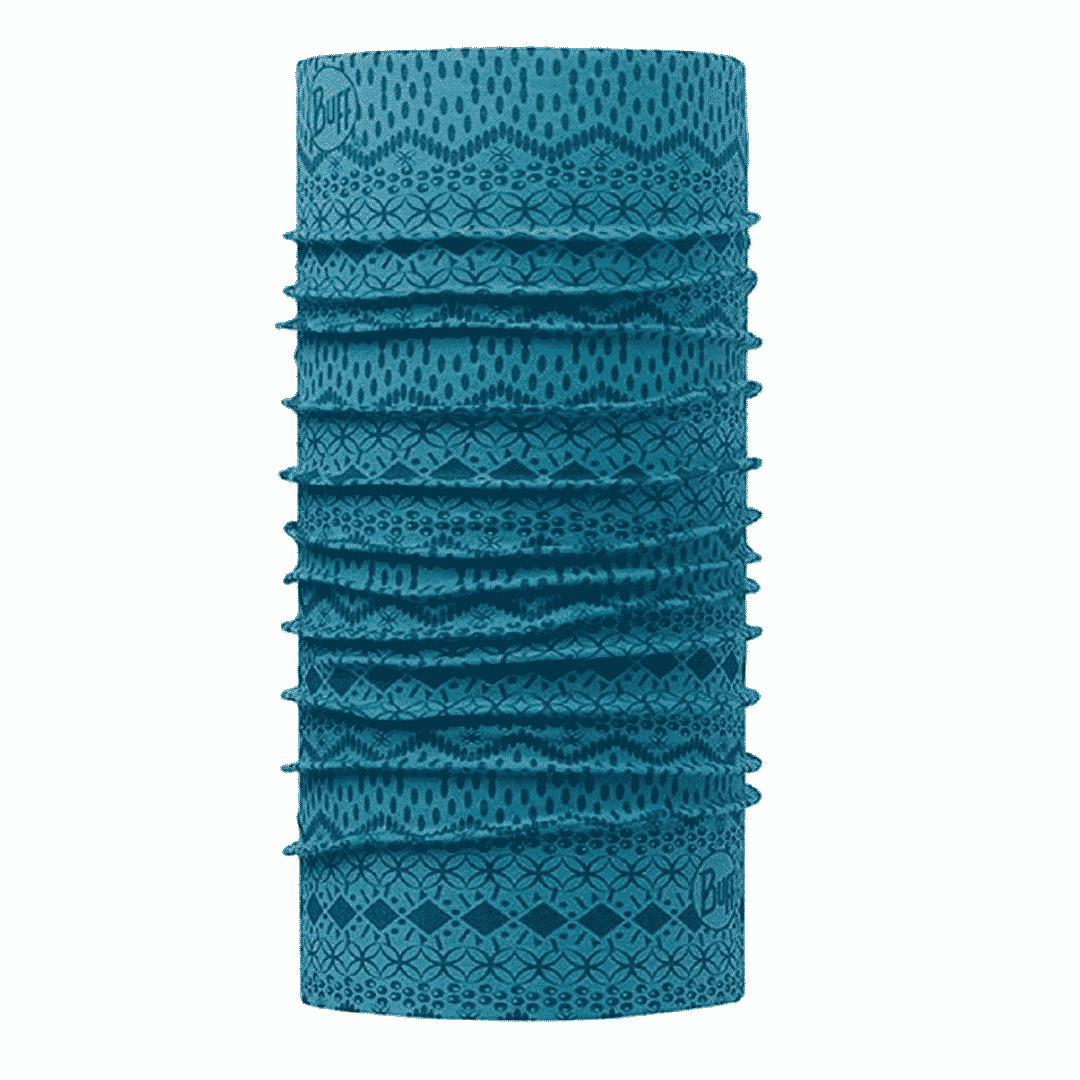
Camping Equipment
For overnight hikes, your camping equipment can make or break your trip. Here are some backpacking essentials to make your night in the wilderness more comfortable:
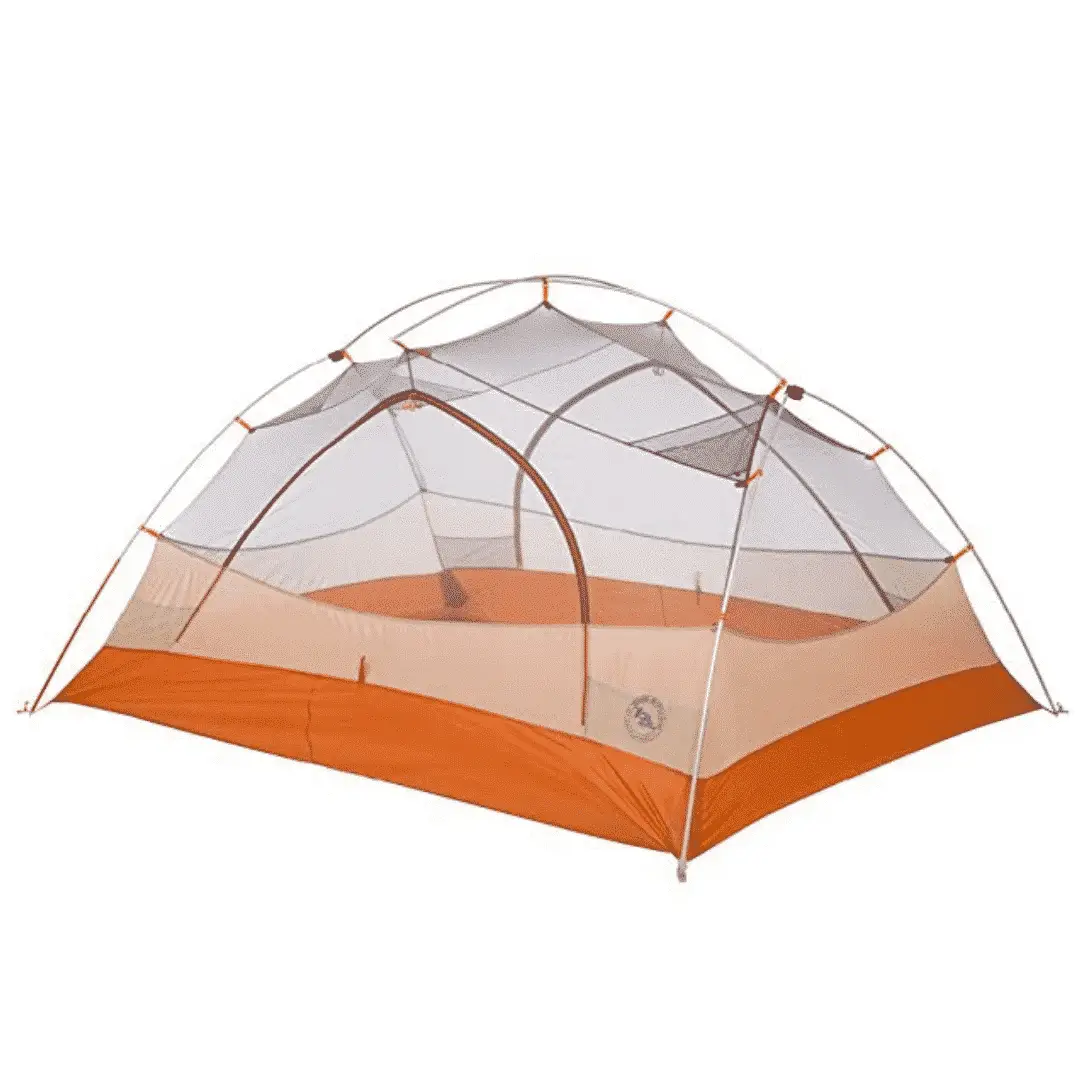
For multi-day hikes, you want to pack a light-weight tent that can handle outdoor elements like wind and rain.
My go-to tent is the Helio 2 Person 4 Season Hiking Tent . It’s small enough to fit into the bottom of your pack and weighs only 2.45 kg.
The right sleeping bag is crucial to getting a good night’s rest on your overnight backpacking trip.
When I first started multi-day hiking, I used the same cheap sleeping bag I bought for OppiKoppi. BIG MISTAKE. I froze my butt off and didn’t sleep a wink.
For my next trip, I added the First Ascent Ice Breaker Down Sleeping Bag to my hiking packing list. It has a comfort rating of -3°C and an extreme rating of -18°C. The bag weighs 1.62kg and is made from responsibly sourced down filling.
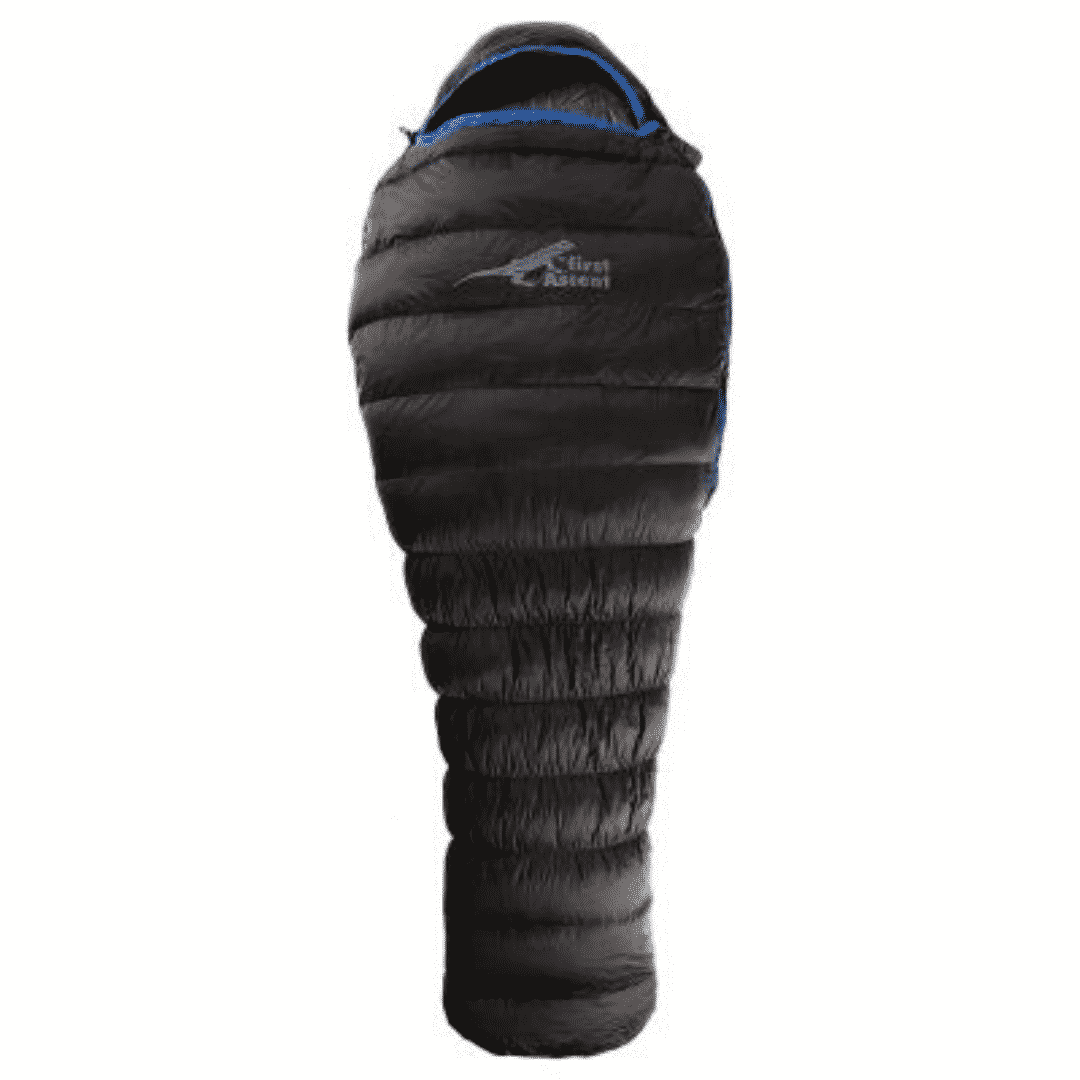
Sleeping bag liners aren’t necessary, but they go a long way if you’re someone like me who struggles with staying warm.
Without a doubt, one of the most underrated items on an overnight hiking checklist is an insulated mattress .
After sleeping on a yoga mat inside a Drakensberg cave , I had the worst sleep in my life. I kept on getting cold, my entire side would go numb, and I could never get comfortable.
When I got back home, I invested in First Ascent Ultralight Insulated Mattress . It’s light-weight, takes up hardly any room, and insulates your body heat, so you don’t freeze to death at night.
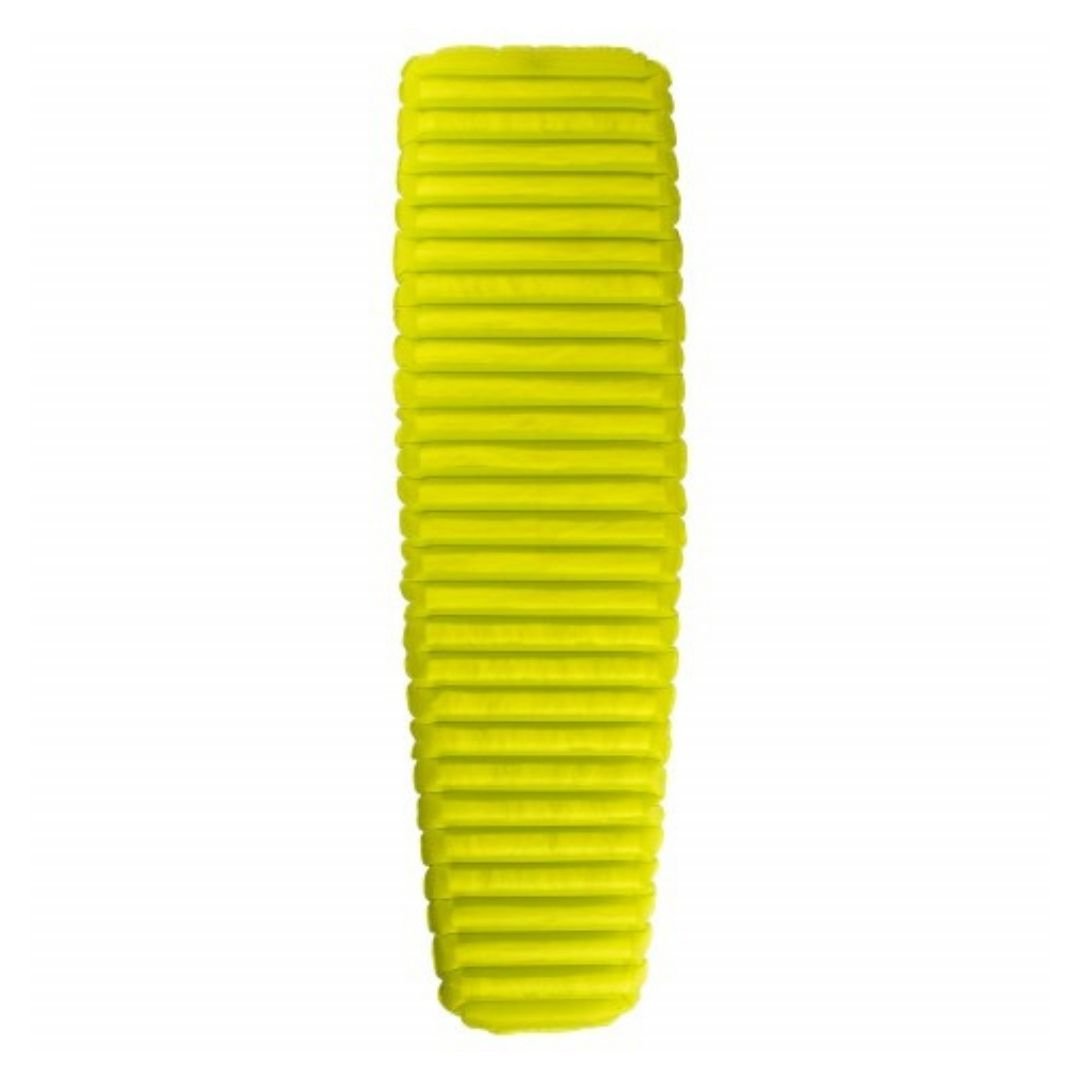
For some reason, I never bought a hiking pillow until my overnight hike to Tugela Falls . In the past, I used a neck pillow or my backpack.
After taking the plunge and buying a self-inflating pillow, I’m never going back. The First Ascent Deluxe Pillow is light-weight, compact, and comfy.
When hiking and camping in the wilderness, one-ply toilet paper is the way to go. It’s the best for the environment as it breaks down quicker than two-ply.
You should always pack a plastic bag to practice leave-no-trace principles and keep the trail waste-free.

After one or three nights camping in the wilderness with no showers, you’re going to feel gross.
Packing baby wipes can help you feel a bit cleaner, especially if there aren’t any rivers to swim in. Just don’t bring scented baby wipes, or you might attract hordes of bugs.
You never know when you might need a knife. From cutting rope, opening bags/cans, or cutting something up for dinner.
Duct tape is one of the most useful items you can pack. Your tent pole could snap, and you need a quick fix, or your sleeping pad gets a hole.

Kitchen Equipment
The best part of any backpacking trip? Taking your pack off, putting on your flip flops, and making a delicious cup of hot chocolate with mini marshmallows! Here are the kitchen essentials you need to survive a night or two in the wilderness:
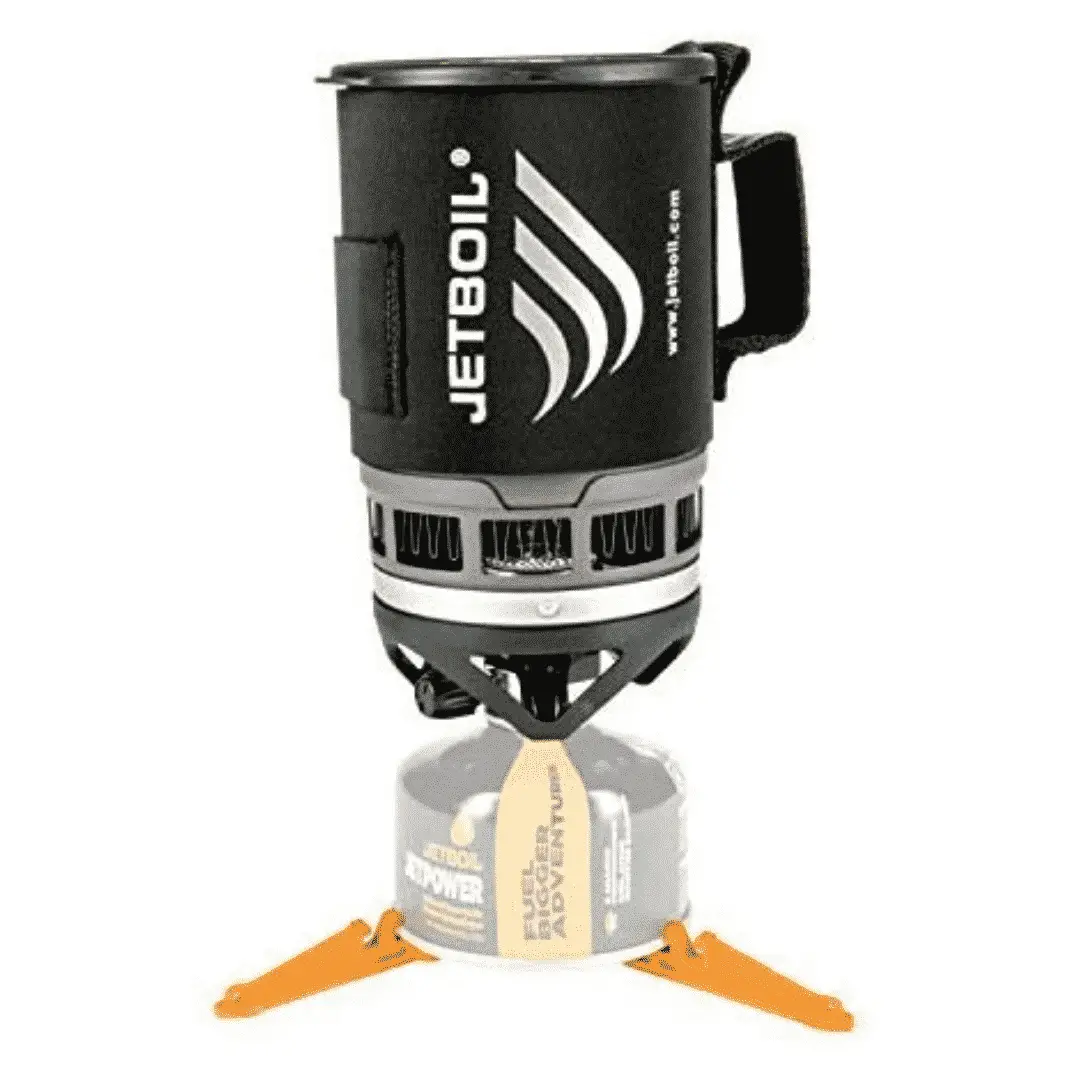
A Jet Boil is an investment, but it will change your life. It’s a nifty device that boils water in less than five minutes!
Plus, most Jet Boil’s come with a 2-in-1 pot and bowl, helping you save space in your pack. Just don’t forget the fuel!
Always pack a lighter. Even if you think you won’t need it, chances are something will happen, and you will.
Plus, it’s always a good time to have a spliff on a mountain at sunset.

I tend to DIY some trail mix on multi-day hiking trips, throw in a few energy bars, and dried food.
At Outdoor Warehouse, you can buy dehydrated food packs , which are super light-weight but a bit pricey. Don’t forget to bring along some instant coffee or a coffee press if you don’t mind the extra weight.
A spork is an excellent backpacking utensil. It doubles as a spoon and a fork, meaning that’s one less thing for you to pack.
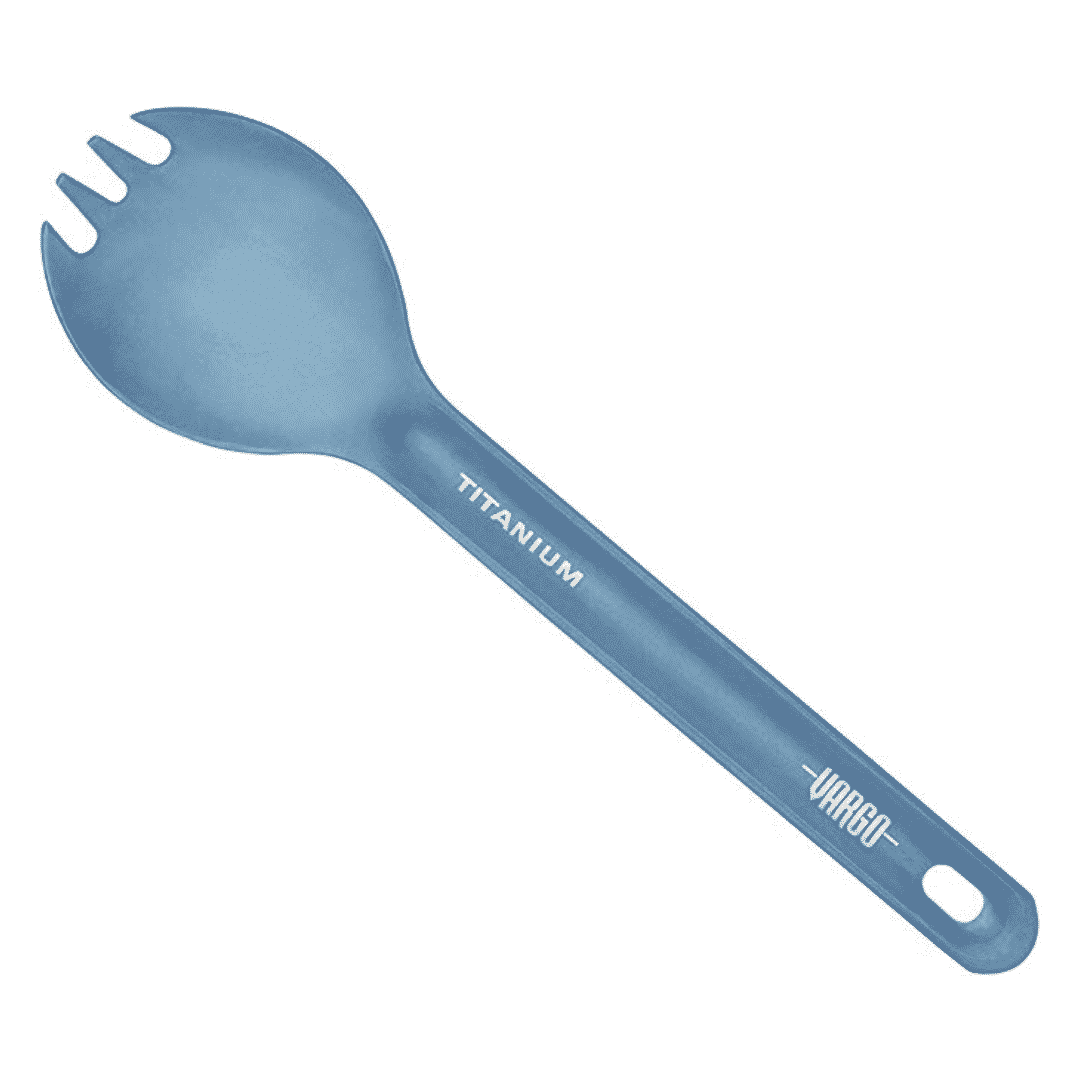
Pack a mug for your coffee or tea. You can clip your mug to the outside of your bag if you’re running out of space.
Bring along a small water bottle to use at the campsite at night.
It’s super useful for when you’re cooking with your Jet Boil or when you need to clean your pots and utensils.

I usually decant a small amount of dishwashing liquid into a travel-sized bottle and pack a small cloth.
It makes the clean-up process in the evening and morning that much easier!
Electronics Equipment
You don’t need a lot of electronic equipment for a hike, but here are a few essentials you may want to pack:
Tip #1 for making your battery last longer, put it on Airplane Mode.
Tip #2, always add a fully charged portable charger to your hiking packing list.

For the casual photographer, your smartphone camera is perfect for multi-day hikes.
However, if you’re someone who wants to shoot landscape or get fancy with astrophotography , you’ll need to pack a camera.
I currently shoot with a Canon 80D and the 18-35mm 1.8 fs Sigma Art lens , but mirrorless cameras from Canon, Sony, and Fuji are a better light-weight option.
You only need to pack a tripod if there are specific shots you need, and stability is a must!
I use the Manfrotto Traveller range.
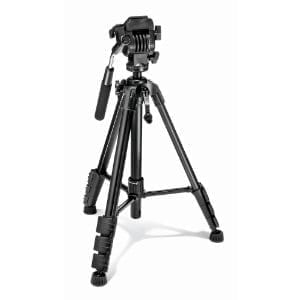
What are your essentials for a hiking packing list? Hit ya gurl up in the comments!
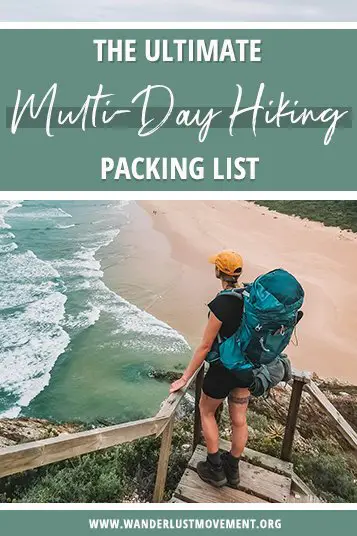
About Lauren Melnick
Lauren Melnick is the founder of Wanderlust Movement, Wander to Here and is a South Africa travel blogger. She's been travelling the world as a full-time freelance writer since 2016 and has visited over 40 countries.
When she isn't typing up a storm, you can find her conquering overnight hikes around the Western Cape, rock climbing, and hosting sold out group travel trips around South Africa, Namibia and Morocco.
Reader Interactions
Leave a reply cancel reply.
Your email address will not be published. Required fields are marked *
This site uses Akismet to reduce spam. Learn how your comment data is processed .
Love The Content?
- Privacy Policy
- Terms of Use
- Affiliate Disclosure
Overnight Backpacking Checklist: What to Pack

- Post author: Hiking People
- Post published: August 3, 2021
- Post category: Getting Started / Hiking Tips
- Post comments: 0 Comments
For beginners, overnight backpacking is a milestone to be achieved in their outdoor lives. Of course, staying a night away from your home in unfamiliar territory and facing the problems of that on your own is essential to be called an “outdoor adventurer” as a start.
Besides, overnight backpacking can be a great experience as it takes you away from the loud noises, the bright night lights and the polluted air of the city. It revitalizes your body through tough activities, exposes you fresh air and helps you regulate your sleep cycles; all being essential for your health. It can be frightening for beginners. The most common mistake beginners make is that they overpack. A heavyweight backpack is a killer for a good backpacking experience. The problem becomes even worse when they find out that even after all that weight, they have forgotten something useful.
So the first challenge that a first timer must face is that they must stay as lightweight as possible and still cover all they need i.e. carry only the essentials. So here is a checklist for an overnight backpacking trip.

Boots are the foundations of your backpacking trip. Bad boots can ruin the whole trip. So choose carefully here. Choosing your boots depends on what kind of terrain you will be walking on and for how long.
For a simple trail, you can use La Sportiva Mid GTX Hiking Boots. But if you are going through some rough terrain, our recommendation would be Asolo Fugitive Gore-Tex Boots. They can handle almost anything they step on. If you have mountains to climb, then La Sportiva Spantik will do the job.
2. Backpack

The size of your backpack depends on the time duration of your hike and also on how prepared you want to go; either you go fully prepared like heavy first aid kits or just pack the essentials. There are a lot of options on the market like Osprey, Gregory, Granite Gear, etc. Gregory Baltoro is a good option as it has enough capacity and a rigid frame while weighing just around 4lb. It is comfortable and can be used in all types of hikes.

Camping tents are essential when going on an overnight trip. The type of tent depends on what kind of environment you will be going and what kind of weather you will be facing and space that you want for yourself. The weight of the tent also matters as you don’t want to carry too much weight.
Nemo Hornet Ultralight Backpacking Tent is a great option as it is just around 2lb and provides adequate weather protection. However, if you are going for someplace with more rough weather like mountaintops, for example, then ALPS Mountaineering Lynx 2 is the option for you.
4. Sleeping Bags and Pads
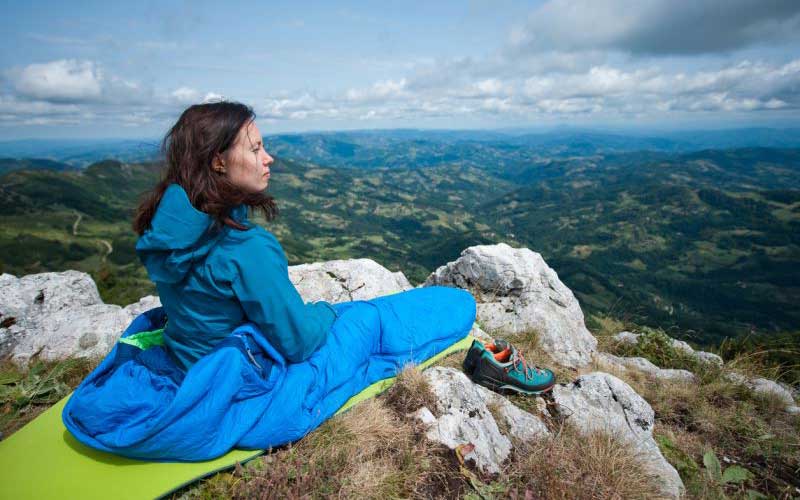
Sleeping bags are required to keep you warm through the night and ensure comfortable rest throughout the night. But sleeping bags alone are not enough to keep you insulated.
You would still need a sleeping pad to keep you properly insulated.
The higher the R-value of the two, the higher the insulation they provide. When choosing a pad and a bag, there are no recommendations as it really comes down to what kind of weather you are going to deal with, and so, you must choose the both with the right R-value, otherwise, you might too warm or might not be warm at all.
5. Socks

At first, hiking socks seem expensive. But they developed specifically for this purpose. The normal cotton socks that you wear to work just won’t work in the rough terrain of the wilds. A lot of things matter while choosing your socks, e.g. height of socks, material and cushioning. Smartwool and Darn Tough are the recommended brands here which will provide you with adequate protection.
6. Water Bottles

Staying hydrated throughout the hike is very important and so you must make proper arrangements to stay hydrated. The volume of water that you would need depends on the weather. But still, you should have ample water storage with you at all time.
We prefer water bladders over water bottles because they don’t take a fixed amount of space. And they can hold a large volume of water which is necessary during an overnight trip.
7. Clothing

The clothing mainly depends on the weather. But it is recommended that you always keep spare clothing as there can be mishaps along the way like clothes getting a lot dirty or getting wet in which case you might catch a cold. So always keep spare clothing and keep separate warm clothes for the night because it gets cold no matter what the season.
You may want to get yourself some water-resistant and weather resistant pants and jacket like the Marmot Minimalist pants and jacket which are weather resistant and warm. Other than that, you should also keep a towel to keep you dry.
8. Food

Food is an essential item during the hike (well duh!), but some people overdo it by packing too much food and then dragging that extra weight with them which can ruin their hiking experience. Each person requires 2500-4500 calories depending on height and weight.
Fresh food is better if you are going for a one night trip. Otherwise canned food is a better option if you are going for a longer trip.
You would also need a pocket-sized canister stove like an MSR MicroRocket Stove or a liquid stove if you are in cold weather like MSR Whisperlite. A Snow Peak cooking set would suffice with that.
9. Knives and Multi-Tools
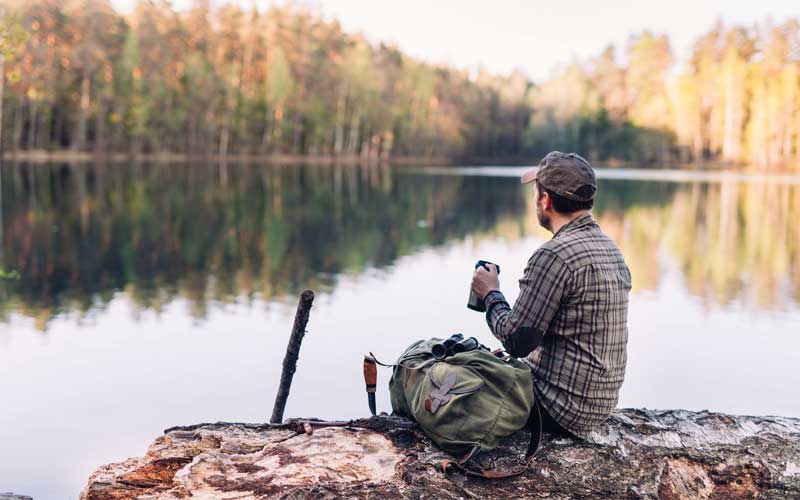
During an overnight hike, you would come across a lot of issues that would require tools to be solved. For that reason, you must have multi-tools and knives to help you with that. A Leatherman Multi-Tool is a good choice as it will everything you need depending on the number of tools you have.
You should also have a separate knife as the knife in the multi-tools is usually too small. Make sure you buy a fixed blade knife. A fixed blade is recommended over a foldable blade because of durability.
You can also consider a tomahawk if you are going for hunting or you think you might need it for wood works on the wild to make shelters for example. But all this depends on your enthusiasm and how adventurous you want to be. SOG is a good brand to pick a tomahawk.
10. Navigation

Now we all know that these days, technology has made life much easier. Our cell phones have everything we need today for navigation. But in the end, it is technology and unreliable nevertheless. The batteries can always die out or the phone can get damaged or you might not be to get proper service.
Always keep a paper copy of maps of the place you are going. Also, keep a compass with you as well. You never know when you might be lost in the jungle. Keeping a compass and a paper map will come in handy in case you have to find your way back home.
11. Waterproof Cases
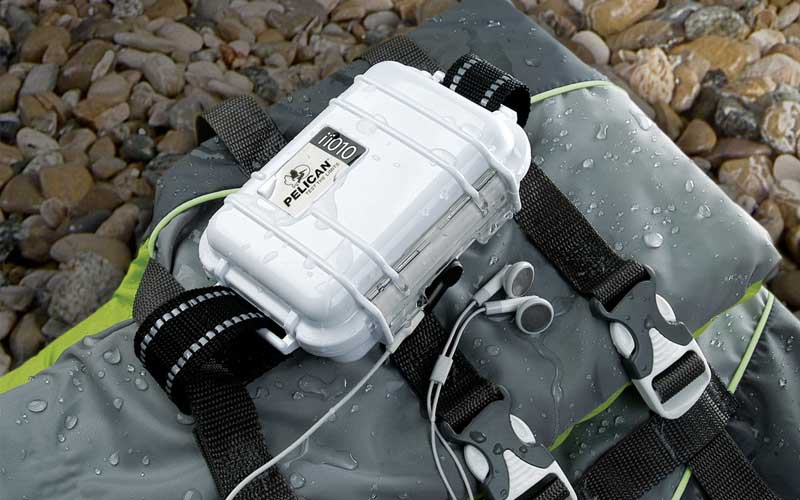
If your hike includes going through a narrow water stream or a waterfall, then bringing waterproof cases is always a good idea. Waterproof cases add extra protection to your sensitive gear like cameras, cell phones or your clothes, in case they are not waterproof.
Sometimes, unexpected rainfall might hit you, and you can be in a lot of trouble if you are not prepared then. Waterproof cases like the ones offered by Pelican and Seattle Sports are good for protecting your gear.
12. Medical Kit

In the wild, there can be many things that can cause injury to you. Since you are away from your routine city facilities, any unlikely event can be a bigger problem than usual. Any physical injury can cause a lot of problems and will make it a lot harder for you in the wild to deal with such a problem. Furthermore, any cut or scratch, if not treated properly, can become infectious which is dangerous. Then there are insect stings that are another problem.
Having a medical or a first aid kit is essential for a hike. You might have to deal with any kind of injury. It is necessary to sterilize wounds or cuts that can potentially become infectious. It is also necessary to deal with allergic reactions. Medical kits can be made at home by putting together some aseptic cotton swabs and prescription medicines, anti-sting treatment or can be bought at the go. So it is really a personal preference.
13. Trekking Poles
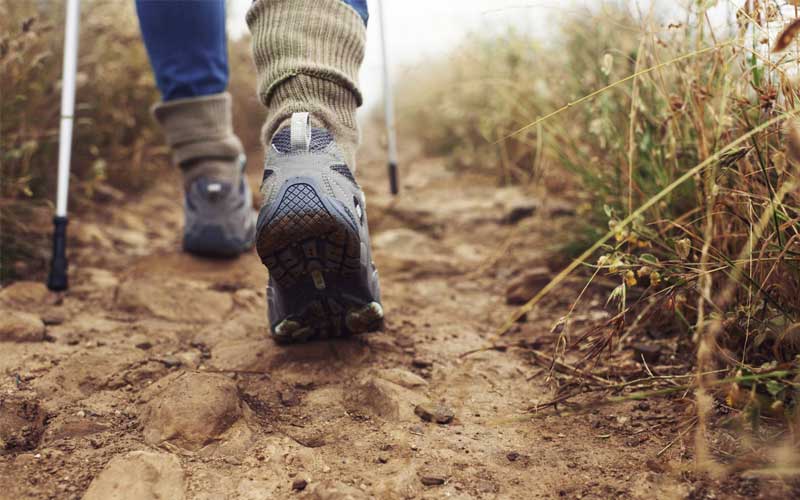
Trekking poles are another great equipment to bring with you on a hike. They support your back and knees as you walk and down hills preventing knee and ankle pain. Knee and back pain can be a huge problem due to jerks while moving downhill and can ruin all your hiking experience.
Trekking pole like Alpine Ergo from Black Diamond is a good pick. However, Vario 4 Carbon offered by Komperdell is a great all-rounder being lightweight and durable.
14. Water Purification System

Let’s be very clear when it comes to diarrhea, it is a nightmare for a hiker. It can prove to be fatal in the wild as you lose a significant amount of water and electrolytes. Plus other stomach infections. Most of these diseases come from water. Clean water is essential for hiking. Apart from having a water reservoir of your own, you might still need water along the way as your water reserves run out. It is necessary that in such cases, you must have a water filtering system. Water purification system consists of a water filter and further water treatment. You can choose either a pump filter or a gravity filter.
Pump filters require manual force but are cheap whereas gravity filters don’t require any work but are expensive and can also be heavy. There are also ultralight filters to choose from but they are not as efficient.
Further water treatment is required of the water for killing small bacteria and viruses which the filters usually don’t filter out.
Katadyn Micropur Tablets are the most famous water purifiers, easy to carry and a great backup. Further ways of treatments include UV light, boiling. The treatment makes sure the water is clean from microbes that passed through filters.
Further Tips for Overnight Backpacking
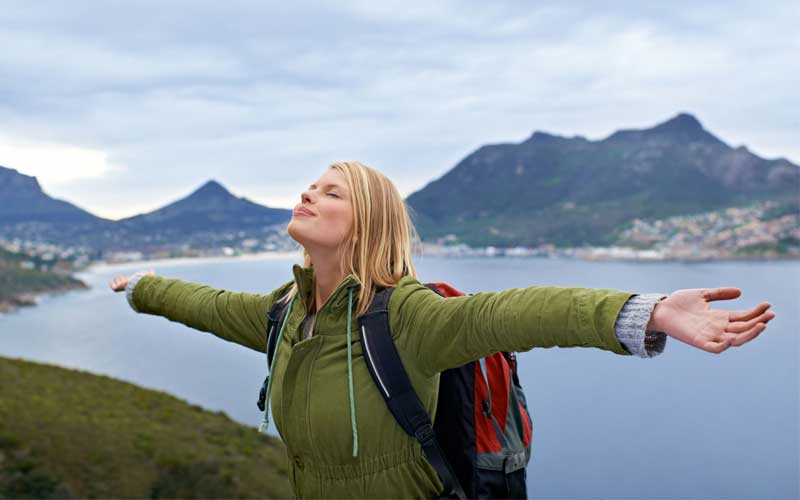
If you have covered all the above requirements, there are always small stuff you can do that can help you further smooth your backpacking experience.
Bring snacks with you on the hike. You need to keep a high energy level when on a hike and snacks do just that. They provide an instant dose of energy. Keep a bag of dry fruits with you to keep your hunger satisfied and your energy, full.
Always bring a torch with you on an overnight hike. It can be pitch black in the dark so you would need light to navigate. Maglite Torch is best for camping. Furthermore, keep a headlamp with you as holding a torch can be inconvenient at times when you are working on something.
Make sure that you bring extra batteries and a power bank with you to keep your equipment i.e. cell phones, cameras, light sources charged. You should also have plenty of energy along the way. Power banks will add to your weight so it’s better to carry extra batteries.
Take extra clothing with you just to remain on the safe side. Your clothes might get dirty or wet and you would want to change them should such a situation occur. So always a good idea to carry extra clothing. Speaking of clothing, don’t forget your towel. People think towels are insignificant while packing. But it is only during the hike that they realize its importance. But it is too late by that time.
Other small stuff includes a small shovel or trowel, which can be part of your toilet kits. Insect repellent, very important. There are lots of mosquitoes in the wild and other insects that sting. Apart from having a painful sting, these insects also serve as a vector for many dangerous and even fatal diseases.
Now, you are good to go. Happy hiking!
Share with your Friends Share this content
- Opens in a new window X
- Opens in a new window Facebook
- Opens in a new window Pinterest
- Opens in a new window LinkedIn
- Opens in a new window Reddit
You Might Also Like

Are Duck Boots Good for Hiking: A Useful Guide
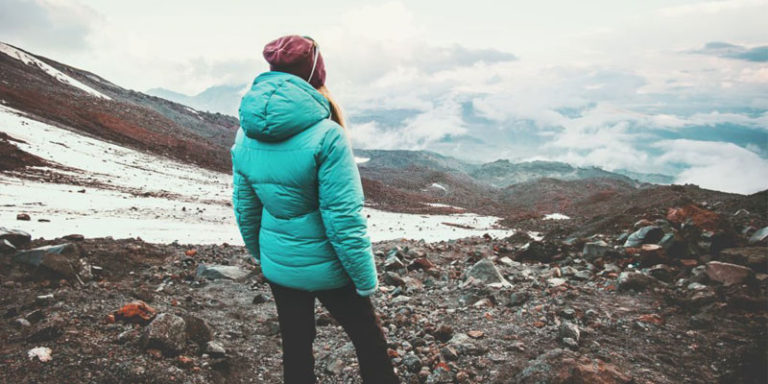
Difference Between Hydrophobic Down and Synthetic Insulation
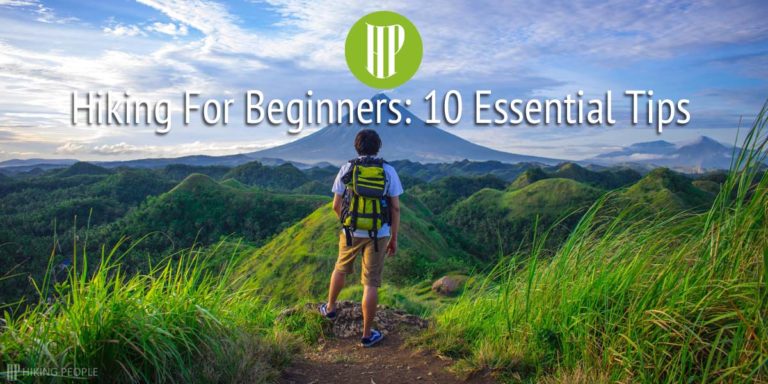
Hiking Essentials for Beginners: 10 Useful Tips
Leave a reply cancel reply.

Overnight Hiking: What Should I Pack for an Adventure?
- Pack essentials like a map, compass, tent, sleeping bag, and food for overnight hikes.
- Choose a well-fitting backpack that is waterproof and lightweight.
- Balance the weight of your pack by only taking necessities and opting for multipurpose items.
- Stay hydrated using water filters or purifiers and nourish with high-calorie, lightweight snacks.
- Sleep systems should include an appropriately-rated sleeping bag, pad, and lightweight tent or hammock.
- Navigate with map and compass skills; acquire necessary permits and observe trail markings.
- Follow trail safety and “Leave No Trace” etiquette; carry a well-prepared first aid kit.
- Protect gear from elements with rain covers and dry bags; plan for all weather types.
- Plan hikes based on your skill level, fitness, and interests; consider guided hikes for safety.
- For rest, invest in a comfortable tent, sleeping bag, and sleeping pad suitable for the weather.
Embarking on an overnight hike? Wondering what gear is crucial? You’re not alone. Every trailblazer questions their pack before venturing into the wild. Confusion ends now—our no-nonsense guide lays out just what you need. Cut the clutter with our overnight hiking gear checklist, designed to make your adventure safe, comfortable, and unforgettable. From the best backpacks to smart packing strategies, gear up and get ready to conquer the night with confidence!
What Should I Pack for an Overnight Hiking Trip?
For an overnight hike, bring a map, compass, tent, sleeping bag, pad, food, water, and a stove. Choose backpacks that fit well and can hold all your gear. Pack light, but remember your essentials like a first aid kit and clothes. Experienced hikers suggest balancing what you need with the weight you can carry.
Essential items for your hiking gear checklist
Make a list of must-haves before you leave. Your safety and comfort come first. Take things like water filters, headlamps, and a shelter, like a tent or hammock. Don’t forget your sleeping bag and pad. They will keep you warm and cozy at night. For clothes, pack layers you can put on or take off. You’ll need them as weather changes. Keep a knife or multitool too. It will help with food or fixes on the trail.
How to choose the best backpack for your adventure
A good pack is key for a fun trip. Look for one that fits your body and can carry all you need without hurting your back. Try them on in the store with weight inside. See if it feels good. The best backpacks have lots of room, are strong, and not too heavy. They should also keep water out. Getting the right one means a better hike!
Strategies for packing light without sacrificing necessities
Packing light is a skill. It means taking only what you really need. One way is to choose gear that does more than one thing. A pot lid that’s also a pan, for example. Pick high-calorie food that’s light, like nuts or energy bars. Think about using stuff you find on the trail. Like wood for a fire, instead of your own stove.
The balance between comfort and weight: tips from experienced hikers
Find the middle ground between comfort and weight. Ask yourself, ‘Do I need this, or just want it?’ Keep asking as you pack. It’s a tough choice, but every ounce counts on the trail. Remember, the lighter your pack, the easier it is to hike. And that means more fun and less pain!
How Do I Stay Hydrated and Nourished on the Trail?
You need water and food to stay strong on hikes . For water, pack a few ways to get it. Carry bottles or a bladder. And have a way to clean water you find. It’s key to never run out. There are many trail hydration solutions. Like filters or purifying drops. Use them to make stream water safe to drink.
Food keeps you going too. Plan your meals with care. Think about what you eat at home. Then find ways to make it work on the hike. You want foods that last and don’t weigh much. Nuts, bars, and jerky are good. They give you power without much weight. This is what we call high-efficiency hiking snacks. They take up little space and keep you full.
Don’t forget to cook. Some like to make hot meals on the trail. If so, bring a small stove. Check how it works before you leave. That way, you know you can cook when you stop for the night. And pack just what you need for meals. That might mean pre-made or dried foods.
To keep it simple, make sure all your trail nutrition and food planning fits your trip. Go for power in small bites. And bring just enough. This way you’ll have the energy you need without extra weight.
What Are the Essentials of a Hiker’s Sleep System?
What should I sleep in on an overnight hike? For rest, pack a tent, sleeping bag, and pad. These form your sleep system. They matter greatly for your comfort and safety. Without comfort, your night will be long. Without safety, your health could be at risk.
Let me explain more about hiking sleep systems . You want to stay warm and dry at night. Make sure your sleeping bag has the right temperature rating. It should also match the season of your hike. The sleeping bag should be snug, yet give you room to move.
When choosing a lightweight tent , consider the weather. A sturdy tent is crucial. In wind, rain, and cold, a good tent means safety. It doesn’t have to be heavy to be trustworthy. Light tents are easy to carry and set up. This lets you hike longer with less tiredness.
Now, how about selecting a comfortable sleeping pad ? This matters more than you might think. The ground can be very cold and hard. A pad keeps you warm and gives cushion. Your body will thank you in the morning.
Are there other sleeping arrangements ? Yes! Some hikers like sleeping in a hammock. It’s light and can be very comfy. But, it won’t work everywhere. You need the right trees and weather for a hammock to be good. Choose what feels right for you and the place you’ll be.
So, your sleep system needs a tent, bag, and pad. These keep you cozy and safe. They help you sleep well so you’re ready for tomorrow’s trek. Remember, good rest is key for a great hike!
How Can I Navigate Safely and Effectively on the Trail?
Is it safe to go hiking at night ? Yes, with the right gear and knowledge. What is overnight hiking called? It’s often known as backpacking.
You need solid skills with a map and compass for safe trail travel. GPS devices can help too, mainly in remote spots. But tech can fail, so trust your map and learn to pinpoint your location using it and a compass.
Knowing how the land lies and terrain changes helps too. And don’t forget, some trails need a permit. You should check this before your trip and pay any necessary fees to avoid trouble.
Look out for trail marks like colored blazes on trees or rocks. They show you’re on the right path. Learning pathfinding can keep you from getting lost if marks are hard to see.
So gear up your mind with navigation skills, and as with all outdoor skills, practice these techniques before you need them. With a trusty map, a working compass, and the right permits in your bag, you’ll blaze your own trail without fail.
What Are the Best Practices for Trail Safety and Etiquette?
When you plan for an outdoor night hike, thinking about trail safety and manners is key. First, learn the basics of staying safe and treating nature with respect. This means knowing how to act with wildlife and following the “Leave No Trace” rules to keep the outdoors beautiful for everyone.
What is overnight hiking called? Overnight hiking is often referred to as backpacking.
To hike smart, you want to be nice to the land, animals, and other hikers. A big part of this is overnight trail etiquette. When you meet others, stay to the right and let them pass. Camp only in spots that are meant for sleeping, and make as little noise as you can, so you don’t bother wildlife or people.
For wildlife safety on hikes, watch animals from afar, and never feed them. Feeding wild animals can make them rely on humans and hurt their health. If you see wildlife, stay calm, make noise, and back away slowly if they notice you.
Another big rule is “Leave No Trace.” This means you take all your trash with you. Leave plants, rocks, and historical stuff as you find them. Be careful with fire, use a stove or clear spot, and put any flames out cold before you leave.
If you’re alone on the trail, tell someone where you’re going and when you’ll be back. Hiking with friends can be safer because you can look out for each other. Make a plan with your group and stick together.
Remember, when you’re out there hiking at night, it’s not just about you. It’s about taking care of the trails and everyone who enjoys them. So, pack your bag and tie your shoes. It’s time for a safe and fun adventure with nature!
How Do I Deal with Emergency Situations and First Aid?
Is it safe to go hiking at night? Yes, but you must plan well and pack the right gear. Let’s talk about how to pack for unexpected events and injuries on your hike.
Hikers should bring first-aid kits that match their skill level. In your kit, include wraps for sprains, bandages, and antiseptic wipes. Know how to use all the items before you start your trip. Check the kit every time to ensure it’s full and items are in good shape.
If you get caught in bad weather or hurt, you might need emergency shelter. Bivouacs, or bivy sacks, are small, lightweight shelters that keep you warm and dry. Some use tarps or large trash bags for makeshift protection. Either way, stay calm and think of how to stay safe and warm.
Sometimes, gear breaks when you’re hiking. To fix items on the go, pack a simple outdoor gear repair kit. Include a multi-tool, some duct tape, and strong thread with a needle. These can repair tents, backpacks, or even boots in a pinch.
Common trail ailments include blisters, cuts, and bug bites. Use moleskin or medical tape for hotspots on your feet as soon as you feel them. Clean cuts right away and cover them. For bug bites, bring a small tube of hydrocortisone cream.
Dealing with emergencies and first aid sure can seem daunting. Remember, planning ahead and knowing how to use your safety gear makes all the difference. Stay safe and enjoy the beauty of the trail, day and night!
How Can I Be Sure My Gear and Essentials Are Protected from the Elements?
Choosing the best backpack rain protection means you need a good cover. It should fit tight and keep water out. But remember, you need more than just a cover. You should also pack items in dry bags or plastic bags inside your pack for extra safety.
When you think of weather on trail hikes, plan for all types. Rain, sun, wind, or snow could surprise you. Check the weather forecast and think about the season. Bring gear that can deal with cold or hot weather, and always have a rain jacket.
How long can a durable overnight backpack last in rough weather? Quite long if you pick the right one! Look for a backpack made for harsh climates. Read reviews to see what worked for others. Good backpacks have tough fabric and strong seams.
If you get caught in bad weather, use what you have with you. Put on all your warm clothes. Use a garbage bag as an extra layer over your clothes or pack. Be smart and use what you have to stay dry and warm.
Remember this when packing for a hike. Keep it fun, safe, and dry out there!
What Should I Consider When Planning My Hiking Itinerary?
When starting to plan your overnight hiking trip, ask yourself: What are the key factors in successful multi-day hike planning?
The quick answer is: You should consider terrain difficulty, distance, your fitness level, and the trail’s popularity.
With multi-day hikes, planning is everything. You’ll need to choose a trail that matches your skills. Are you a newbie? Look for “best overnight trails for beginners”. These paths are easier to tackle and won’t leave you in over your head. Trails that see more foot traffic are also good to start with because they are often well-marked and maintained.
Another thing to think about are guided overnight hikes. A guide can make your hike safer. They often know the trails like the back of their hand and can teach you much along the way.
When planning, also weigh in what you like to see and do. Love lakes? Find a trail with a water view. Enjoy bird watching? Choose paths known for feathery friends. By tailoring the hike to your interests, you’ll have more fun.
Always match the hike to what you can handle physically. Start with shorter trails if you’re new. This way you’ll enjoy your time outside and come home eager for your next hike. Remember, select treks that feel right for you and the joy will follow.
What Should I Sleep In on an Overnight Hike?
You’ll need a good sleep system to rest well on the trail. This should include a tent, sleeping bag, and pad. A tent keeps you safe from the weather. A sleeping bag keeps you warm all night. And a pad makes the ground softer for sleep.
Choose a lightweight tent for less carry weight. Picking the right tent matters a lot. Will it rain or snow? Do you hike in warm or cold places? Ask these questions before buying.
A comfy sleeping pad is a must-have. It cushions you from sticks and stones. It can also keep cold away from your body. Some pads are light but still cozy. They roll up small in your bag.
For what you’ll sleep in, bring a sleeping bag that matches the weather. Cold nights need bags that keep heat in. Warm nights call for lighter bags. Check the bag’s rating for temperature. This tells you how warm it will keep you.
Remember, you need rest to hike well. So make sure your sleep gear keeps you cozy and safe. A good night’s sleep gives you the energy to keep hiking the next day.
We’ve covered everything you need for a successful overnight hike – from packing essentials to meal planning, sleep systems, navigation, safety, emergency prep, gear protection, and planning your trip. Remember, the best adventures balance prepared gear with an agile mindset. Safe trails and happy hiking!

What Should I Look for in a Waterproof Hiking Backpack?
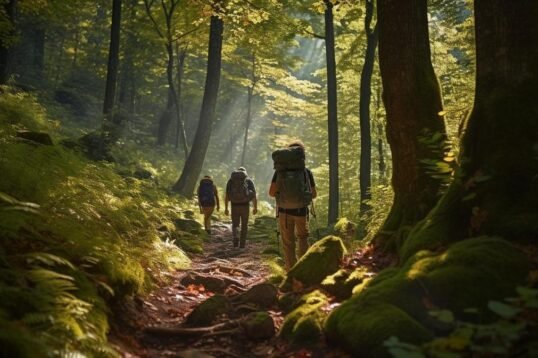
What Are the Fundamental Principles of Hiking Etiquette?
Further reading
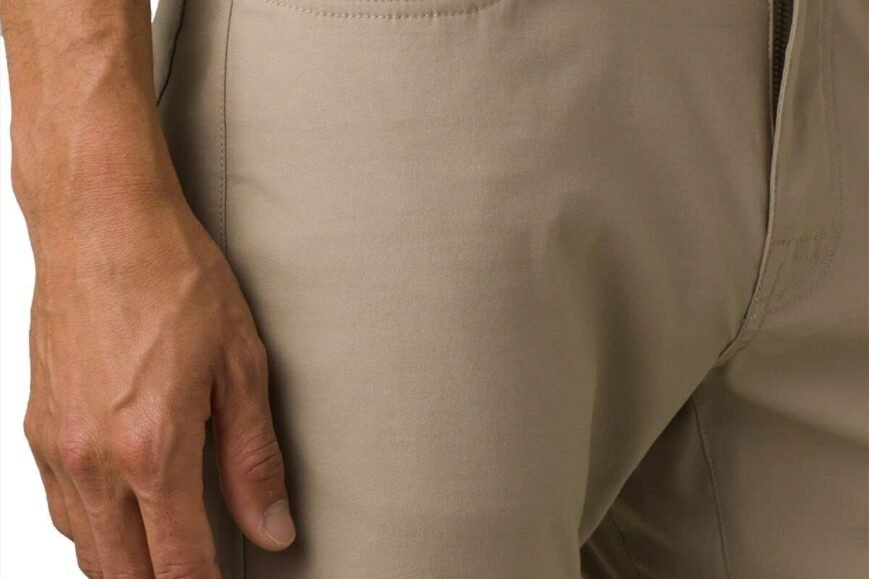
Prana Brion II Pants Review: A New Benchmark for Outdoor Comfort
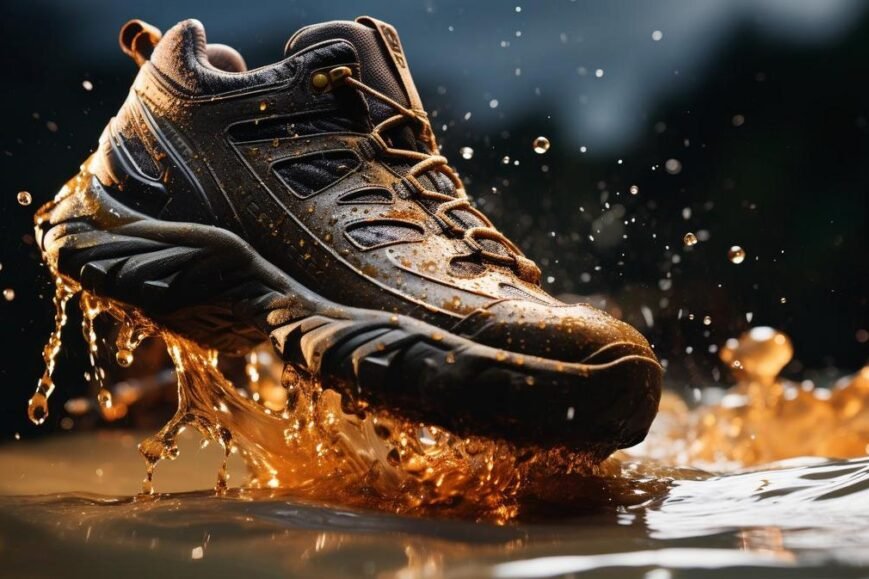
What Makes Hiking Shoes Waterproof?
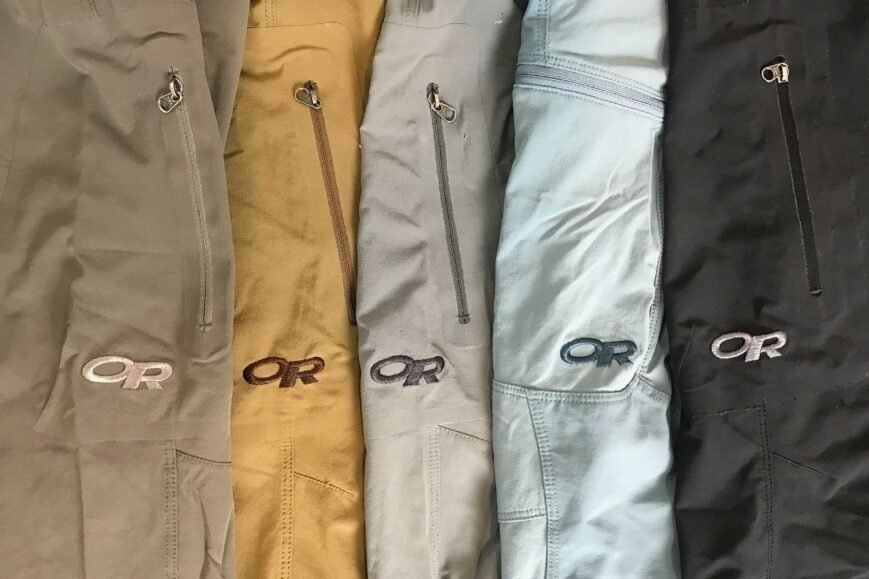
Outdoor Research Ferrosi Review – Your Next Hiking Pants
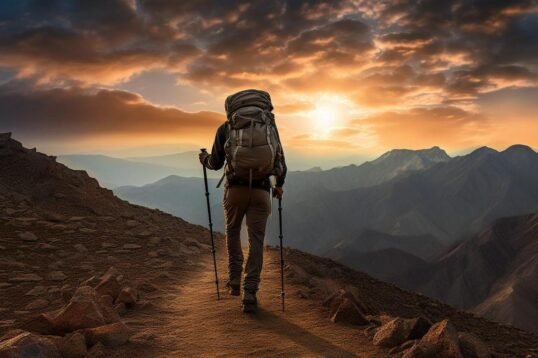
How to use trekking poles for optimal hiking?
It looks like you're using an ad-blocker.
If you appreciate our content, kindly consider supporting our site by disabling your adblocker. Our ability to continue producing high-quality content, which you can enjoy without any cost, relies on the revenue generated from advertisements.
Username or Email Address
Remember Me

- Down Sleeping Bags
- Backpacking Tents
- Hammock Compatible Sleeping Bags
- Advanced Synthetic Sleeping Bags
- Replacement Parts
- Sleeping Pads
Your Cart is Empty
- $0.00 Subtotal
- Continue Shopping
- Why We Exist

The Ultimate Overnight Backpacking Checklist
March 19, 2021 10 min read
After picking the ideal date and finding the perfect backpacking trail, you're super pumped and literally counting down the days until your next trip. As the anticipation builds and the happy vibes get more intense, you know you need to start packing for the adventure. But what items should you include in your overnight backpacking checklist?
Put simply, the items you carry for your overnight adventure will depend on:
- The features of the terrain you're planning to explore
- The duration of your trip
- The time of the year or expected weather
- The weight you can comfortably carry
- Your personal needs and preferences
Be sure to consider all of these factors when you begin to plan your checklist. Further, if you are new to backpacking, you may find it tricky to strike the right balance between what is important and what is unnecessary. This checklist will help you stick to the essentials.
Remember, the trails will be full of twists, climbs, and surprises, and you don't want to discover you forgot a crucial item like a waterproof jacket when you're in a remote stretch and heavy clouds begin to gather above you. It's important to make a list of everything you'll need.
To help you skim through this post quickly, we've categorized our overnight backpacking checklist into six groups:
- Kitchen and food
- Clothing essentials
- Camping gear
- Trekking and navigation equipment
- Emergency kit
- Personal hygiene
We've further separated each group into three sections:
- Must have items: The important things you need to carry
- Nice to have items: Comfort items that aren't really necessary
- Pro tips: Expert advice to improve your backpacking experience
Let's get started.
Kitchen and Food Checklist
Must-have items.
You'll need to replenish your energy levels with nutritious food after an exhausting trek. Be careful, though, to watch the weight of the food you pack. Try to bring smaller items like energy bars, an apple, and nuts to fuel you as you hike. For main meals, pack lightweight, calorie-dense, and easy-to-make foods like trail mix, oatmeal, pasta, powdered potatoes, instant refried beans, and a sauce. If you love hot drinks, carry some instant coffee or chocolate packets.
You'll need enough water to hydrate, prepare meals, and wash up. Since you can't afford to solely rely on water sources you come across along the trail, it's critical to bring your own. As a rule of thumb, carry 1 liter of water for every two hours of trekking. Use a water bottle for drinking water and a hydration bladder as a reservoir.
Water Filter
To drastically cut down your weight load, bring along a water filter or purifier to treat and drink water from backcountry streams and lakes.
Backpacking Stove and Fuel
Find an ultralight backpacking stove system that weighs no more than 13 or so ounces. Although the latest stoves consume less fuel and boil faster, you'll still need to carry enough fuel if you want to enjoy hot meals throughout your trip. Also, remember to bring waterproof matches and a firestarter.
Cooking Pot, Dishes, Mug, and Utensils
Instead of packing your cooking gear separately, which will take up more space, go for a compact cook set where everything fits together. The plate, mug, and spork should snuggly fit into the pot.

Nice To Have Items
Extra Day’s Supply of Food
It never hurts to bring additional food. It will come in handy when an emergency such as bad weather forces you to extend your stay in the wild.
After a long day traversing the wilderness, a sip of beer can be rewarding —if you're someone who drinks .
- To make sure you bring the right amount of food, aim to carry the recommended 1.5 to 1.75 pounds of food per day.
- If you want something that closely resembles homemade meals, use a food dehydrator to dry meat, veggies, and sauces before you head on the trail. Then you can then prepare them with your favorite spices.
- Pack food in an animal-proof container to keep bears and rodents away from it.
Clothing Checklist
Down or Synthetic Jacket
For chilly mornings and evenings, you'll need to pack a lightweight, insulated jacket with a hood to keep you warm. Down jackets are more packable, while synthetic ones insulate better when you get yourself wet.
Top and Bottom Base Layers
When you need to get out of your sweaty clothes and stay warm throughout the night, base layers come in handy. Go for wool-based, moisture-wicking layers.
Choose a thin but insulating fabric like a wool shirt. A long sleeve will better protect you from the sun, bugs, and low-hanging branches.
Hiking Pants
You need tough pants that will protect you from bushwhacking while still keeping you comfortable. Ideally, they should be durable, breathable, and a bit stretchable. If you can find one with waterproof fabric, even better.
Quick-Dry Underwear
Not much to add here, we just recommend you get yourself moisture-wicking, breathable, and quick-drying underwear to add to your checklist for overnight backpacking.
Rain Jacket
Regardless of what the forecast says, you really can't afford to on an overnight backpacking trip without a waterproof shell. Get a rain jacket that has wind-proof properties.
Hiking Boots or Shoes
Proper footwear is one of the top backpacking essentials. The boots or shoes you pick should be a good fit for the terrain you plan to visit. Move away from stiff and heavy shoe models and look for something that offers agility, flexibility, and comfort. Wear boots with ankle support if you're heading to uneven or rough terrain. If you know the route well, you should be fine to wear trail running shoes.
Hiking Socks
A hiking shoe needs to be accompanied by comfortable socks. Pack two pairs of hiking-specific socks made of wool. Find a design that will cushion your feet, offer temperature regulation, and has odor-resistant properties.
A hat will protect you from the harsh sun and keep your head warm when the temperatures dip.

They'll reduce glare when the sun is shining too bright and protect your eyes when you're hiking a windy and dusty trail.
Gloves will keep you warm on chilly nights and mornings.
Camp Sandals
When you're done hiking for the day, it's nice to have something light to wear at the camp. Sandals will give your feet a breather and also come in handy when crossing streams.
They'll protect your feet against rain, mud, heavy underbrush, and debris.
- If you've just bought some new hiking kicks , make sure you break into them before your trip by wearing them around the house and neighborhood.
- Whether you like low-cut shoes or high-top boots, choose something that's waterproof.
- Pack some extra pants, preferably the insulated type. They'll come in handy if your pants get soggy or when relaxing around the camp.
Camping Gear Checklist
Everything in your multiple-day backpacker checklist has to be carried somehow, and that means a backpack. For an overnight wilderness adventure, you'll want a backpack of around 50-70 liters. Find one that is super lightweight, comfortable, weather-resistant, and offers great organization. And remember to accompany it with a rain cover.

Sleeping Shelter(Tent or Hammock)
Your shelter is your refuge when sleeping in the wild, protecting you from the elements, bugs, and animals. If you want something that won't weigh you down, consider a durable, high-performance, lightweight backpacking tent . Thanks to gear advancements, you can now find super lightweight tents that gift you the extra space to store personal items, maneuver inside and sleep comfortably.
Sleeping Bag
After a tough trek, you deserve to sleep in comfort and wake up refreshed. And only a quality backpacking sleeping bag can guarantee that. Get a down sleeping bag that's ultra-light, compressible, and easy to pack. It will offer great comfort and last longer than other materials. Or, if you prefer a hammock camping experience, get a hammock-compatible down sleeping bag that's light to pack, yet warm and cozy to sleep in.
Sleeping Pad
A sleeping pad not only cushions but also insulates your body from the cold ground, if you plan to sleep in a tent Ideally, get a lightweight inflatable version made of durable material.
You don't want to fumble around in the dark looking for essentials. A headlamp is a critical piece of gear that should always be part of your overnight backpacking gear. You'll use it when cooking, setting up camp, or adventuring at night.
If you are hammock camping , you might want to bring a tarp. An ultralight tarp will give you some extra cover from the rain and wind during the night and protect you from the scorching sun when you’re napping.
Extra Batteries
An extra pack of batteries for your headlamp or other gear will come in handy in case the current ones unexpectedly run out of juice.
- If you've never set up a tent before, practice at home before the trip, and arrive at the campsite early to get things ready before dark.
- To quickly warm your sleeping bag, fill a water bottle with hot water and place it inside the bag just before bedtime.

Trekking and Navigation Equipment Checklist
Trekking Poles
Trust me, when you're carrying a heavy bag for hours and going through multiple climbs and descents, your knees, feet, and hips take quite a beating. Using trekking poles relieves some of this pressure and redistributes it to your arms. So, don't forget to add it to your backpackers' checklist.
A GPS device will interpret the landscape around you, making sure that you don’t get lost. And when you can't figure out where you are, it will help you find your way with ease.
Water Proof Map and Compass
Although GPS is the go-to navigation tool for many backpackers, it can't substitute an old fashion map and compass. Some areas of your hike may leave you with poor connectivity or none at all. A paper map won't fail you in those moments on the trail.
Carry a lightweight multi-tool that has a small knife, saw, file, and pliers.
Permits, Documents, and Cash
Some parks require a wilderness permit for overnight backpacking. Also, don't forget to pack your identification documents and some cash.
Backpacking Watch
To avoid carrying lots of gadgets, you can get a backpacking watch that can handle the elements, has a tracking feature, measures elevation, and weather conditions. If you decide to set a specific amount of time for each activity, a watch will help you stay organized.
You may bring your phone to the wilderness and use it as GPS or take pictures, but remember it's not made for the harsh terrain—it can easily break or die. Bring it as a backup navigation option and learn how to protect it in the wild.
If you want to capture some beautiful sunset pictures, it won't hurt to bring a camera. Although you might have to shake some weight off your bag to accommodate it. The same goes for binoculars.
- A GPS is never a substitute for a map and compass, so you'll need to learn how to navigate with a paper map . It could save your life.
- If you download a hiking trail app, make sure it works offline effectively before you head out.
- Always study the route in advance and ask other backpackers about trail conditions.

Emergency Kit Checklist
First Aid Kit
Whether it's a one-day or multiple-day backpacking trip, it's always smart to pack a first aid kit. It should be ultralight and contain basic medication, bandages, antibiotic ointment, tweezers, and surgical tape for cuts and blisters.
When you want to send a distress signal, a good whistle blow can travel nearly one and a half miles away. While most backpacks come with a whistle in the sternum strap, not all have one. Check yours to confirm it has it.
To fix broken items when you're away from civilization, turn to duct tape. It's an incredible backpacking aid that you can use to patch holes in your gear, build survival tools, or temporarily wrap a sprained ankle.
Handkerchief
A handkerchief or bandana has many uses in the outdoors. From drying off sweat and cooling off, to treating cuts, swatting away bugs, and cleaning items.
Needle and Thread
When your jacket gets ripped on the trail or your tent gets a bad tear, you might need a needle and threat to temporarily repair the damage. Alternatively, carry some super glue.
Backup Lighter
In case your matches get wet, a backup lighter will save the day.
Pen and Journal
If you like manually recording your adventures, pack your journal and pen.
- Check-in advance whether the trail has reliable cell service. If it doesn't, pack a personal locator that can send out emergency messages.
- Before you set off, contact a trusted family member or friend and tell them about your upcoming trip.
- To send a distress call using a whistle when you're injured or lost let out three loud blasts, each lasting three seconds, and repeat after a minute.
- Another way to signal distress is to start a fire and add wet wood and green leaves to the flames to create thick smoke.
- To further upgrade your survival smarts, it doesn't hurt to read a guide on how to deal with backpacking emergencies .

Personal Hygiene Checklist
Toothbrush and Toothpaste
Don't neglect your oral hygiene when backpacking. Pack a toothbrush and buy a small-size toothpaste.
Toilet Paper and Sanitary Products
You can't carry enough toilet paper when going on an overnight trip. Just make sure you remove the cardboard center core to cut weight and make it more packable.
Biodegradable Soap
Buy a multi-purpose biodegradable soap for washing your body, dishes, and clothes.
Insect Repellent
Biting, buzzing, and crawling insects can really take the fun out of your adventure. So, get a strong repellent to ward off mosquitoes, ticks, flies, ants, and spiders.
Protect yourself from sunburns and skin disorders by packing lightweight sunscreen.
Prescription Medication
If you are under medication, don't forget to include it in your backpackers' checklist.
When you don't want to leave traces of your presence all over the trail, pack a trowel to dig and cover catholes each time you need to go.
Hand Sanitizer
If you think you'll come into contact with other backpackers, carry hand sanitizer. It's also helpful when you want to wash your hands before eating without leaving a soapy trace.
Quick-Dry Towel
Comes in handy when you need to dry off after washing or swimming. It also doubles as a mat when you don't want your gear to get dirty.
- Even if you use biodegradable soap, use it at least 200 meters away from water sources. The same applies to everything labeled biodegradable.
- Stick to unscented hygiene products to avoid attracting wildlife .
- If you arrive at your campsite early, take a swim at a nearby river or lake to naturally wash off the dirt and keep your body fresh.
Get Ready to Go With Your Ultimate Overnight Backpacking Checklist
Whether you are a seasoned backpacker or a beginner, this checklist includes all essentials you'll need to stay safe, warm, and comfortable throughout the trip. You can further tailor it depending on the weather, terrain, and duration. Ultimately, the best way to ensure you have every item on your checklist is to lay out everything on the floor and start checking your list.
Are you psyched up for your overnight backpacking adventure? What other items do you like to bring along that we haven't mentioned? Or do you have any questions about backpacking? Let us know in the comments section below.
Leave a comment
Comments will be approved before showing up.
Copyright © 2021 Hyke & Byke
Discover the Trail
- Explore by State
- Interactive Map
- Frequently Asked Questions
- Thru-Hiking
- Multi-Day Hiking
- 2,000-Milers
- A.T. Community™ program
Plan Your Visit
- Trail Updates
- Hiker Resource Library
- Register Your Hike
- Hiking Basics
- Leave No Trace
- Transportation Options
- Report an Incident

A collection of resources for planning a safe, healthy, and responsible experience on the Appalachian Trail.
- Conservation
- Our Mission, Vision, and Identity
- Landscape Conservation
- ATC History
- Board & Leadership
- Science and Stewardship
- Justice, Equity, Diversity and Inclusion
- Education and Outreach
- Youth Outreach
- About the ATC

Obstacles arise every day that threaten the Appalachian Trail. Learn how the ATC stands up for the Trail and its surrounding landscape.
- Find an Opportunity
- Safety and Training
- Orientation
- A.T. Partner Resources
- Volunteer Blog
- Make a Donation
- Become a Member
- Ways to Give
- Planned Giving
- Corporate Partnership Program
Volunteer Opportunities

Volunteers are the soul of the Appalachian Trail, and there are many opportunities for you to help keep the Trail alive.
Find Opportunities
- Stay Informed
- Latest News
- Official Blog
- Trailway News
- eNewsletters
- A.T. Journeys Magazine
- Share Your Photos

Keep up-to-date with the latest alerts and conditions on the Appalachian Trail.
Ultimate A.T. Store™
Guides & Maps
Shirts & Apparel
A.T. Passport
Guides & Maps

We have partnered with Mountaineers Books for the warehousing and distribution of Appalachian Trail Conservancy Publications.
Shop for Guides & Maps
- Hike the A.T.
Plan and Prepare
- Corporate Partners
- Accountability and Transparency
- Stewardship – OLD
- A.T. Ed-Venture Series
- Contribute to the A.T.
- Corporate Giving
- A.T. License Plates
- NextGen Membership

Overnight Backpacking Checklist
Must-have gear for overnight backpacking and camping trips on the appalachian trail. .

ESSENTIAL SKILLS
- Setting up your personal shelter
- Storing your food properly
- Backcountry bathroom skills
- Backcountry handwashing skills
- Preventing the spread of COVID-19 and other illnesses
- Community safety practices
- Reporting incidents and emergency preparedness
- Learn these essential skills by visiting appalachiantrail.org/explore
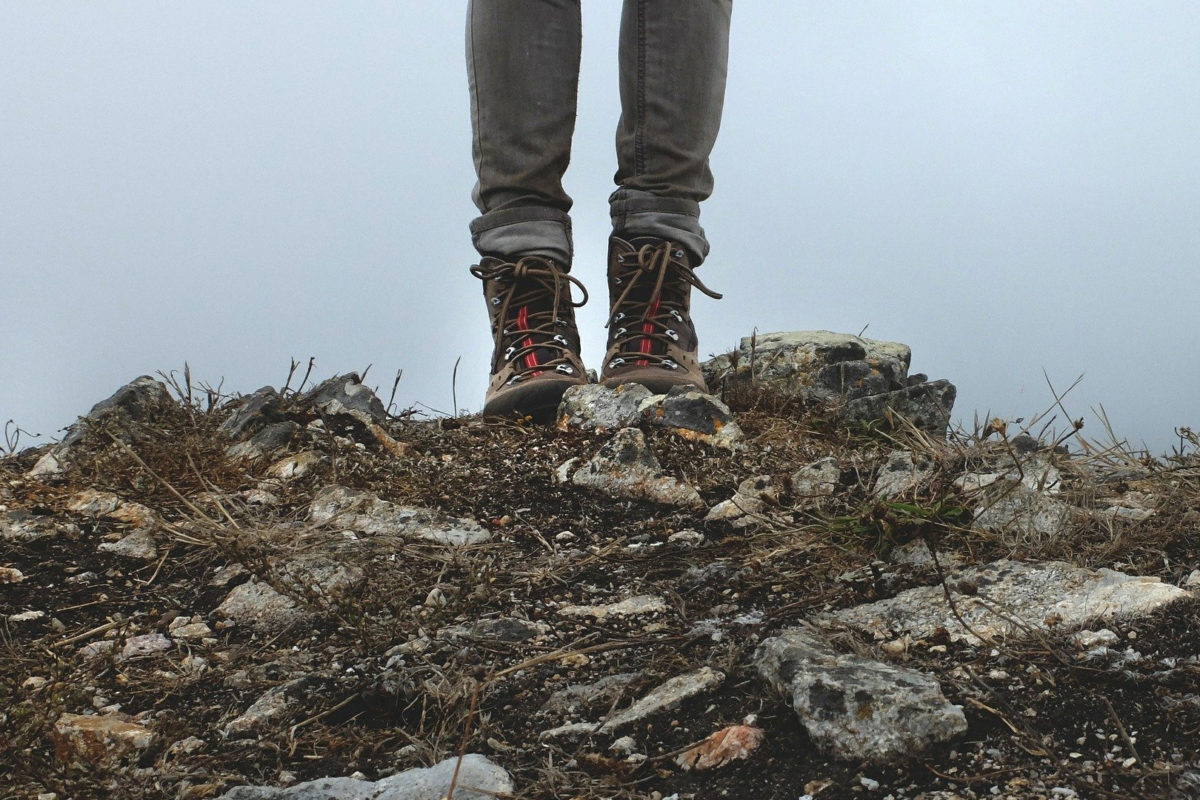
- Multiple reusable masks/face coverings
- Hiking shirt
- Hiking shorts/pants/skirt/leggings/dress
- Underwear/bra
- Base layer top & bottom
- Insulating mid-layer
- Insulating jacket
- Rain jacket or poncho
- Hiking boots/shoes
- Camping/sleeping clothes
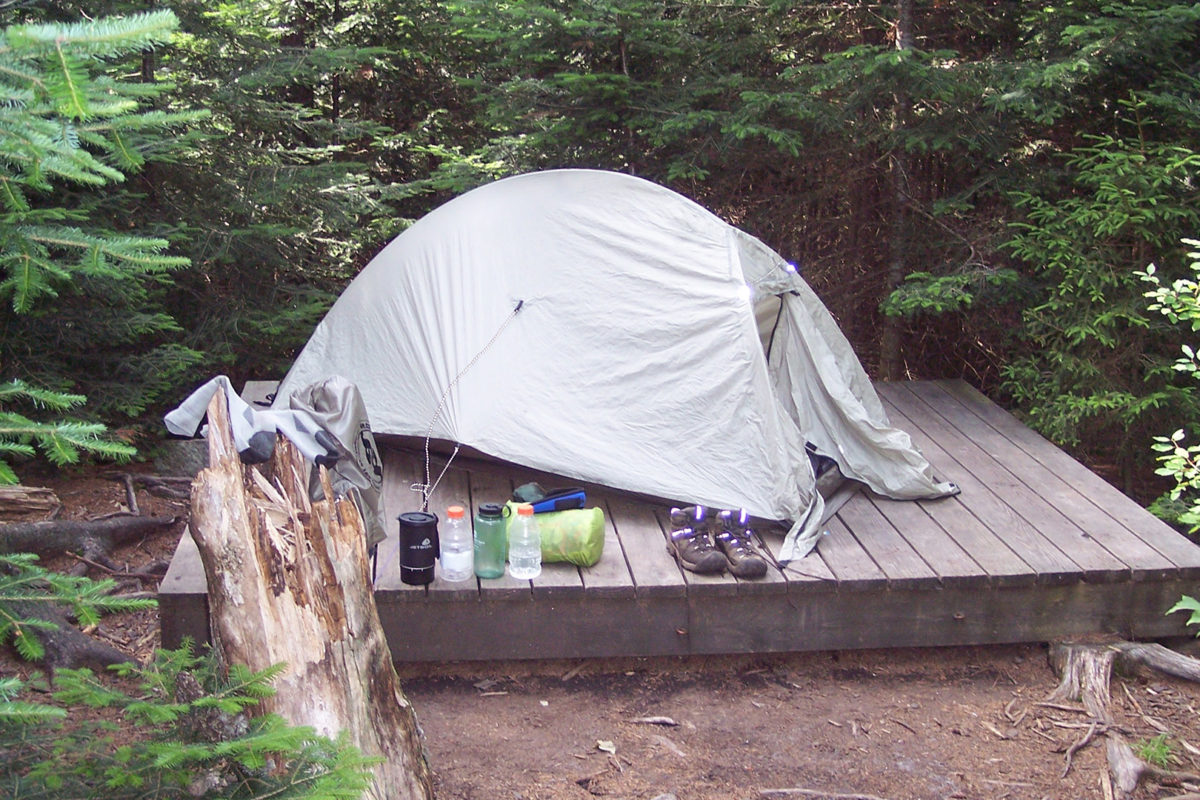
- First aid kit – including disposable face masks and nitrile gloves
- Personal shelter (tent, tarp, hammock)
- Sleeping bag
- Sleeping pad
- Map/compass/trail guide
- Water bottles or bladder
- Emergency Whistle
- Water treatment system
- Trowel and unscented hand sanitizer
- Toiletries – including handwashing kit

- Rain pants/skirt
- Sunscreen/sun hat
- Camp shoes/sandals
- Hiking poles
- Buff/neck gaiter
- Pocket knife
- Town clothes
- Satellite communication device
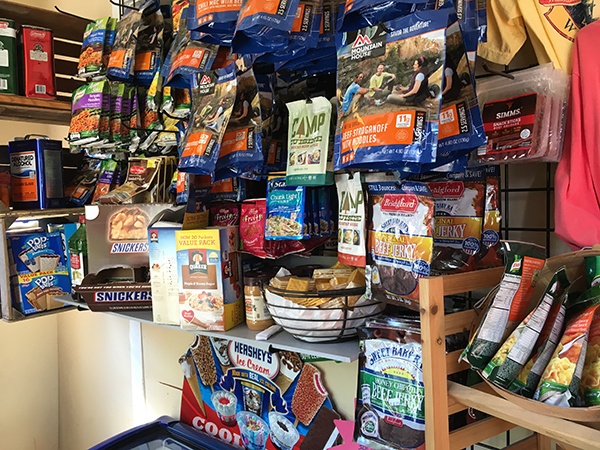
Consider COVID-19 transmission risks when planning meal spots
- Calorie-dense, lightweight food
- Bear canisters recommended
- Bear hang set up: 60 feet rope & bag for all edible and scented items.
- Fuel & lighter
- Stove & pot
- Spoon / spork
Download the PDF version of this checklist
Packing for an Overnight Hike
Over many years, with a few mistakes along the way, I’ve developed a set of overnight hiking and camping gear that I’m fairly happy with. Perhaps the most important lesson I’ve learnt in determining w hat to pack for an overnight hiking trip (which I still forget from time to time) is avoiding the temptation of buying cheap stuff that looks like it’s good value. You generally get what you pay for, especially with tents and rain gear: it’s better to buy one expensive rain jackets that will keep you dry and last for years, than having eight raincoats in the cupboard that all leak in heavy rain…
The gear list below is based mostly on what I own and use, plus some suggestions for a few items that I would recommend. Prices are generally RRP, with a link to one of the Australian outdoor stores which usually has the best prices.

Essential Overnight Hiking Gear
This is the gear that forms the “core part” of your outdoor hiking equipment, and where it generally makes sense to spend as much as you can afford to get reliable and lightweight gear. I’ve rarely regretted paying too much, and often wished I paid more at the outset when I look at the all the “bargain” caamping items I’ve purchased over the years. The only thing I’ve not included are trekking poles – I’m not a fan of these, although they may be an “essential item” for you!
Everyone will have their own food preferences – the items below are just some suggestions. Wiser people than me suggest that you should plan on 18,300kJ/4350 kcal (women) and 25,000kJ/6000kcal (men), based on an average weight and six hours hiking a day; I would probably consume a it less than this while hiking.
Clothing & Footwear
As well being somewhat personal, what you take will depend to a large extent on where you’re hiking, and at what time of the year.
The “Nice to Have” Gear
While some people won’t leave home without a camping pillow, these items are ones that you may selectively take to make a short camping trip more enjoyable – but they might not make the cut on a longer trip where every gram matters!
Tips and Tricks
I’d love to claim credit for all these – but many have come from observing other hikers and engaging in online bushwalking discussion groups!
- A4 sized packing cells
- A few lightweight pegs on longer trips can be useful for hanging up washing or wet clothes. You can also use safety pins to attach wet clothing to a pack.
- Instead of a light cord , a spare shoelace can be used for hanging stuff up at camp or off your pack.
- A carabiner can be used to attach a cup to a backpack so you can quickly get a drink from a stream (I also use one to attach a powerbank with solar panel to the outside of my pack).
- Those tiny fish plastic soy sauce bottles that comes with sushi make great containers for lighter fluid (fire starter), soap shower gel and dish washing liquid.
Leave a Reply Cancel reply
10 backpacking essentials: the ultimate checklist
Our list of the 10 backpacking essentials for any overnight hiking trip includes crucial kit that should go without no matter where you're going, what season and how experienced you are

Few adventures are as wild and wonderful as a backpacking escape. Out there, no two days are ever the same. The weather will change constantly and every trail and viewpoint is unique, and that’s why you keep pulling on your best hiking boots and exploring. It's also why you need to be prepared for practically any eventuality – what would be a straightforward hike in benign conditions can feel like a battle with Mother Nature herself when an expected storm descends. Our list of the 10 backpacking essentials for any overnight hiking trip includes crucial kit that should go without no matter where you're going, what season and how experienced you are. Never set foot on the trail without this gear...

1. A waterproof shell jacket
Top of our backpacking essentials is the best waterproof jacket you can get. Even if there is no rain forecast, you should carry a lightweight, waterproof shell jacket.
First of all, no matter if you’re in the mountains or the forest or along the coast, a surprise rain shower is a constant possibility and you’re always better safe than sorry. Secondly, a waterproof shell jacket can protect you from the wind and generally keep you warmer than a wind shell if the temperature drops. Lastly, you can sit on your waterproof shell on dewy grass and wet ground to keep from soaking your bum. Advanced, high-end lightweight jackets aren’t cheap, but they’re a great investment that can last for many years.
Word to the wise: don’t bother with a water-resistant jacket when you go backpacking, only opt for a fully waterproof jacket. Not sure of the difference? We explain in our article on waterproof vs water resistant .
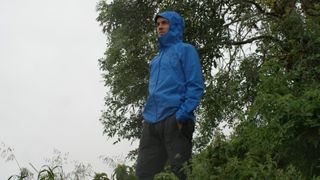
2. Sturdy footwear
It used to be that everyone wore staunch leather hiking boots on backpacking trips. They were heavy and stiff, but they were also sturdy, secure and durable. However, materials, trends and backpacker preferences have evolved over the past two decades, allowing for a wider range of types of hiking shoes , including even vegan footwear .
You should still demand good traction and some level of support in your shoes, but depending on what kind of terrain you’ll be on and how fast you’ll be moving, you might opt for heavy boots, your best hiking shoes as a mid-weight option, or lighter trail running shoes . But you’ll still want to pack a pair of lightweight flip flops for moving around the campsite, too. (They make it much easier to scurry into the woods in the middle of the night when nature calls.)
While there are still great classic waterproof backpacking boots available, there are also some unique, new designs, and variations of lighter and more flexible trail running shoes if you want a more athletic vibe out on the trails.
Advnture Newsletter
All the latest inspiration, tips and guides to help you plan your next Advnture!
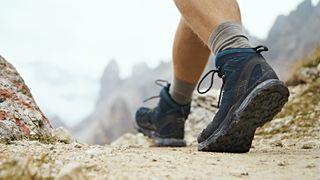
3. The right size of backpack
If you’re going backpacking, you’ll need to carry a lot of stuff: extra layers of clothes, food, a camping stove and a wide range of equipment ( best sleeping bag , tent , headlamp, camping utensils and more) all need to fit in your pack. The longer you’re planning to be the trail, the more gear you’ll require and the bigger the pack you’ll need. Having the appropriately sized pack for the length of your adventure is especially important to maximize your experience, comfort and, of course, what you can or can’t bring.
Generally speaking, there are three sizes of backpacking packs based on the duration of the intended trip:
- Weekend packs are for one to two nights of backpacking and have roughly 30 to 50 liters of storage capacity.
- Multiday packs for three- to five-night excursions are typically in the 50- to 70-liter range.
- Packs for extended trips can be as large as 65 to 85 liters in size, and allow for a lot of gear, apparel and food you’ll need for long excursions in all types of weather.
Learn more in our article on what size backpack you need for your adventures.
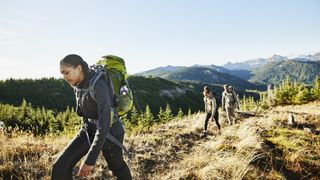
4. A bright, long-burning headlamp
High on our list of backpacking essentials is a headlamp . Once the sun goes down and darkness sets in, you need an artificial light source to perform key tasks around your campsite. While a handheld flashlight can be great and pack a lot of power, a bright, long-burning headlamp can be much more useful. The hands-free operation of a headlamp can be crucial in helping you set up your tent, making dinner, cleaning up and walking into the bush in the middle of the night when you have to pee. The advent of high-powered LED lights and rechargeable batteries has resulted in smaller, lighter and more powerful headlamps.
Once you're confident with your headlamp, you might even opt to go night walking . This is good training if you have ambitions of tackling mountains in winter – or in the Rockies, Alps or Greater Ranges – when pre-dawn starts are common.
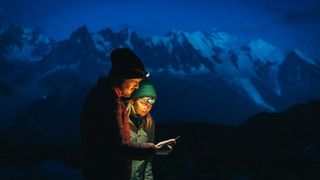
5. Extra hiking socks
There’s nothing worse than getting wet feet while you’re hiking, but it happens. That's one of the reasons why dry socks are one of our backpacking essentials. Tricky stream crossings, dewy grass, unavoidable snowfield crossings and unexpected rain showers are among the many obstacles that can make your feet wet. Knowing how to stay dry while hiking will see you facing even wet conditions without a second thought and will enhance your enjoyment greatly.
Having a second pair of hiking socks that are kept dry – perhaps by packing them in a dry bag – will not only keep you warm and comfortable, but can help prevent blisters and improve your whole mental outlook. Make sure you wear socks that rise above the top of your shoes, have extra padding and no-slip features so they stay in place. Some brands' socks are made from antimicrobial materials that wick moisture away from your skin to help keep your feet dry and stop them getting cold or stinky. Waterproof socks are also an option you might want to think about.
(If your original pair of socks get wet, try to dry them after you take them off, either by carefully placing them next to a camp stove or campfire or by hanging them so the sun or breeze can help reduce the moisture content. If your other socks get wet, the original pair will still feel better if they’re at least partially dry.)
Need some new socks? Our guide to the best hiking socks can help.
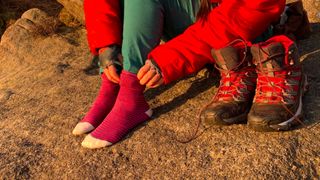
6. Good food and beverages
Trail mix is a great snack, and you should always have a hearty helping of your favorite variety at arm’s reach. But if you’re backpacking for multiple days, you’ll want to load up your pack with nourishing dehydrated freeze-dried meals . These lightweight, cook-in-the-bag meals are simple to make with boiling water and are available in a variety of scrumptious varieties. You can buy them in single- or double-serving sizes or opt for multi-day, multi-person packs. It's also a good idea to to learn how to make coffee when camping and bring a hiking flask that will keep the coffee you brew up in the morning hot by the afternoon.

7. Warm hiking gloves
A warm pair of hiking gloves are an absolute backpacking essential. Even if it’s sunny and warm during the day, cool weather, rain or a breeze in the morning or at night will make your hands cold. If your fingers get cold, you’ll lose the dexterity needed to do nimble tasks related to setting your tent, preparing meals and making coffee in the morning. Always make sure you have a heavier pair of gloves to keep your digits warm in the coldest possible temperatures and also provide a good amount of grip. You can also wear featherweight liner gloves during the daytime.
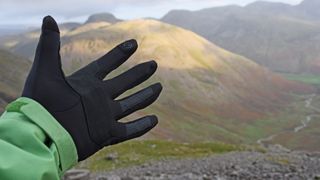
8. A solar-powered battery charger
Let’s face it, there are a handful of helpful devices we typically take into the backcountry, whether it be a flashlight, head torch, smartphone or a Bluetooth speaker. A portable solar charger that can quickly charge small- to medium-sized devices, lights and other camping tech is an excellent thing to have on board for longer adventures. Alternatively, you can get portable battery packs that you charge in advance of your expedition.
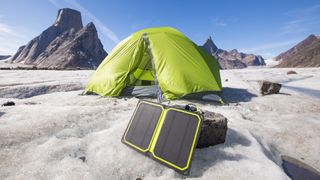
9. First aid kit and sanitary gear
If you're wondering why take a first aid kit , the sad truth is that accidents are bound to happen in the backcountry. It makes good sense to carry a basic first aid kit so you can treat basic maladies like cuts, blisters, sprains, headaches and more. Insect repellent is a must for certain regions, such as for fending off midges in the Scottish Munros in summer. Likewise, knowing how to remove a tick safely and having a tick removal device (often known as a tick twister) is important as, if you don't carefully and properly remove these nasty hitchhikers, it can lead to Lyme's Disease.
While you can clean up with water from a nearby lake or a flowing stream, it’s not a good practice to drink or cook with water from those sources unless you treat it. Untreated water can lead to giardiasis and cryptosporidiosis intestinal infections caused by microscopic parasites and pathogens that can thrive in what appear to be freshwater sources, often related to heavy animal traffic (wildlife or livestock) upstream. To avoid those impossible-to-see things that can lead to fatigue, nausea, cramping, gas, bloating, vomiting and diarrhea, take a water purifying filter . And always pack a roll of toilet tissue for every three days you plan to be backpacking.
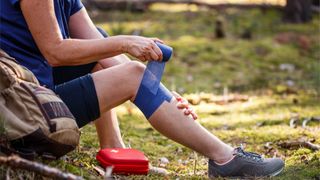
10. Your phone
While most of us like to disengage from the digital world when we’re hiking and backpacking, a smartphone can be a very helpful tool when you’re out in the wild – even if you don’t have cellular service. At the very least, you should download digital maps (.gpx files) of where you’ll be ahead of time so you can keep track of your location via GPS signal.
But if you do have cellular service, you can check a weather app to keep tabs on changing conditions and also call or text for help if you get injured or get into an emergency situation. (Lastly, you can also fall asleep listening to an audio book.) Key apps you should consider downloading are komoot , The Hiking Project, All Trails, Gaia GPS, Spyglass, PlantSnap and Peakfinder. And have a look at our guide to the best navigation apps .

Brian is an award-winning journalist, photographer and podcaster who has written for Runner’s World , The Times , Outside , Men’s Journal , Trail Runner , Triathlete and Red Bulletin. He's also the author of several books, including Kicksology: The Hype, Science, Culture and Cool of Running Shoes . He lives in Boulder, Colorado, and loves to run, bike, hike, camp, ski and climb mountains. He has wear-tested more than 1,500 pairs of running shoes, completed four Ironman triathlons, as well as numerous marathons and ultra-distance running races.
7 reasons you need a camping cooler: from campsite cuisine to keeping bears at bay
Can you connect two tents together? And if so, how?
Exped Ultra 3R sleeping mat review: comfort and alpine credentials
Most Popular
- 2 7 reasons you need a camping cooler: from campsite cuisine to keeping bears at bay
- 3 Can you connect two tents together? And if so, how?
- 4 Video compilation shows why you should never chase, harass, or pet a bear
- 5 Sea to Summit Aeros Ultralight Traveller Pillow review: a comfortable neck pillow for short-haul journeys
Table of contents
Ultimate Backpacking Checklist & Gear Essentials

Some of the links on this page are affiliate links
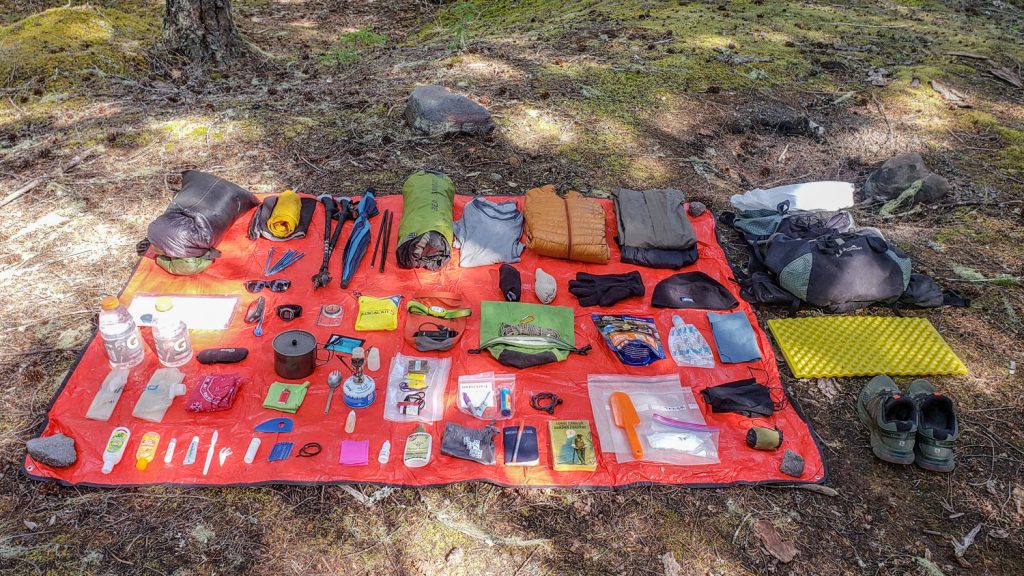
We’ve spent decades honing our backpacking gear to (our) perfect balance of weight and creature comforts. After 20,000 miles and 1,000 nights on trail, we’re pretty dialed in to what we want and need for any adventure, and we love helping people find their perfect kit as well.
We’ve organized the Ultimate Backpacking Checklist into categories to make it easier for you to gather your backpacking gear for your next trip. We also have adownloadable checklist. Print it out and have a hard copy with you as you organize your gear.
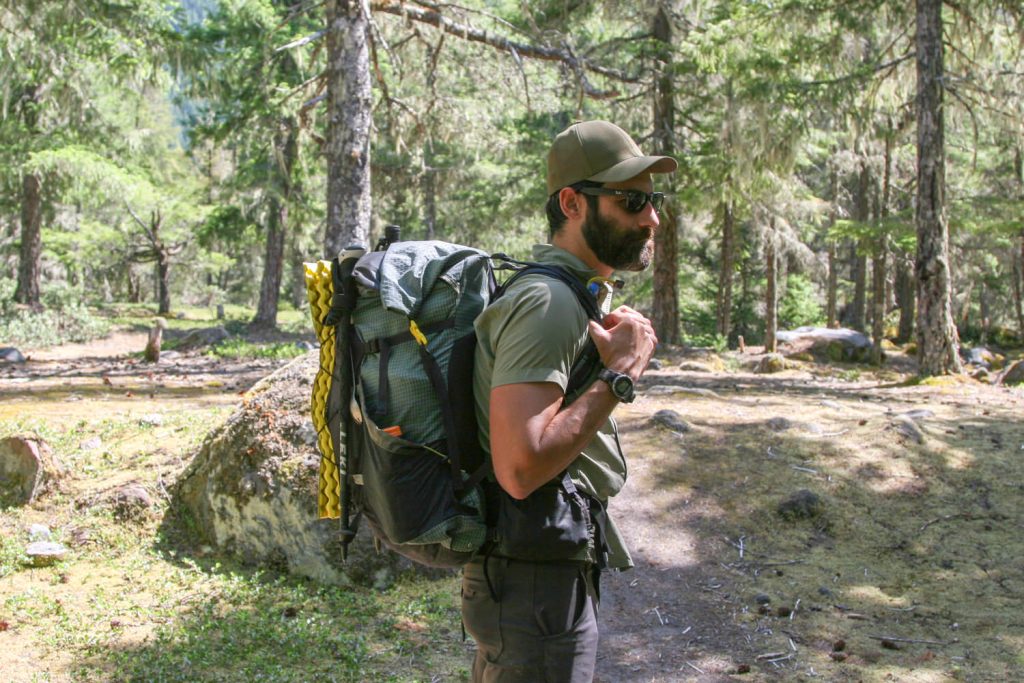
Ultimate Backpacking Checklist
DOWNLOAD OUR PRINTABLE CHECKLIST
*We consider items in italics to be optional
- Tent poles or trekking poles
- Groundsheet for tent floor durability
BACKPACK & STORAGE
- Trash compactor bag or waterproof stuff sacks for interior rain protection
- Large Ziploc for garbage
- Shoulder strap camera pocket
- Summit pack
ENTERTAINMENT
- Book or Kindle
- Crossword puzzles
- Cribbage or dice
- Notebook + pen
NAVIGATION EQUIPMENT
Always be prepared and know how to use your map and compass, even if you plan to use a GPS or GPS app.
- Topo map(s)
- Waterproof map bag / Ziploc
- GPS or GPS phone app with maps downloaded for offline use
- Satellite Messenger/PLB for remote locations
- Download driving directions for offline use
- Photos of guidebook pages
- Check current weather before trip
- Call ranger station pre-trip for trail conditions + regulations
- 2 copies of itinerary: 1 left with friend + 1 under car seat
- Backpacking permits
- Band-aids of various sizes
- Antibiotic ointment
- Medical tape
- Latex gloves
- Safety pins
- Antihistamines
- Antidiarrheal
- Check out our Best First Aid Kits list for more suggestions
PERSONAL TOILETRIES
- Sunscreen + lip balm
- Bug repellant
- Toiletries (biodegradable shampoo, etc.)
- Prescription Rx
- OTC meds + vitamins
- Contact lenses + supplies/glasses
- Toilet paper/wipes + sealable bag to pack it out
- Digging trowel
- Menstrual products
- Hand sanitizer
- Toothbrush, paste + floss
- Earplugs + eye mask
- Nail clipper
- Pre-trip: Clip nails, cut hair, shave, etc.
- Provisions – commonly between 2,500-3,500 calories per day
- Extra day’s supply of food for emergencies
- Food bag / Ursack
- 50’ nylon cord + small carabiner for bear bag hanging or bear canister where required
OPTIONAL EQUIPMENT FOR SNOWY & ICY TRIPS
- Ice axe – learn + practice proper self-arrest technique
- Traction devices
SLEEP SYSTEM
- Sleeping bag / backpacking quilt
- Pad attachment straps (optional)
- Sleeping pad
- Pump sack (optional)
TOOLS & ACCESSORIES
- Trekking poles
- Lightweight hammock
- Backpacking chair / sit pad
- Light pocket knife or multitool
- Phone (turn on low power/airplane mode)
- Waterproof phone case
- Bear spray for grizzly country
- Camera + waterproof case/Ziploc
- Extra camera battery
- Headlamp (check batteries pre-trip)
- Extra batteries for long trips
- Power bank + charging cords
- Wall plug for thru-hikes
- Assorted Ziploc bags
- Cash, ID, credit card, insurance card
EMERGENCY KIT
- Duct / Tenacious Tape for repairs
- Sleeping pad patch kit
- Needle + thread
- Small Sharpie
- Stormproof matches + small fire starters
- Small backup lighter
- Backup water treatment pills ( Chlorine Dioxide )
- 2-4 water bottles (ability to carry 2-6 liters depending on climate) or a hydration pack & bladder
- Collapsible water containers for carrying lots of water in dry locations
- Water treatment
- Pre-filter for water treatment, ex: pantyhose
All clothing items should be lightweight, moisture-wicking and quick-drying (synthetic or wool, no cotton).
- Hiking pants ( Men’s / Women’s ) & shorts ( Men’s / Women’s )
- Wicking shirt/tank & long-sleeve sun shirt ( Men’s / Women’s )
- 1-2 pairs quick-dry underwear
- Down jacket and/or fleece jacket
- Rain jacket
- Rain pants for wet trips
- Windbreaker depending on forecast
- Base layers
- 2-4 Pair socks
PACK IN CAR
- Parking pass for car
- Clean clothes + shoes to change into
- Gallon of water for trailhead shower
- Camp towel to dry off
- Water + snacks
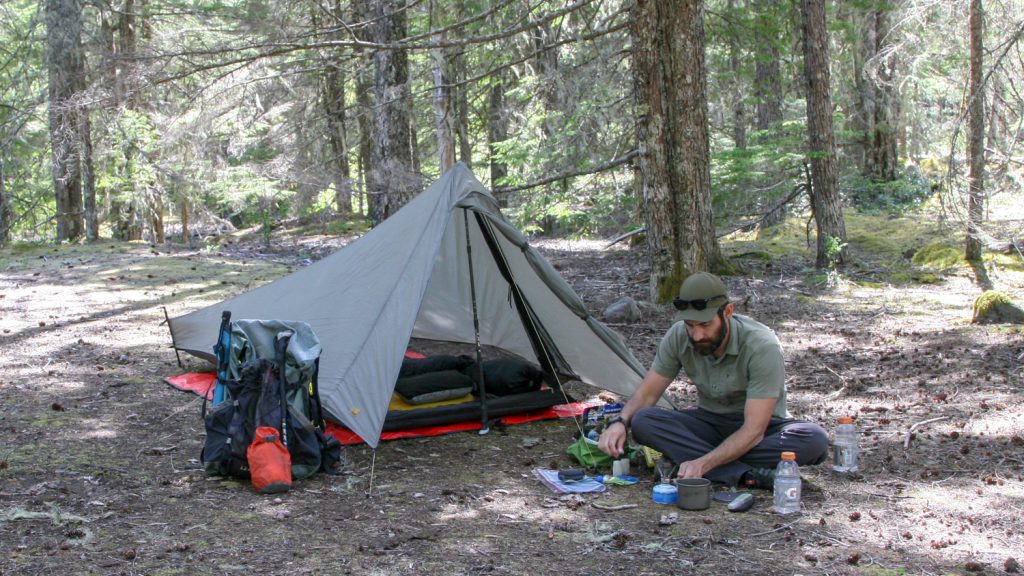
Backpacking Tips
LIGHTEN YOUR LOAD – Start by weeding out things you don’t need. Be careful with every choice you make, a few ounces here and there can add a lot of weight in the end. A lightweight backpacking checklist, like the one here, will help you to focus on essential items. Next, focus on lightening your heaviest gear: shelter, backpack, and sleeping bag. Switching your traditional big three out for lightweight options is the best opportunity for weight savings, especially when you’re starting out. If you invest in a lightweight shelter, backpack, and sleeping bag, you can easily cut 10 or more pounds and be well on your way to having an ultralight backpacking setup.
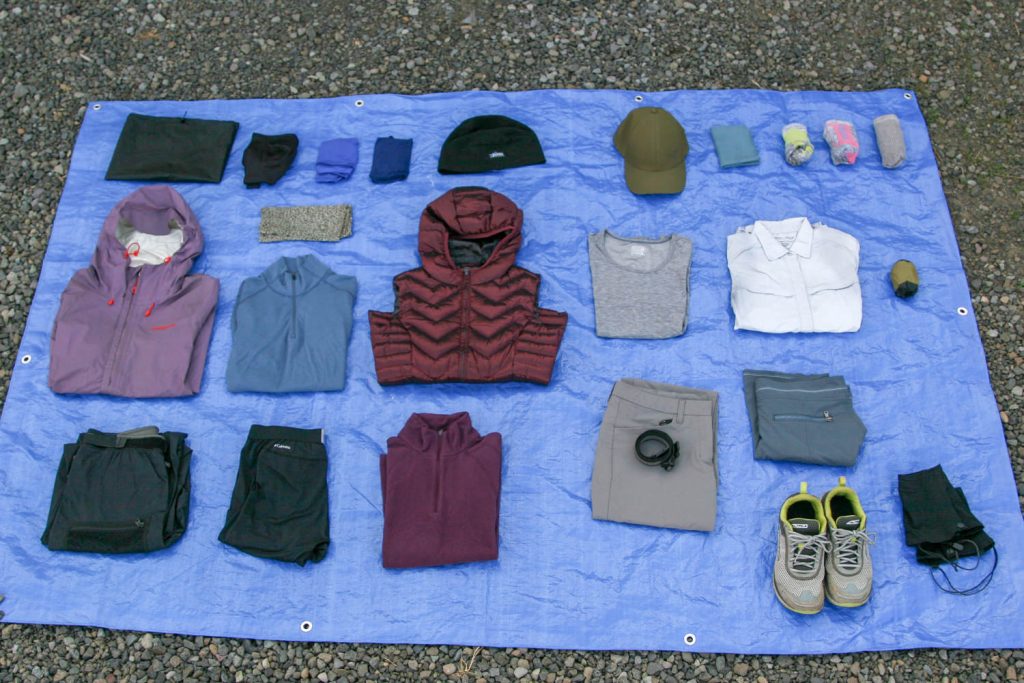
CLOTHING FOR BACKPACKING – The clothing you pack will change slightly depending on the conditions you expect to encounter on specific trips, but the fundamentals remain the same. Clothing made with quick-drying fabrics that wick moisture away from your skin are best to help your body thermoregulate and stay comfortable in both hot and cold environments. Nylon, polyester, wool, bamboo, silk, and synthetic blends are all good options. Avoid cotton – it absorbs moisture and takes a long time to dry, which can cause a variety of problems including blisters and chafing. Choose items that can be worn together in layers. Fleece and goose-down have the best warmth-to-weight ratio and make the best insulation materials for backpackers. Rain gear should be lightweight, breathable, and waterproof.
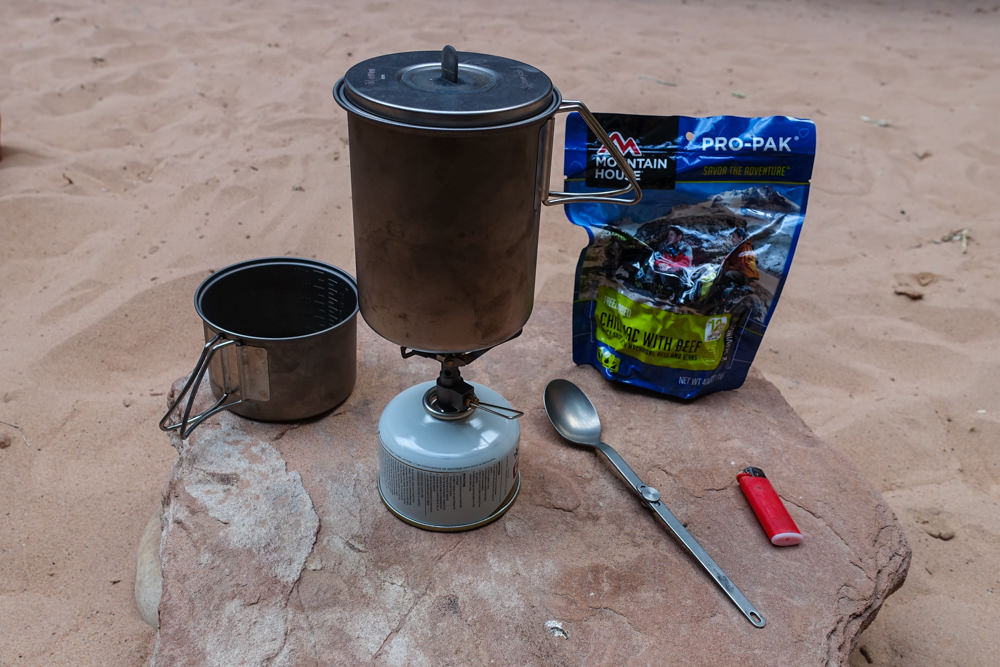
BACKPACKING FOOD – Good food is really important for any backpacking trip, so it’s well worth the effort to put together a simple meal plan before your trip. Keeping food weight down is a critical backpacking skill that usually takes experience to master. A good place to start is our Guide to Lightweight Backpacking Food . Most seasoned backpackers opt for lightweight, calorically-dense foods that are very easy to prepare. Packaged freeze-dried meals and snack foods can be great, but keep in mind, they tend to be very high in sodium/sugar, which can take their toll, if eaten in excess.
Another approach is to prepare your own backpacking meals , using a food dehydrator to dry meats, fruits, veggies, and sauces. Combining them with spices and quick-cooking or easily rehydrated dried goods such as pasta, couscous, instant potatoes, instant refried beans, and minute rice is a great way to customize your own highly-nutritious meals. This method takes more time and effort, and you must be more willing to carry more weight, but making your meals can be more cost-effective and healthier for long trips. Our approach is usually a mix of both methods. For more specifics about food, check out our Best Lightweight Backpacking Food guide , where we outline our general backpacking food strategy and suggest some of our favorite meals .
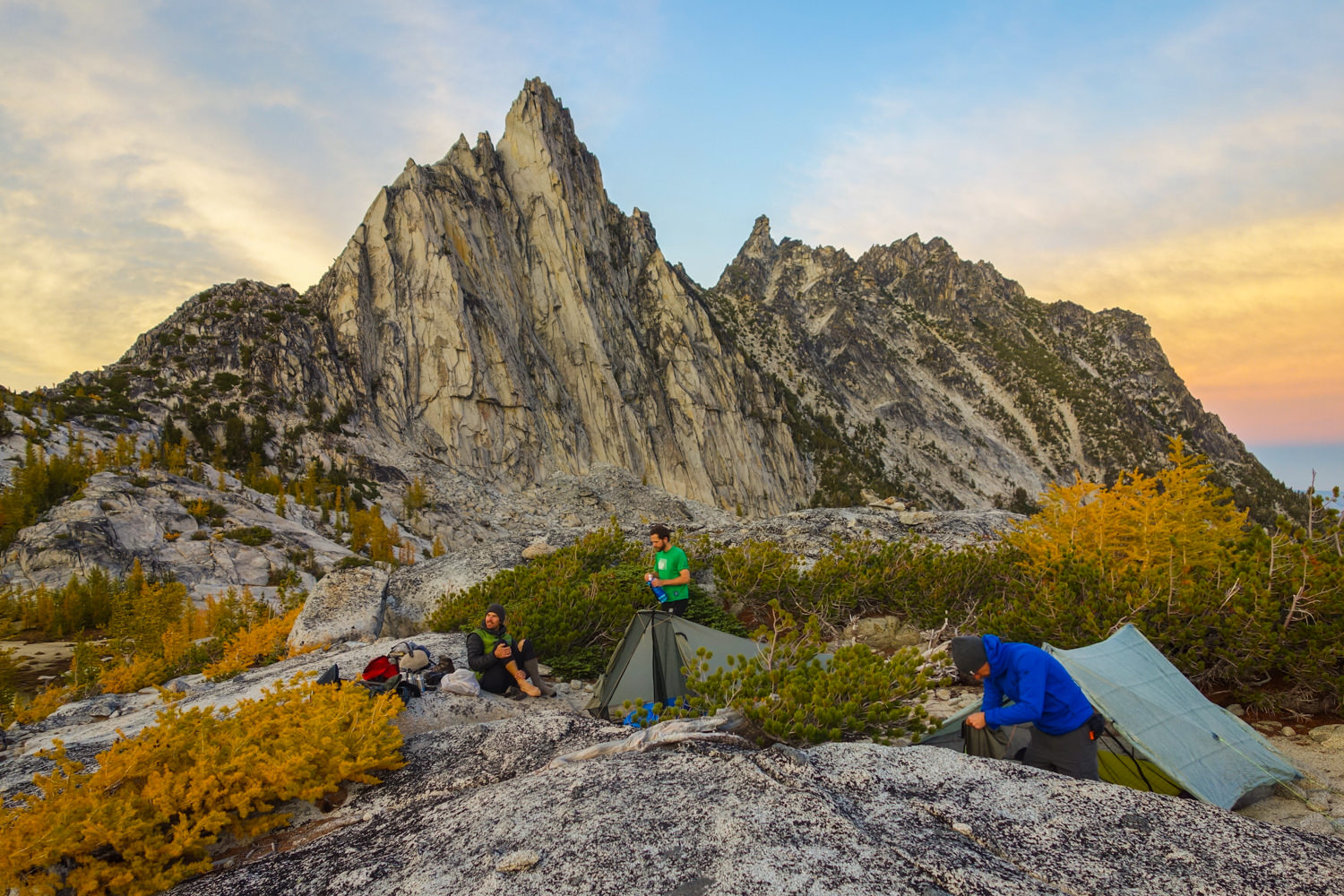
CleverHiker Backpacking Video Series
If you’re new to backpacking, or have been hiking with outdated equipment, we highly recommend watching our two professionally-filmed video series (below), where we’ll teach you everything you need to know to start backpacking -the skills and the gear.
- Essential Trail Skills – 20 HD tutorial videos to teach the most critical skills for backpackers of all levels, such as: Leave No Trace, Backpacking Trip Planning, How to Find and Fit the Right Backpack, How to Pack a Lightweight Backpack, and much more.
- Lightweight Backpacking Basics – One of the main reasons to minimize your pack weight is to maximum your freedom on the trail. Backpacking with a lighter pack will reduce stress on your body, give you more free time on the trail, and allow you to hike farther with less effort. In this 10-episode series, you’ll learn all about the gear that will allow you to hike lighter to make the hiking the most enjoyable part of your trip.
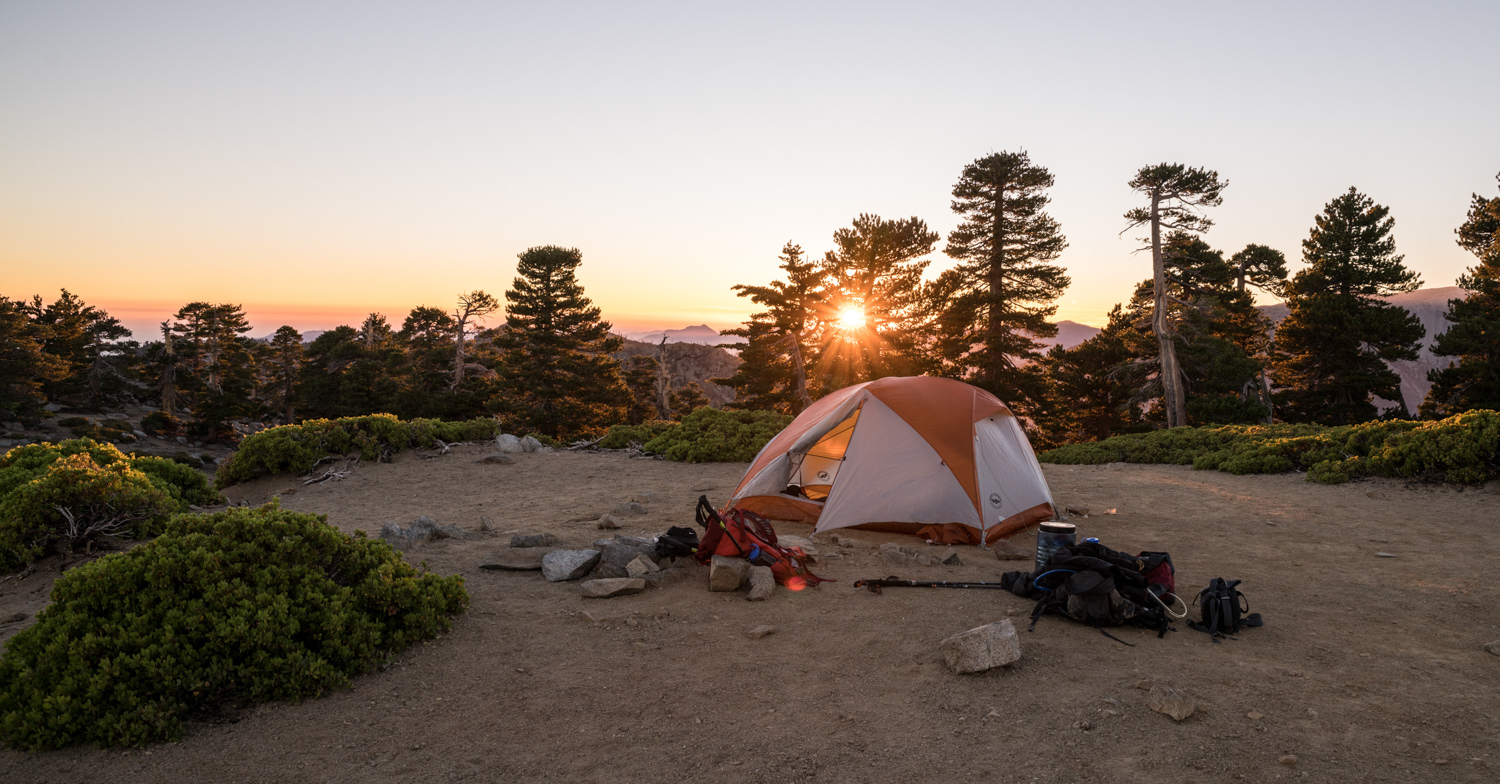
Why trust us?
We understand how tough it is to find trustworthy gear advice, and that’s one of the main reasons we built CleverHiker. We live for outdoor adventure, and we take these guides very seriously.
- Our recommendations are completely independent and based on hands-on experience.
- We test outdoor gear for a living – we’ve logged over 20,000 trail miles and 1,000 nights in the wilderness.
- Our team has thru-hiked some of the most iconic long trails, including the Continental Divide Trail, Pacific Crest Trail, Appalachian Trail, Colorado Trail, Long Trail, Oregon Coast Trail, Arizona Trail, Pinhoti Trail, Superior Hiking Trail, as well as extensive peak bagging, and international treks.
- We field test every product we recommend, which is sadly not the norm.
- We travel to industry trade shows to stay up-to-date on product innovations.
- We continuously update our guides throughout the year and when new products launch.
- We treat recommendations to our readers as if they were for our family and friends.
- We’re lifelong learners and we’re always open to feedback. If you think we’ve missed a worthy product or got something wrong, we’d love to know about it.
Need More Backpacking Advice?
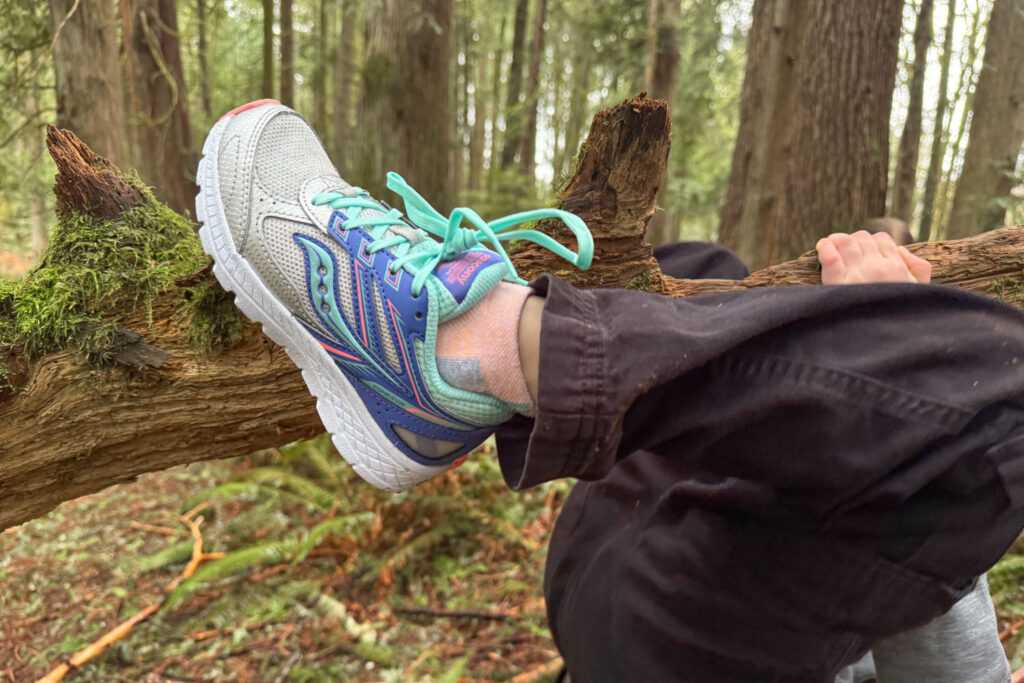
10 Best Hiking Shoes for Kids of 2024
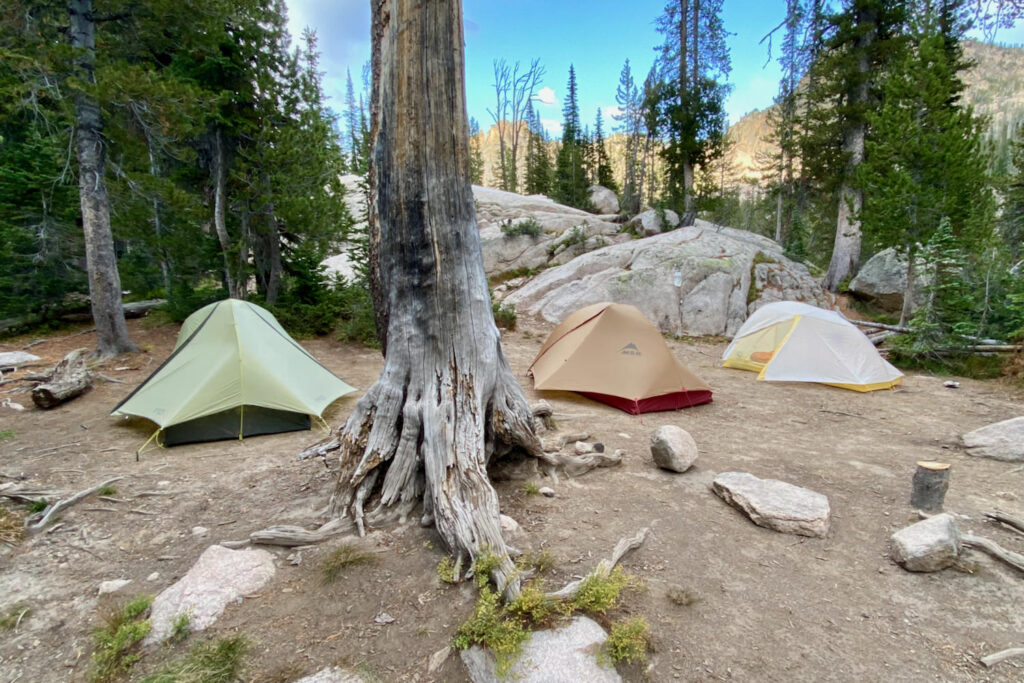
Big Agnes Tiger Wall vs. NEMO Hornet OSMO vs. MSR FreeLite
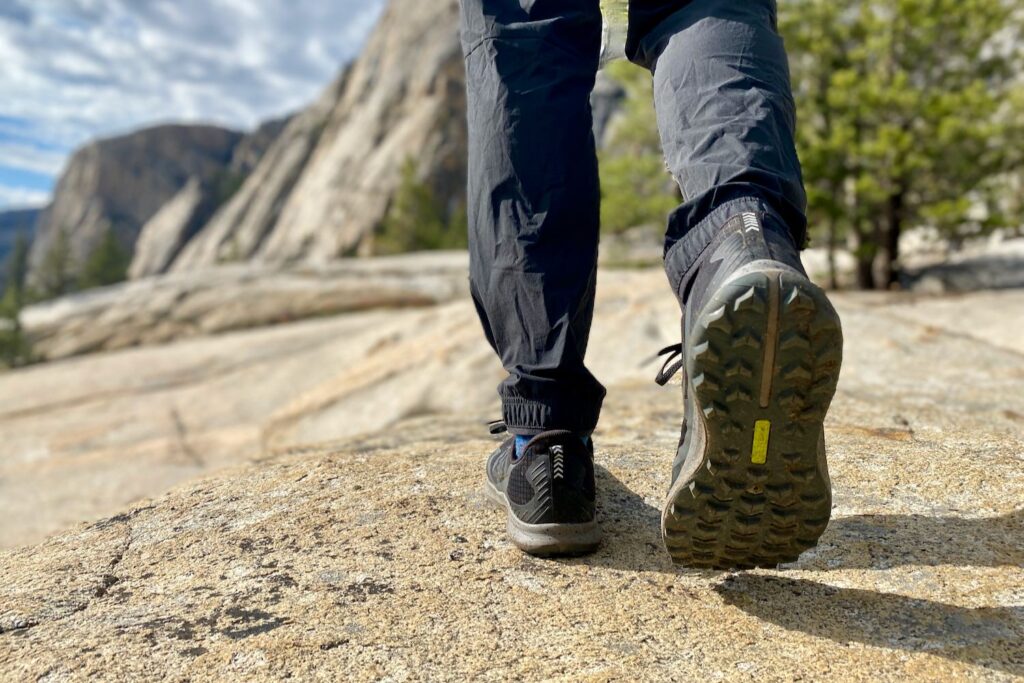
Hiking Boot & Shoe Soles for Grip, Traction & Different Terrains
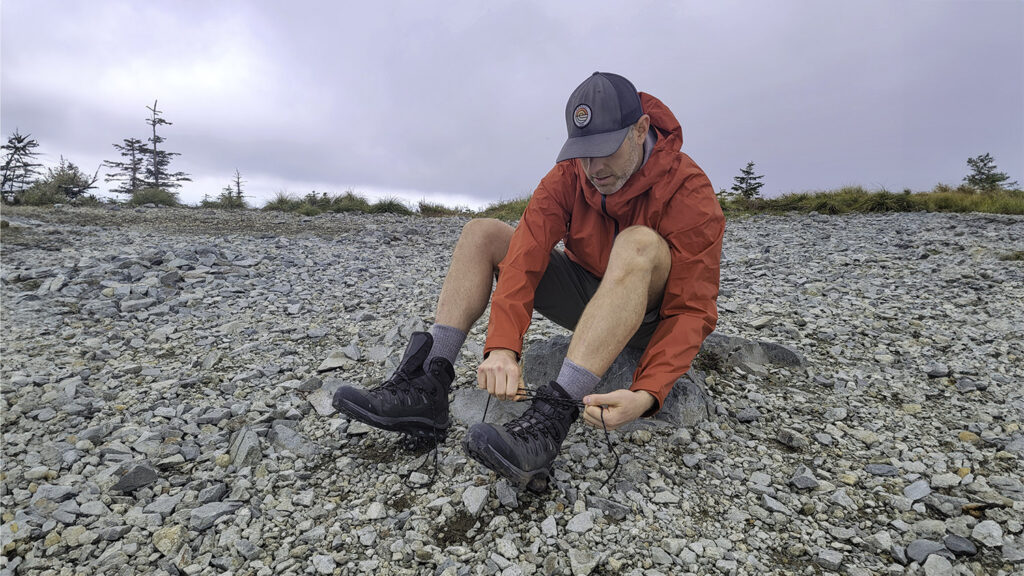
How to Lace Hiking Boots & Shoes
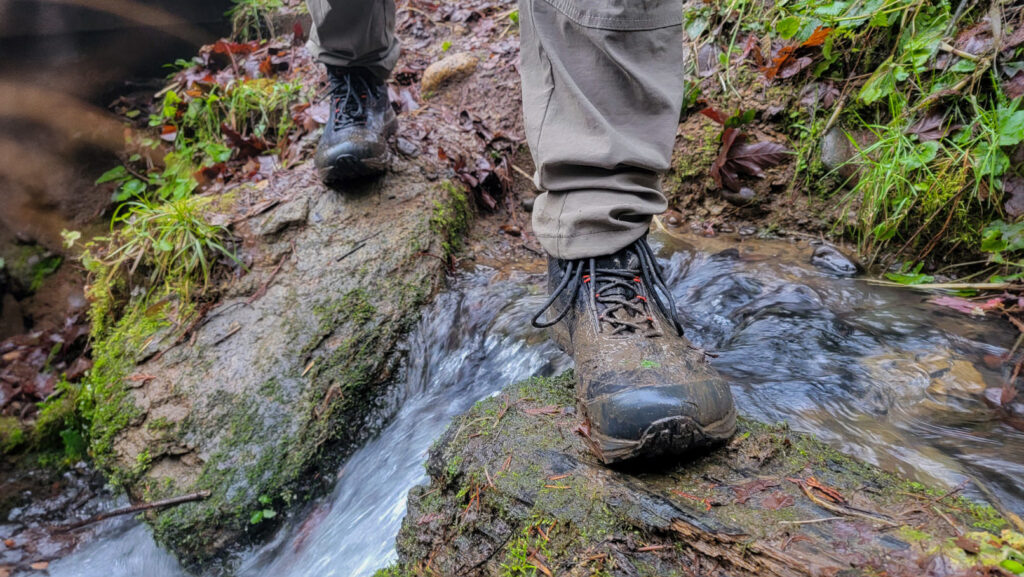
How to Clean Hiking Shoes & Boots
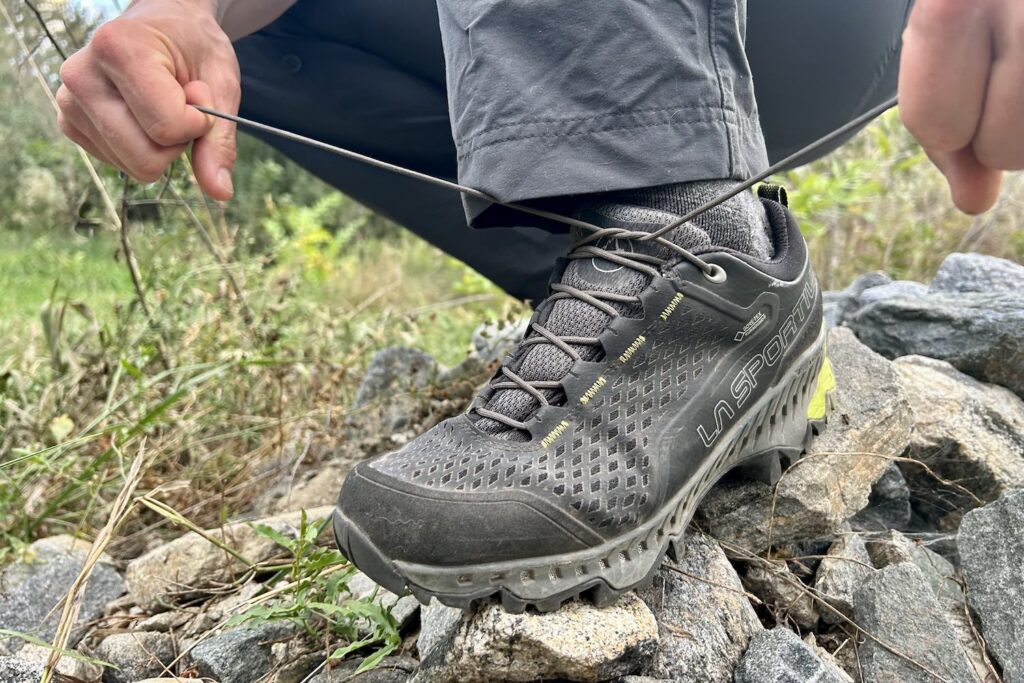
La Sportiva Spire GTX Hiking Shoes Review
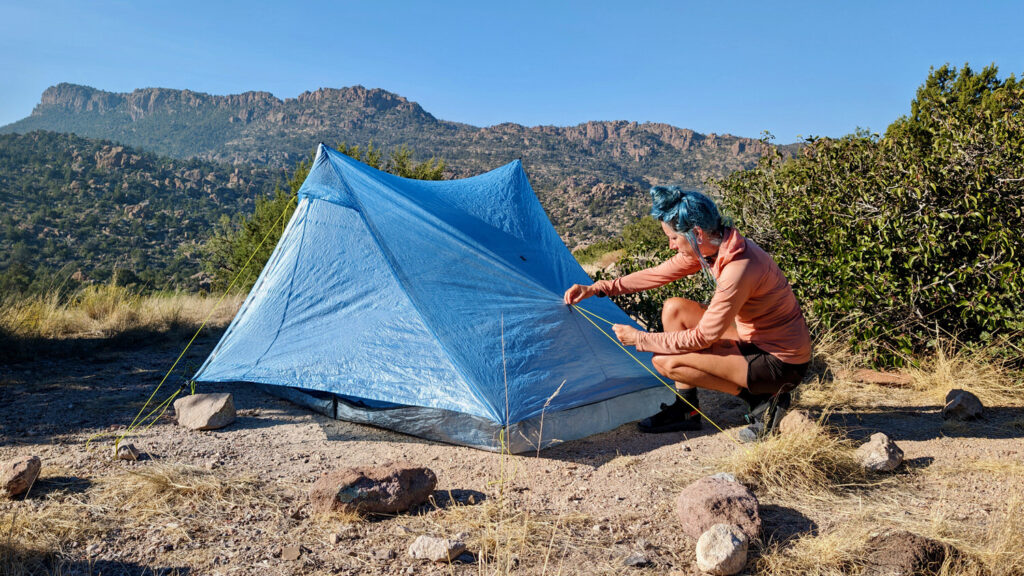
Zpacks Duplex Zip Tent Review
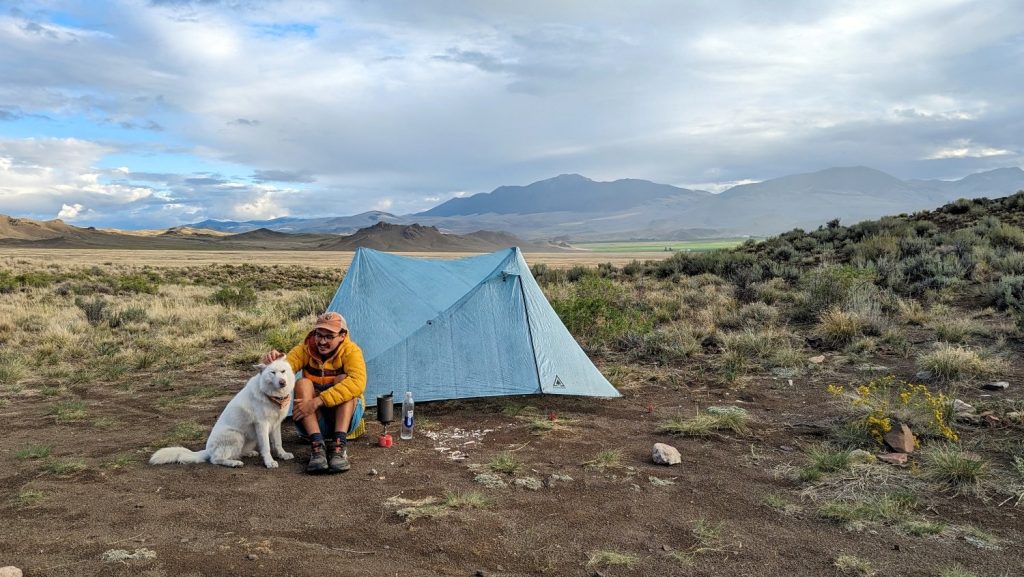
Durston X-Mid Pro 2 Tent Review
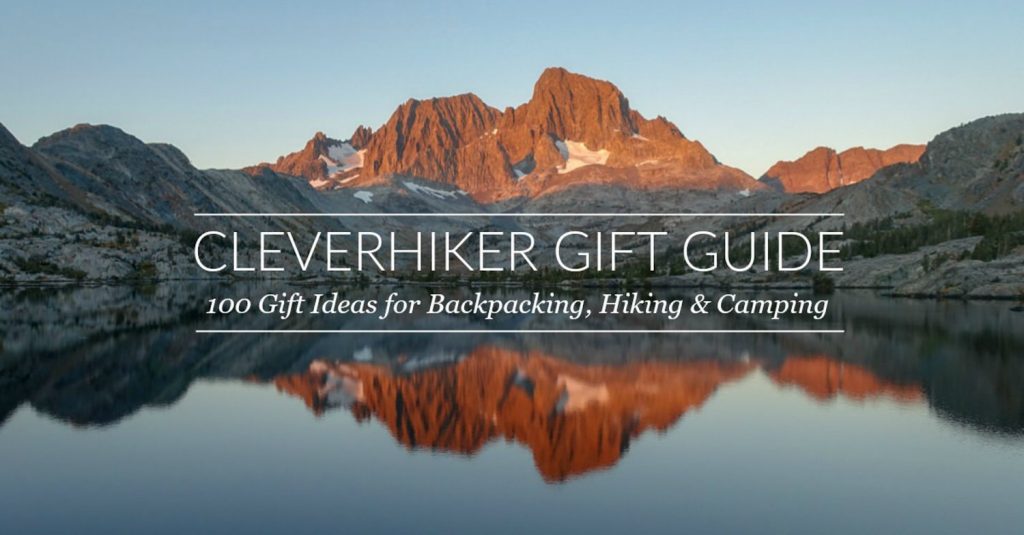
100 Best Gifts For Hikers, Backpackers & Campers 2024
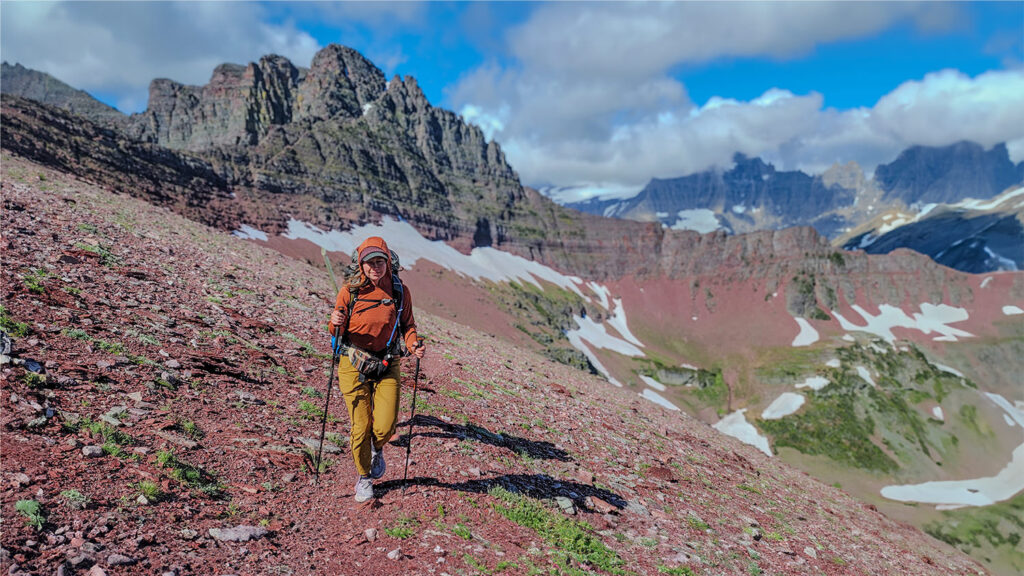
7 Best Trekking Poles of 2024
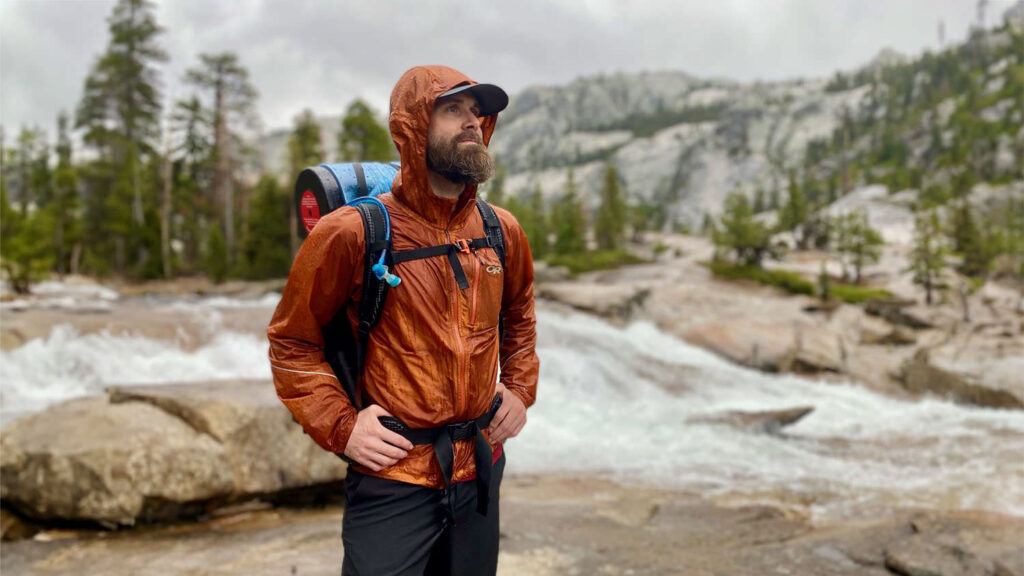
10 Best Rain Jackets of 2024
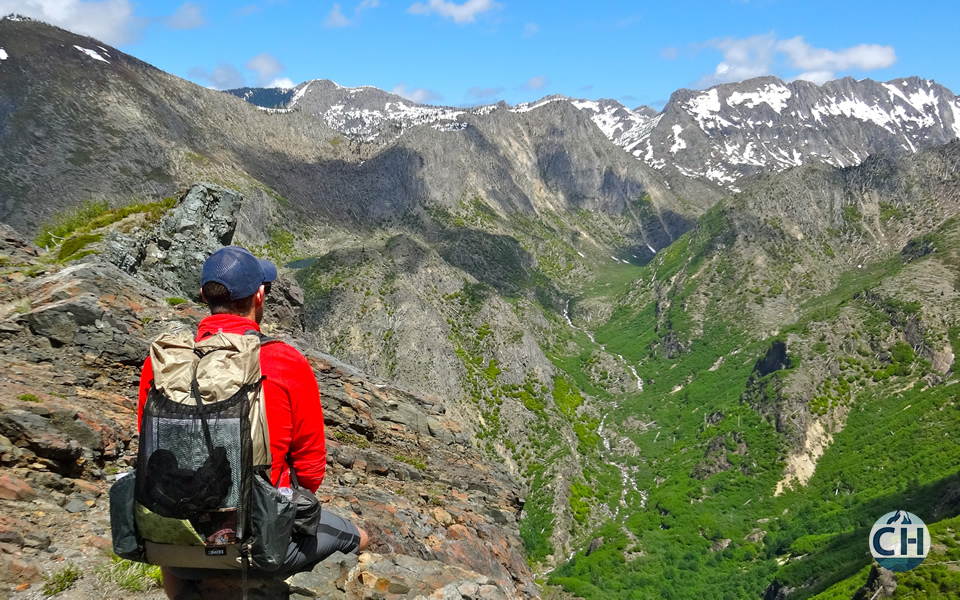
ZPacks Arc Blast Backpack Review
Get the best content from cleverhiker & around the backpacking world.
Social media is great, but our bi-weekly newsletter is a much better way to stay in the know.
Sign up to get our curated emails with the best content from CleverHiker and around the backpacking world. You’ll be turned on to new videos, trip reports, gear reviews, inspiring outdoor stories and much more. So get in the mix!
- Skip to primary navigation
- Skip to main content
- Skip to primary sidebar
Safariors - Blog of Outdoor Adventurers
Be yourself while making your most exciting adventures come true with our hiking, camping, hunting and fishing guides.
Simplest Overnight Hiking Essentials, Planning and Guide
Last Updated On April 12, 2020 By Justin Alexandre 1 Comment
With all the experiences of my trips, travels, and hiking, it sometimes becomes tough to select the essential items instantly when I plan for a hiking trip. And understandably for the people who are still new in this area can find it really difficult to prepare overnight hiking properly.
So, most of the time I rely on the overnight hiking checklist I have made before to ensure the perfect planning.
And for the newbies, it is not only the checklist, but they will also need more: like tips on packing overnight hiking backpack guide on the first overnight hike and so on. SO, I have decided to share some of my experiences and pieces of knowledge on hiking camping trip that will help them with boost up confidence.
Overnight Hiking Essentials, Planning and Guide
Overnight hiking checklist.
Before the tour and planning, one must know what to keep with them for the hiking trip. So here is the checklist of overnight hiking essentials below:
If you are going on an organized overnight hike, you will need these ultimate backpacking gear list:
- A tent, big enough for two or three people.
- A water container, basic materials for cleanup, a can opener and a first aid kit.
- A well-insulated sleeping bag.
- A proper sun hiking headwear to protect your head and face.

You may also need these top backpacking essentials:
- A cotton inner bag to keep the sleeping bag clean if it’s on loan.
- A sleeping mat to make bedding down in the wilderness more comfortable.
- A complete change of clothing
- Soap, a small towel. Toothbrush and some toilet paper.
- A plastic mug, plate, knives, and forks.
- Clothing for sitting around on a cold night.
You can download this ultralight backpacking checklist pdf here.
Backpacking Food for the Overnight Trip
Planning for the meal of the trip is an essential part that many of the new hikers tend to forget. You should plan for the backpacking food along with other overnight backpacking gear checklist.
To plan it properly you must choose something considering your taste, the nutrition value calorie density of the food and also the weight of it.
These can be like this
- Coffee or tea like Celestial Seasonings Herbal Tea, Bengal Spice Tea, etc
- Different types of food bars like Larabar, Luna, Kind Chocolate bars, etc.
- Pop-Tarts and different pastries (Breakfast Toaster Pastries)
- Dried Fruits like Almond, Walnut, Pistachios, Hazelnuts, Prunes, Dried Apricots, etc.
- Powder Meals and Powdered Milk for protein and vitamins
- Non-cook meats like the Beef Jerky and Dried Meat
- Breakfast Drink Mix Packets like the Carnation
- Tuna and Salmon can be a tasty and nutrient oriented hiking food
- Instant Oatmeal or Greenbelly Meals (Quaker)

Lightweight Stoves are Best for Hiking
The best stove for lightweight hiking is the butane gas stove. It is clean, reliable and easy to use, and is widely available. It needs to be used on a completely flat surface and can be difficult to shelter from the wind. In the Last weekend backpacking trips in California, I had used a spirit stoves that worked great in making the tea and rice.
However, the spirit isn’t used enough for the different reason. Most people use a gas stove and kerosene one depending on the backpack size chart during overnight backpacking camping and trekking.
Also, you should follow the manufacturer’s safety instructions for use and for changing cartridges. Used cartridges should be properly disposed of. For a group of hikers, you might choose kerosene or white gas stove instead
Using Compass Is Important for Beginner Backpacking Trips
Especially keep a map and compass. It is as essential as other beginner backpacking gears. Someone in your party must know how to use a map and compass. Keep checking your position on your planned route, so that you always know where you are.
When walking on high ground on the overnight backpacking trails, avoid low clouds and mist on the hills when possible. Don’t be afraid of asking other hikers if you’re not sure where you are.
Keep Medicines in the Overnight Hiking Pack
On long hikes carry a first aid kit. The first aid kit should at least contain dressings, bandages, antiseptic cream, safety pins, small scissors and forceps to remove splinters. In case of an accident check where the nearest telephones or mountain rescue posts are.
If there is a severe accident, one person must stay with the injured person while at least two set off to find help.
Managing Nighttime in Overnight Camping
You may misjudge how long you’ll take on a long hike and get caught by nightfall. On hills or mountains, this can be very dangerous. Always carry a flashlight with spare batteries. Make your way slowly and carefully to the nearest house or town.
Managing the nighttime is necessary for a successful hiking trip. You should look for the comfort if resting and of course the safety. You should also bring the lightest camping tent/hammock if you planning to stay at the campsite.

Be very careful on roads. Walk toward oncoming traffic, swinging your flashlight back and forth so that drivers will be sure to see you. Choose a lightweight flashlight with a good beam.
Check the Weather Before Planning
Check the weather forecast. I often check the weather of the overnight hiking trails near me. If it looks good and I am interested in that region, I usually start planning. Check the forecast, temperature and weather report.
If high wind, heavy rain, fog or mist are forecast, don’t set off on a long hike. And, if the weather turns terrible once you’ve set out, decide in plenty of time whether you should turn back or look for an escape route to lower, safer ground.
Moreover, consider if there is any chance of rain, you should always carry waterproof clothes. If it does start to rain, put on the rain-gear immediately. If you get wet, it will be difficult to keep warm.
Hello there! I am Justine. I love traveling to different places, mountains, and rivers. Here are some of the tips about my all in one guide.
Share this:
- Click to share on Twitter (Opens in new window)
- Click to share on Facebook (Opens in new window)
Leave a Reply Cancel reply
Your email address will not be published. Required fields are marked *
Notify me of follow-up comments by email.
Notify me of new posts by email.
Happily Ever Hiker
Overnight hiking checklist: clothes, shelter & supplies.
In case you have never been on an overnight hiking trip before, deciding what essential items to bring can be challenging. And, based on your particular circumstances, the needs will differ significantly.
An overnight hiking checklist is something that even skilled hikers make sure to have when preparing for their hiking trips.
This way, they can make sure that they have packed all the necessary things for their trip and are ready to explore nature without any limitations.
What does an overnight hiking checklist include? Keep reading below to find out!
Table of Contents
The majority of what you must take with you in terms of apparel will be determined by the season and the weather conditions at the time of your hiking trip.
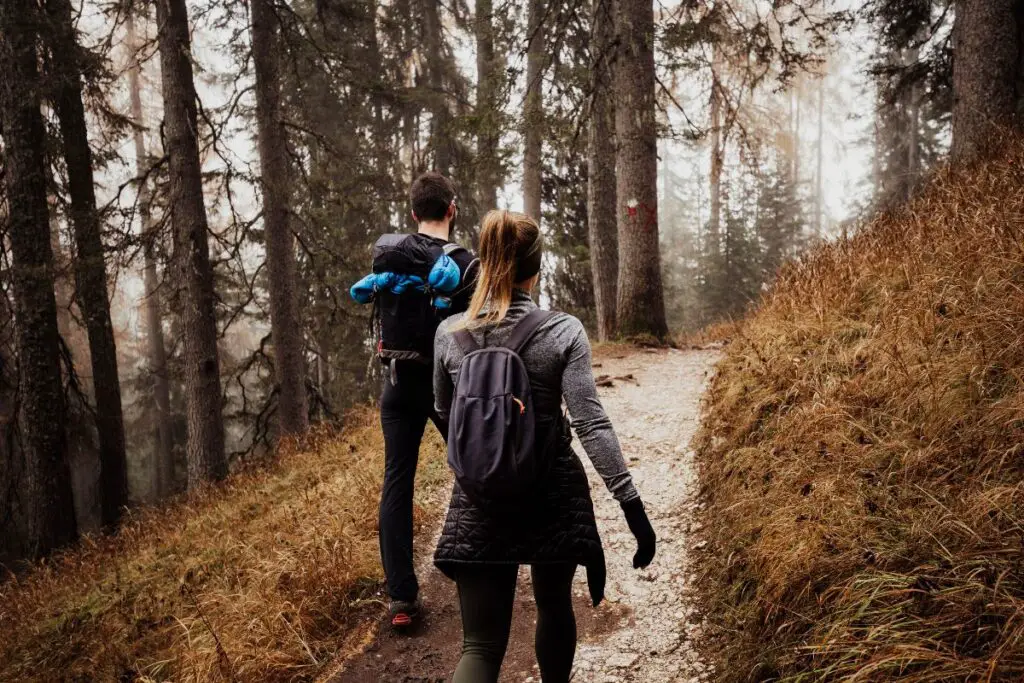
However, the temperature drops during nighttime, regardless of where you are in the world.
Especially when you are planning to camp by the ocean or in the backcountry, it can get quite chilly, and after a long day of hiking, you don’t want to stay up because you are cold.
While getting your warm jumper might work, it’s better to layer up; adding layers of clothes on you and or taking them off when you feel warmer is better than going all in and then sweating on a warmer night.
Any shop that specializes in recreational activities in nature offers a wide range of brands and competitive prices to select from.
For the foundation layer (top and bottom) choose long undies made out of polypropylene as they will be both light and warm.
For the middle layer, go for a material that is light yet offers thermal insulation.
The final layer could include a light fleece hoodie and any pants that feel best on you for hiking trips covering long distances, or something thicker if the temperature is lower.
Make sure to carry an additional pair of socks as wet and sweaty feet can easily derail a hiking trip.
Gloves out of Thinsulate, sunglasses, and a cap or hat are also highly recommended, with your cap being thick enough to keep you warm and keep from suffering from sunstroke.
Lying and watching the stars when camping in the backcountry or on the beach is wonderful whenever it is possible.
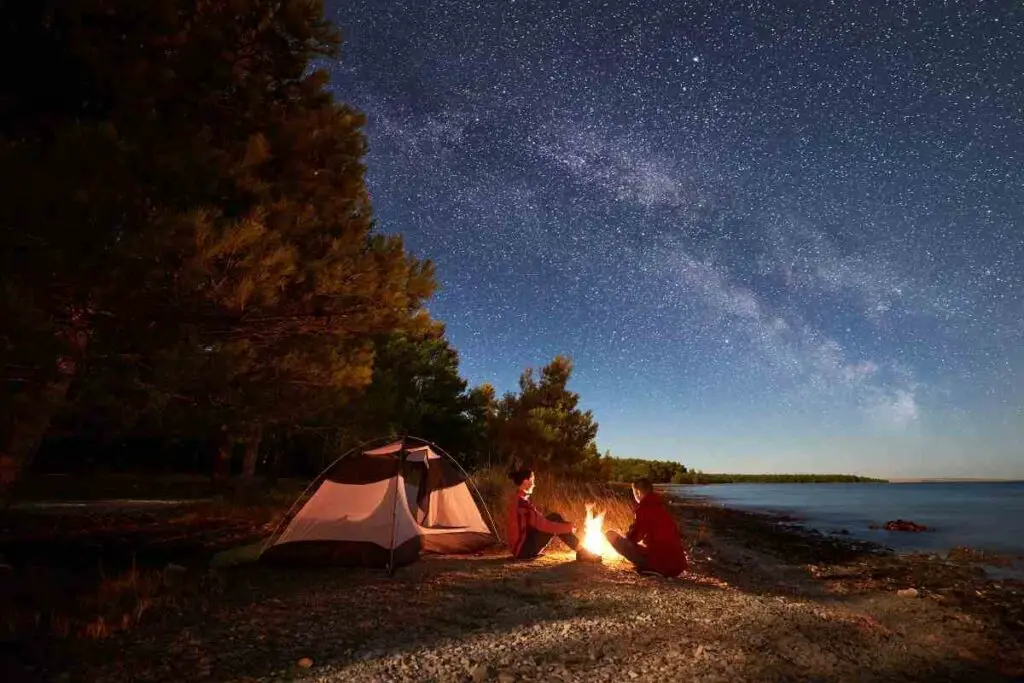
However, more frequently than not, you will require some type of protection from the weather and the bugs.
That is why you will need:
- A collapsible shelter, such as a tent or tarp. If you decide to camp in a place where bugs are an issue, keep in mind that your tent will need to be equipped with a decent insect netting system.
- A sleeping mat: single, double, foam, or self-inflating, depending on the number of people camping, your budget, and your needs.
- A sleeping bag.
Hiking for hours and days in a row burns a significant number of calories, which must be replaced with lots of nutritious food.
Many individuals need to consume hot food, and yet lots of other people prefer raw or prepackaged, cold food like protein bars, sandwiches, beef jerky, or fruits, especially during short overnight stays.
Instead of packing a random mix of food products, thoughtfully prepare all your meals, as you will want and need to consume more calories than you believe.

Numerous seasoned hikers prefer hot food at the beginning and the end of their day and choose to have cold meals or smaller, simpler snacks throughout the day.
This way, they can keep walking without the need to sit after a heavy meal.
Below are some examples that should work just fine for most people:
- For every 24 hours spent on the trail, bring one cooked, warm/hot meal, one cold meal or snack to have for lunch, and a portion of hot food for dinner.
Of course, don’t forget about the utensils (a ‘spork’ is the best option).
Numerous outdoor supply retailers sell ready-to-eat options that are ideal for long outings, like noodles or protein oats. All you need to do is add some hot water and the food will be ‘instantly’ cooked.
While you can carry some Tupperware for a one-night stay, if you are staying for more, make sure to get a bowl or plate to eat from, and a pan or pot for cooking.
With that, you will also need a backpacking stove and some fuel.
For an overnight hiking trip, drinking lots of water is much more vital than staying fed.
You have two choices:
- carry all of the water you’ll require in some type of container
- or bring a water filtration system or purifier that makes it possible to consume water from the lakes or stream waters nearby
Other Essentials
These goods aren’t necessarily life-or-death essentials, but you’ll be amazed by how important several of these will be for your overnight hiking.
When you’re getting bitten by bugs while hillwalking in the forest, bug repellant will appear to be crucial. The same goes for sunscreen, biodegradable toilet paper, and soap.
A shovel for keeping your ‘business’ tucked away is also good, and so are any sanitary products women might require.
A headlamp, an extra battery pack, and a torch are also practical, and so are a sharp knife, a power bank for your phone, and a first-aid kit.
The Bottom Line
This overnight hiking checklist is what you need to get ready for your upcoming hiking trip. However, your specific circumstances will determine the exact equipment you will need to take with you.
Are you planning on traveling by yourself or with others? Are you backpacking on roadsides and other traces of society, or in the real wilderness?
Are there any potentially deadly creatures in the region, or are mosquitoes the cruelest ones you’re going to face?
Once you answer all these questions, you can include or skip carrying some of the things from this list in your backpack.
Leave a Reply Cancel reply
Your email address will not be published.
Save my name, email, and website in this browser for the next time I comment.
Latest from Blog

Will Snakes Cross a Rope? Debunking Common Myths
Yes, some snakes can cross ropes, especially if they’re good climbers and the rope provides enough

What to Do if You See a Deer While Hiking: Safe Wildlife Encounters
If you spot a deer while on a trail, the first step is to maintain a

Are Timberlands Good for Hiking? Evaluating Durability and Comfort
While fashion-forward individuals often sport Timberlands in urban settings, a question looms for outdoor enthusiasts: Are

How to Get Better at Hiking Uphill: Techniques for Mastery
Mastering the art of uphill hiking can transform your outdoor experiences, offering not only breathtaking views

Is Hiking Aerobic or Anaerobic: Understanding the Exercise Classification
Often, hiking is primarily an aerobic activity, especially when you engage in it over an extended
Privacy Policy


Backpacking Checklist for 2023
We cover everything you need for a successful backpacking trip, from essentials like shelter and insulation to extras like matches and sunscreen.
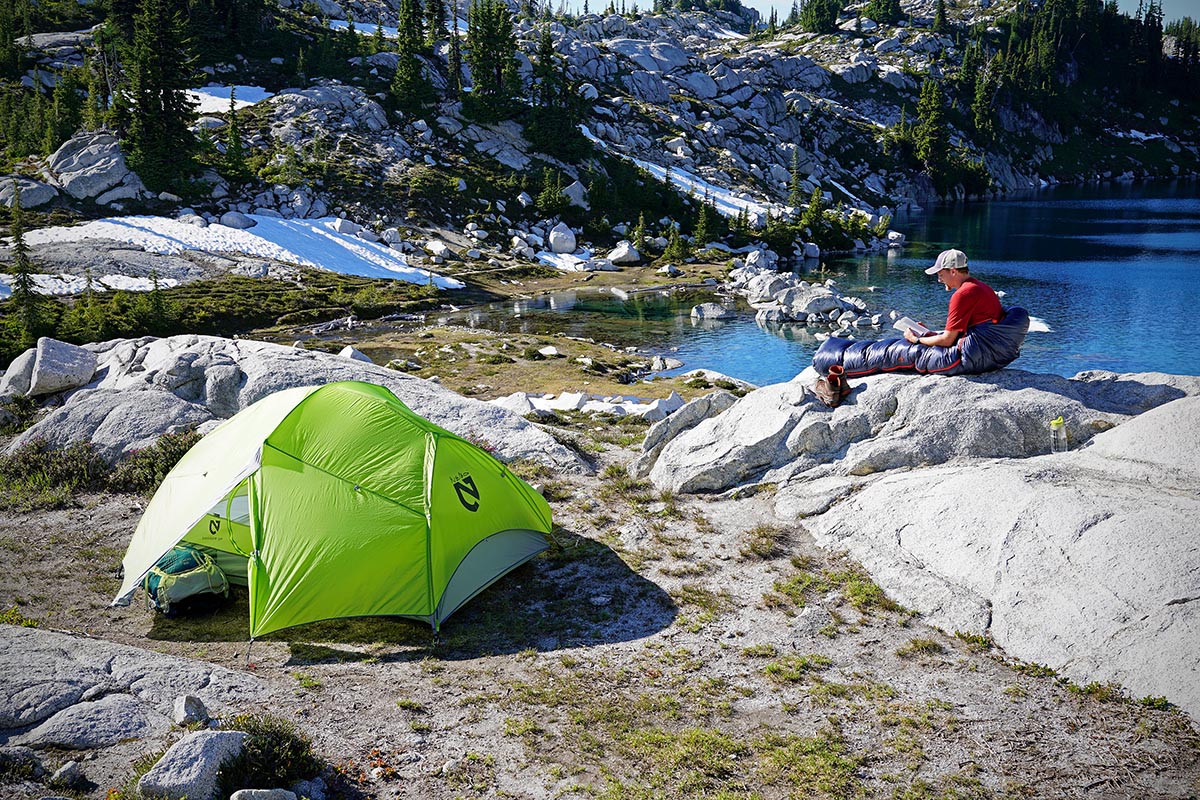
Switchback Travel
We use affiliate links and may receive a small commission on purchases. Read more about us .
Whether you’re a first-time backpacker or a seasoned veteran, everyone could use a good list to make sure they’re prepared when they head out on the trail. Our detailed checklist below covers everything from critical backpacking equipment (tent, pack, sleeping bag, etc.) to kitchen gear , footwear and clothing , health and hygiene products , and personal items and extras . For more information on each product category, many of the headings link to our detailed product round-ups, which are the result of years of testing and opinions (we do love backpacking). And for all our product recommendations in one place, see the landing page for our backpacking gear reviews .
Editor's note: The table above provides a brief overview of what you'll need to get outside, but our full PDF version is printable and offers a more comprehensive breakdown of the necessities and nice-to-haves. See Our Backpacking Checklist PDF
Backpacking Equipment
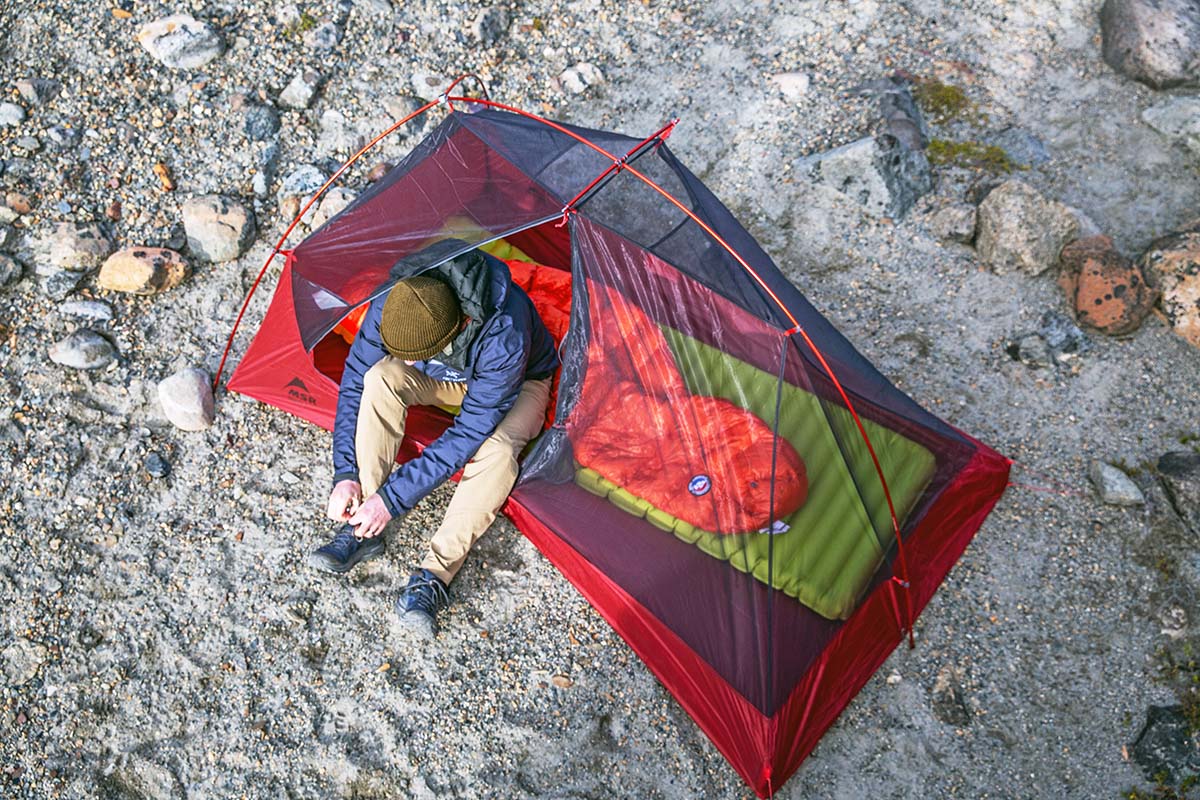
Backpacking Tent
Our top pick: Big Agnes Copper Spur HV UL2 ($550) What we like: Highly competitive combination of weight, livability, and ease of use. What we don’t: Expensive; thin floor is susceptible to tears (we advise using a footprint).
Backpacking Pack
Our top pick: Osprey Atmos AG 65 ($340) What we like: Great carrying comfort, thoughtful organization, and class-leading breathability. What we don’t: On the pricey end and far from the lightest design available.
Sleeping Bag
Our top pick: Feathered Friends Hummingbird YF 20 ($509) What we like: Very warm for the weight and built by a very reputable down specialist. What we don’t: Feathered Friends bags don’t come cheap; lacking some modern features.
Sleeping Pad
Our top pick: Therm-a-Rest NeoAir XLite NXT ($210) What we like: Three-season warmth and great comfort at a competitively low weight. What we don’t: Warm-weather backpackers can save with a lower R-value pad.
Water Filter or Purifier
Our top pick: Sawyer Squeeze ($41) What we like: Impressively light, fast flow rate, and covered by Sawyer’s lifetime warranty. What we don’t: Best for the solo backpacker—groups will likely prefer a larger gravity filter like the Platypus GravityWorks 4L.
Hydration Bladder and/or Water Bottles
Our top pick: Osprey Hydraulics 3L ($37) What we like: Highly reliable and built to last. What we don’t: Rigid backer adds weight and bulk (you can’t roll it up when empty).
Our top pick: Petzl Actik Core ($80) What we like: Great output, long battery life (via AAAs or the rechargeable battery), and easy-to-use interface in a feathery build. What we don't: Expensive and not the most water-resistant option on the market.
Optional Backpacking Equipment
- Trekking poles
- Backpacking chair/sit pad
- Backpacking pillow
- Sleeping bag liner
- Tent footprint/ground cloth
- Extra stakes and guylines
Kitchen Gear
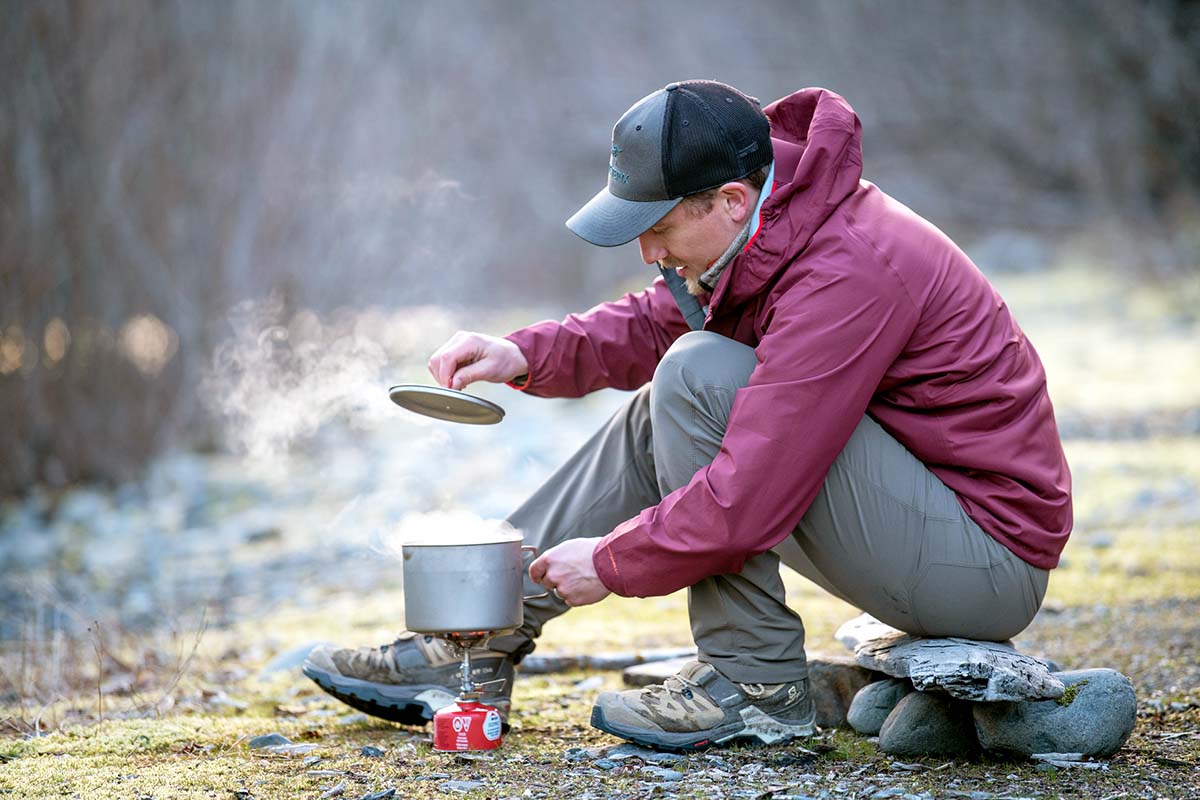
Backpacking Stove and Fuel
Our top pick: MSR PocketRocket 2 ($60) What we like: Surprisingly powerful for how light and cheap it is. What we don’t: Noticeably less stable and wind-resistant than integrated canister systems like the Jetboil Flash.
- Backpacking Food
Our top pick: Backpacker's Pantry ($10-$13) What we like: Affordably priced, easy to find, and extensive selection of tasty meals. What we don’t: Relatively long cook times and less innovative than some upstarts.
Cookware and Utensils
- Spork or long spoon
Optional Food Items
- Instant coffee
- Coffee press or dripper
- Electrolyte tablets
Footwear and Clothing
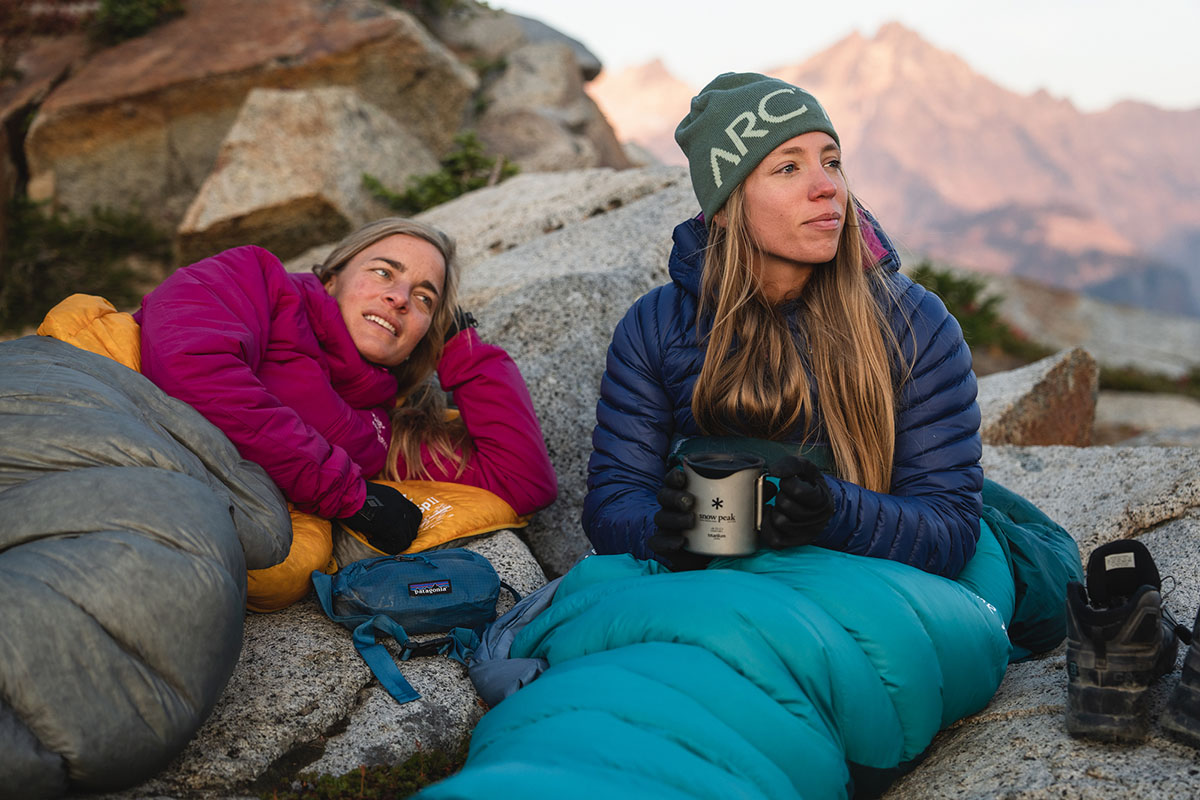
Hiking Boots or Hiking Shoes
Our top pick: Salomon X Ultra 4 Mid GTX ($175) What we like: Trail runner-like agility with hiking boot protection and stability. What we don’t: Those shuttling serious weight might want to step up to a more cushioned and supportive design like Salomon’s own Quest 4.
- Hiking Socks
Our top pick: Darn Tough Micro Crew Cushion ($21) What we like: Great padding and breathability for three-season use; backed by Darn Tough’s lifetime warranty. What we don’t: A bit too thick for sweltering summer days; highly durable build sacrifices a little plushness.
Hiking Pants or Hiking Shorts
Our top pick: Outdoor Research Ferrosi ($99) What we like: Ferrosi fabric nicely balances weight, durability, and mobility. What we don’t: No built-in belt; not the most everyday-friendly option due to the thin construction and basic pocket layout.
Rain Jacket or Hardshell Jacket
Our top pick: Patagonia Torrentshell 3L ($179) What we like: Confidence-inspiring protection and classy looks at a hard-to-beat price. What we don’t : Fairly crinkly and stiff; doesn’t have a chest pocket.
Down Jacket or Synthetic Jacket
Our top pick: Patagonia Down Sweater ($279) What we like: Comfortable fabrics, competitive warmth for the weight, and highly versatile. What we don’t: Not the lightest option for dedicated backcountry use.
Our top pick: Smartwool Classic Thermal Merino 1/4 Zip ($115) What we like: All-merino build is warm and comfortable, regulates temperature well, and doesn’t hold stink like polyester. What we don’t: Pricey, too warm for high-output use, and requires more care to last than synthetics.
Optional Footwear and Clothing
- Sun protection shirt
- Gaiters (for snow or water crossings)
- Neck gaiter/buff
Health and Hygiene
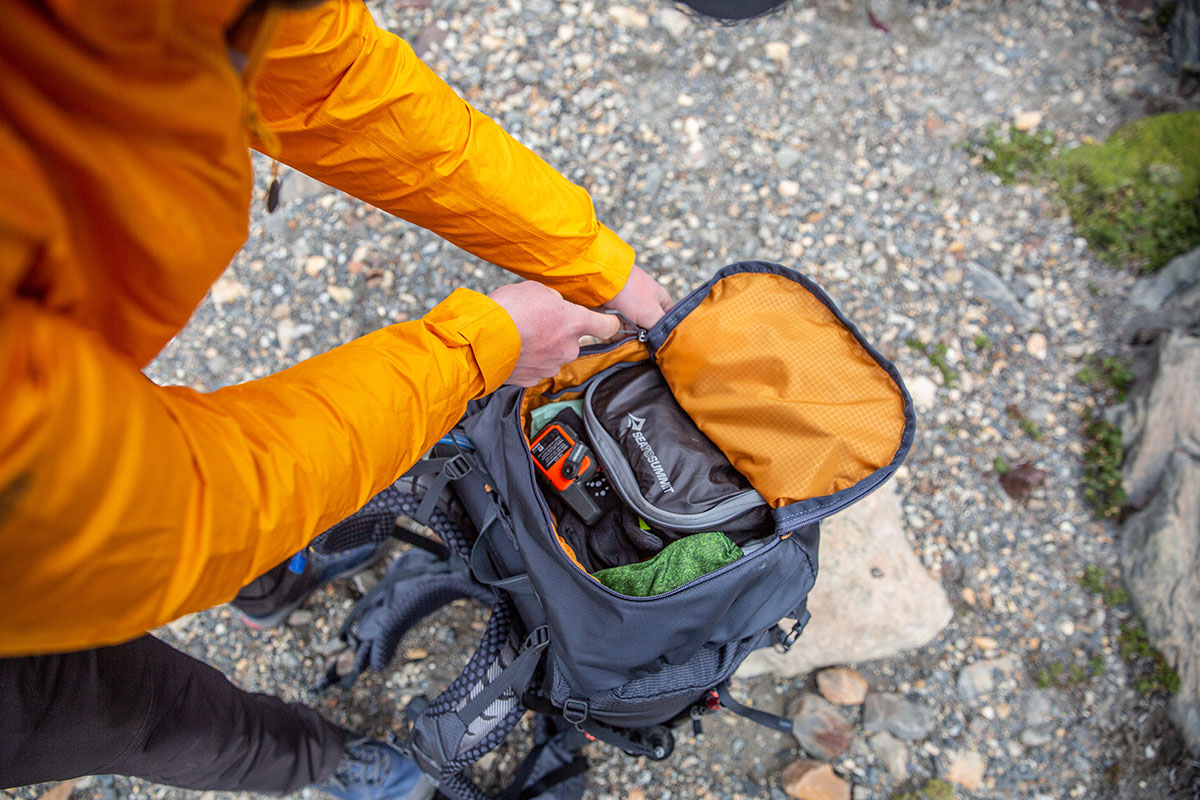
- Toilet paper and/or baby wipes
- Wag bags or trowel (check local regulations)
- Hand sanitizer
- Personal medications
- First aid kit
Sun and Bug Protection
- Insect repellent
Optional Health and Hygiene Items
- Mosquito net
Personal Items and Extras
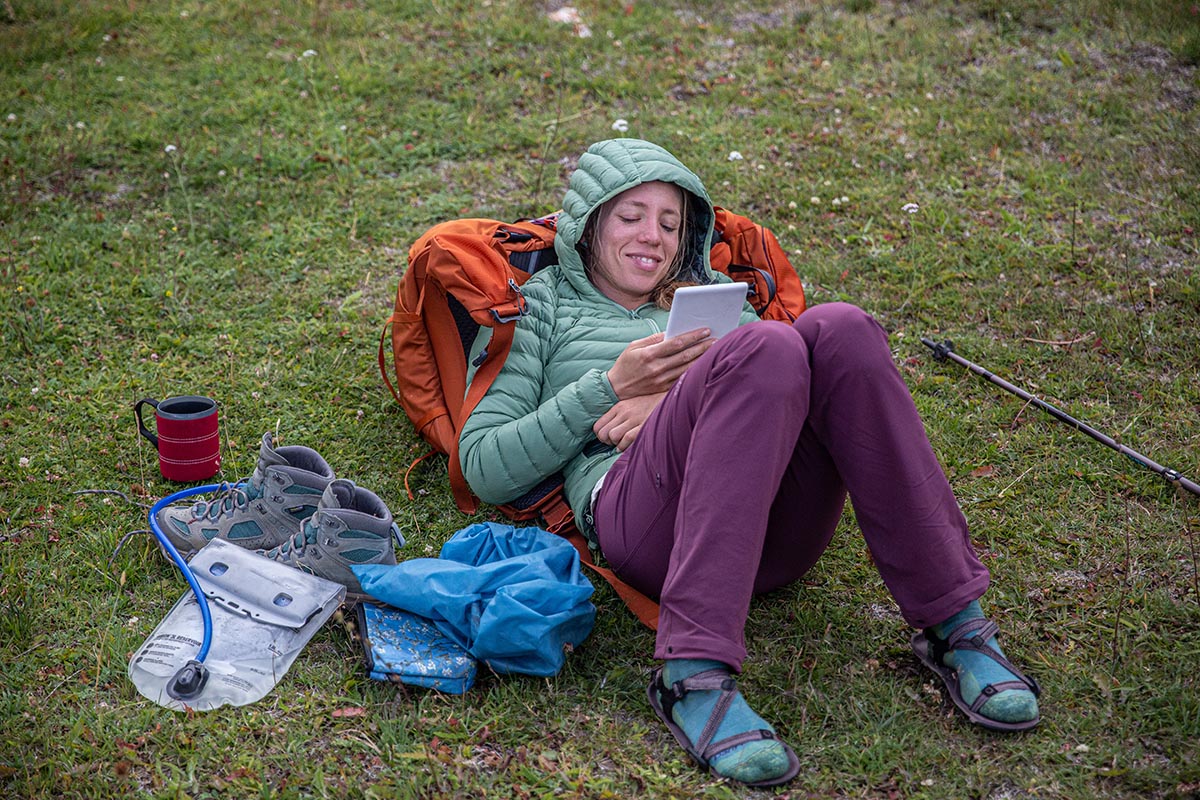
- Basic repair kit (multi-tool, duct tape, extra cord)
- Navigation (map, GPS, compass)
- Cell phone with charger
- Extra batteries and/or solar charger
- Notebook and pen/pencil
- Book or Kindle
- Bear canister and/or bear spray (if required)
- Ziploc bags (for trash and waterproofing electronics)
- Lighter and/or waterproof matches
- Backup water purification tablets
- Pack rain cover (if not included)
- Quick-drying towel
- ID, cards, and cash
- Backcountry permit or reservation (if required)
- Forest Service/park pass (if required)
- Satellite messenger device
Additional Backpacking Tips
- Check restrictions before you go to ensure you're up to date on current fire bans, required bear-proofing measures (such as bear canisters or bear bags for food), etc.
- A balanced and organized load is key for maintaining comfort on the trail. It’s best to place heaviest gear in the middle of your back and pack in a way that allows you to access certain items easily on the go. For a detailed breakdown, see our article on How to Pack a Backpack .
- Use resealable bags for toiletries and other small items you don’t want to lose or get wet, such as lighters and matches.
- If you’re limited on space, consider using dedicated compression sacks for soft gear like your sleeping bag, clothing, etc.
- Research your route ahead of time to verify where you’ll encounter water sources for fill-ups. If they’re plentiful, you may be able to get away with carrying in less water.
- We recommend a 10-degree buffer for your sleeping bag. For example, if your bag is rated to 20 degrees Fahrenheit, expect to be comfortable down to around freezing.
- Pack foods that you know you’ll enjoy eating and remember to drink water often. It’s common to not feel hungry or thirsty after heavy exertion, but refueling properly is key to maintaining energy and feeling good on the trail.
- Always bring backup water purification in case your filter fails. Iodine tablets are a cheap and easy way to ensure you’ll have clean drinking water, and adding electrolyte tablets will help eliminate any aftertaste.
- Be sure to share your itinerary with a trusted friend or family member before heading out, including your expected route and arrival/departure dates.
Where to Buy Backpacking Gear
Perhaps our Seattle roots makes us biased, but we do much of our gear shopping at REI Co-op . The selection is excellent, the return policy is generous (make sure not to abuse it if you want it to continue), the staff generally are knowledgeable and helpful, and you get the brick-and-mortar bonus. A good option for online shopping is Backcountry.com , which has free standard shipping on orders over $50 and solid selection overall (we use Backcountry more for winter purchases but it does well in the hiking/camping world as well). For cheaper items and those who need gear quickly, it’s hard to beat Amazon.com and the sheer volume of sellers and product options. Last but not least, we always support buying gear at your local shop. It’s a great way to support the community, get real information about your trip, and be able to try things on in person. Back to Our Backpacking Checklist See Our Backpacking Gear Reviews
Learn More About Outdoor Gear
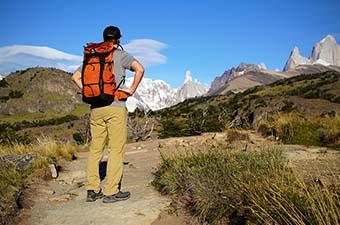
Hiking Gear Reviews
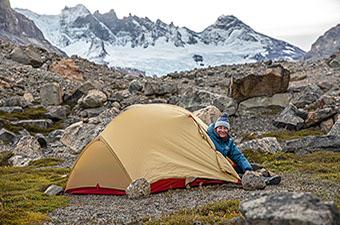
Best Backpacking Tents of 2024
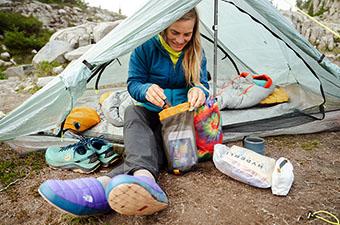
Best Stuff Sacks of 2024
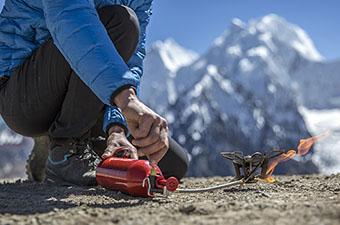
How to Choose a Backpacking Stove
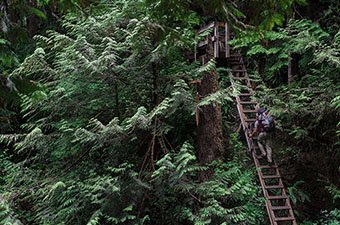
The West Coast Trail: Vancouver Island's Iconic Hike
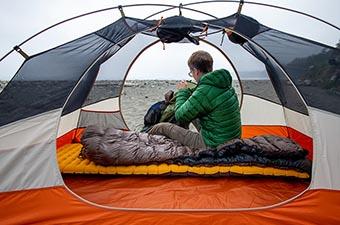
Best Backpacking Sleeping Pads of 2024
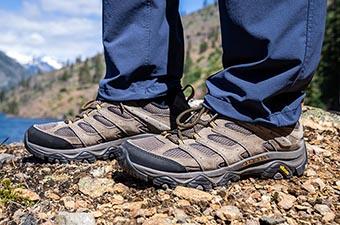
Best Hiking Shoes of 2024
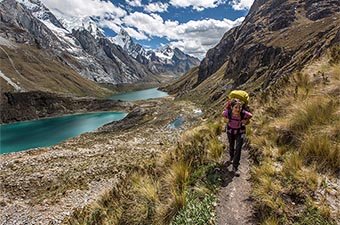
Trekking Peru's Cordillera Huayhuash
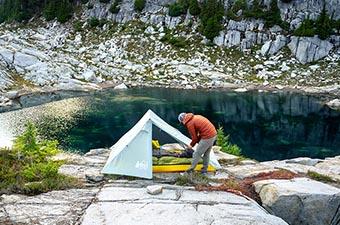
Best Tent Brands of 2024

Mobile Menu
Megamenu - desktop hamburger menu.
- Hiking Gear
- Backpacking Gear
- Biking Gear
- Camping Gear
- Footwear Reviews
- Climbing Gear
- Skiing Gear
- Winter Gear Reviews
- In-Depth Gear Reviews
- Hiking Shoes
- Hiking Boots
- Trail Running Shoes
- Mountain Bike Shoes
- Approach Shoes
- Climbing Shoes
- Beginner Climbing Shoes
- Mountaineering Boots
- Winter Boots
- Rain Jackets
- Down Jackets
- Synthetic Jackets
- Fleece Jackets
- Hardshell Jackets
- Softshell Jackets
- Windbreaker Jackets
- Ski Jackets
- Winter Jackets
- Hiking Pants
- Trekking Poles
- Baby Carriers
- Running Vests
- Backpacking Tents
- Backpacking Packs
- Backpacking Sleeping Bags
- Backpacking Sleeping Pads
- Backpacking Stoves
- Water Filters
- Altimeter Watches
- Handheld GPS
- Mountain Bike Helmets
- Mountain Bikes
- Mountain Bikes Under $1,000
- Mountain Bikes Under $2,000
- Gravel Bikes
- Bike Brands
- Kids' Bikes
- Hitch Bike Racks
- Camping Tents
- Rooftop Tents
- Camping Sleeping Bags
- Camping Mattresses
- Camping Chairs
- Camping Stoves
- Duffel Bags
- Rock Climbing Shoes
- Climbing Helmets
- Climbing Harnesses
- Climbing Quickdraws
- Belay Devices
- Climbing Ropes
- Climbing Backpacks
- Winter Gloves
- 4-Season Tents
- Ski Helmets
- Ski Goggles
- Ski Backpacks
- All-Mountain Skis
- Ski Bindings
- Backcountry Skis
- Backcountry Ski Boots
- Skis for Beginners
- Hardpack Skis
- Mirrorless Cameras
- Full-Frame Cameras
- DSLR Cameras
- Point-and-Shoot Cameras
- Travel Cameras
- DSLR Lenses
- Mirrorless Lenses
- Lofoten Islands
- Lofoten Hiking
- Hardangervidda
- Jotunheimen
- 10 Great Norway Hikes
- Public Huts
- Torres del Paine
- Chalten and Glaciares
- Lake District
- Patagonia National Park
- Milford Sound
- Abel Tasman
- Marlborough
- Great Walks
- Adventure Towns
Add adventure to your inbox
- Privacy Policy
- Terms of Use
© 2024 Switchback Travel. All Rights Reserved. No part of this site may be reproduced without our written permission.

9 essentials you need to pack before hiking in bad weather
G etting out into nature and taking it all in while on foot is a real treat. It doesn’t matter if the sky is flooded with sunshine or rain clouds, nothing beats the beautiful scenery of countryside trails or mountainous scenes. That said, equipping yourself with the right gear such as the best hiking boots is crucial if you want to get the most out of your adventures and not let the dangers of bad weather ruin a good hike.
Whether you are going on a one-off hiking trip with friends or spending every single weekend hitting the trails, it is absolutely worthwhile investing in the right gear. Yes, we have to say it, you will have to prioritize quality over style to ready yourself for all types of weather. If you're someone who likes to maintain your fashion status while exploring nature, you’ll be glad to hear hiking wear and equipment have gotten pretty trendy as the activity has grown in popularity over the last couple of years.
Eager to bring you a foolproof list of essential hiking items that will protect you while hiking in bad weather, we caught up with author and experienced hiker Adam Warrington, who works alongside the reputable and well-loved outdoor clothing brand Blacks. He knows a thing or two about what to pack for bad weather hikes.
With the following nine items, you’ll be ready for whatever your next hike brings.
What to pack for hiking in bad weather
First and foremost, now is the time for us to emphasize that it’s not just physical items that can protect you from bad weather while hiking. Mother nature is not one to underestimate, you need to be able to say no to a hike or turn back on one when the conditions are too extreme. But a change in weather can’t always be predictable, and it’s a wise idea to be prepared for whatever conditions your hike may bring.
1) Bring drinking water and food
“In extreme weather, it's crucial to stay hydrated and well-nourished. Bring a sufficient water bottle and high-energy snacks to sustain yourself throughout the hike,” explained Warrington, “Additionally, be aware of the signs of dehydration and hypothermia, as these conditions can escalate quickly in challenging weather.”
Food and drink are two things you should always pack with you before a hike. It doesn’t matter if you only plan on heading out for a short trek, plans can change, routes can be longer than expected and navigating tricky terrains in challenging conditions can lead to an increase in thirst and hunger.
If you don’t like carrying too much extra weight on your back while hiking you should look into sourcing a filtered water bottle that allows you to fill it up out in mountain streams or rivers. Alternatively, we can recommend you a collection of the best hydration backpacks that are designed to make taking a quick slurp of water much easier while on the move.
2) Carry a rucksack
A rucksack seems a given, but what isn’t so obvious is what type of rucksack is best for your adventures and also how big the rucksack should be. Warrington advised opting for a rucksack that is a minimum of 40 liters when preparing for a hike that could be wet and windy. This volume allows you to pack bulky items like insulated clothing, a tent, or a large flask of hot cocoa or coffee.
You should also spare some cash for a rucksack cover when you buy a new rucksack. And if your hike doesn’t involve an overnight sleep in a tent, you can get away with carrying a 20- to 30-liter rucksack.
3) Pack a first-aid kit
Unfortunately, those old blister plasters sitting at the bottom of your rucksack won’t be the answer to all potential injuries or obstacles that you can face while hiking. Buying a first aid kit and keeping an inventory of what goes in and out of it is a great way to prepare for any hiccups on your journey.
According to Warrington, essential items for your hiking first aid kit are things like bandages, sterile dressings, gauze pads, scissors, cleansing wipes, adhesive tape, scissors, pins and an aluminum blanket.
4) Bring waterproofs
When we talk about layers in the context of hiking wear, we don’t mean pack as many hoodies as you own into the car before heading off to your route. The layers you choose to wear and pack for a hike should be designed to withstand the elements.
When hunting for some trusty waterproofs, Warringon pointed out that not all of the options on the market are born equal and that even the best waterproof footwear and clothing will eventually let water in if you stay out long enough in fierce rain. As a rough rule of thumb, Warringon said, “Good quality waterproofs keep you dry for longer and are measured by the Hydrostatic Head (HH) rating. The higher the number, the longer you’ll stay dry.”
Suppose you need an example of a suitable rainjacket for your hiking adventures. In that case, you might like to read about what happened when our writer Dan Bracagila put Outdoor Research's $170 Helium Jacket in the shower to test its water resistance. Let’s just say we don’t do things in halves when it comes to testing the quality of outdoor wear.
5) Acquire appropriate footwear
Comfort is key when hiking and the soles of your feet most definitely need appropriate protection as they carry you through your various miles and terrains.
“You can determine what shoe you need based on the terrain of your outdoor adventure," Warrington said. "On easy trails, hiking shoes would be sufficient, but a good pair of hiking boots will provide more support for more advanced trails where the elements may play against you.”
Even if you would prefer to buy your hiking boots online, where it can be easier to find a great deal, it’s a good idea to go into an store to try on your favorite brands and styles. This will help you to establish how a hiking boot should fit you. Once you find the perfect pair, make sure to wear your new boots on small journeys before heading out on a hike, to break them in a little and avoid rubbing.
6) Invest in a tent
Some of the best hikes are the ones that require staying overnight in a tent. Going to bed underneath a sky of stars and waking up to a gorgeous sunrise over your surroundings can’t be beaten. But you’ll need a good quality water resistant tent that isn’t too heavy to carry on your back.
“When buying a tent, make sure you consider one that sleeps at least 1 person up from how many people will be sleeping in the tent,” Warrington added, “This will ensure you have plenty of space for all of you and your gear inside.”
7) Pack a torch or head torch
Bringing a torch (known as a flashlight in some parts of the world) can be a game changer, especially in seasons when the days are shorter and night conditions arrive quicker than hikers would like. “A head torch can help navigate those late-night toilet trips, or if the hike takes longer than expected and you get caught in the dark,” noted Warrington.
8) Bring sunscreen
As much as a day of hiking in the sun is great for topping up your tan, you must protect your skin from strong rays. It’s still possible for UV rays to break through clouds and harm your skin even in autumn and winter. Finding a high quality SPF should be on all hikers' shopping lists, even if it is only your face that is on show, your skin will thank you for some SPF.
9) Invest in a down-insulating jacket
If you are hiking in colder climates, you will need to own a proper insulating jacket. Even if you start your hike without it, temperatures will drop the later you are hiking for and if you are hiking in the mountains you will find it gets cooler the higher you climb. Likewise, be sure to pack smaller insulating items like gloves and a hat.
Finally, remember that hiking is the perfect activity for appreciating the beauty of nature and the best way to make the most out of this is to keep your safety as the number one priority when hitting the trails.
Searching for more hiking advice? Find out which burns more calories: hiking vs power walking. Read about what my colleague Sam Hopes learned while hiking the French Alps for the first time or check out our list of the best hiking apps.

What to wear hiking: Best attire and what to bring for any season

During the COVID-19 pandemic, hiking grew in popularity as a way for people to exercise out of their homes in a safe, socially distanced way. In 2021, 58.7 million people went hiking, the Outdoor Industry Participation Association reported in 2022.
Now that the weather is starting to warm, you may be considering picking up the pastime as well. It’s important to know what essentials you need for this hobby.
Maggie Peicon, manager of communications for the American Hiking Society , shares the basics everyone should consider when gathering their hiking clothing, materials and accessories.
What to wear hiking
Above all, Peicon prioritizes comfort and safety in hiking clothes. Before going out, it is essential to check the weather and be familiar with the trail you choose to hike to plan your outfit accordingly.
“Before you head outside, you want to make sure that you're going to be protected against the elements and that you're going to be as comfortable as you can be, and also through the duration of your hike as well,” Peicon said. “Beyond just looking at like the daily forecast, you want to look at your hourly forecast as well because the weather can change and you want to make sure that you're prepared.”
Peicon emphasizes the importance of layers on top of a comfortable base layer. The base layer refers to the clothing that is directly touching your skin. Choose a t-shirt and pair of bottoms that will be the most comfortable and breathable during the hike.
From there, you can add vests, jackets and other outerwear that all serve different functions throughout your hike.
For all layers of your hiking outfit, Peicon suggests finding moisture-wicking synthetic fabrics such as nylon, polyester and merino wool. This will ensure that any sweat accumulated during your hike dries off and won’t leave you feeling uncomfortable. Try avoiding cotton because despite it being comfortable, it retains moisture and odor. Consider also looking for sun-protective clothing if you are especially concerned about UV protection.
Plan your trip: How to find camping, hiking and national parks spots
Hiking shirts
Like most things for hiking apparel, choosing a shirt for hiking is up to personal preference.
For the summer, consider a short-sleeved shirt or tank top that allows you to move and breathe easily. Make sure to also look for tops that are made of synthetic fabrics mentioned above. The summer months are significantly hotter and hiking exerts a lot of energy so it is important to be proactive and wear clothing that will allow you to cool down quickly. If you're looking for something that covers you up, Peicon suggests trying a lightweight, UV-blocking long-sleeved shirt.
In other seasons like winter, fall and spring, any style of shirt works well as long as it is made out of a breathable fabric that is comfortable for the duration of your hike. If you are considering wearing a long-sleeved shirt, Peicon recommends finding one with thumb holes to provide extra warmth to your hands.
Hiking bottoms
No matter what the season is, Peicon suggests wearing either pants or shorts. No matter what kind of pants you choose, always reach for one made of synthetic material. Fabrics like polyester and nylon are excellent for quick drying.
If rain is in the forecast, consider adding waterproof rainpants. On top of repelling rain, these pants make also be used to help repel water if you are in a moist environment or near a body of water.
“You just want to find something that's not going to restrict your movements and that you're comfortable moving in that's definitely the most important element,” Peicon said.
For occasions when it is colder at the beginning of a hike and warmer at the end, try wearing shorts underneath your warm pants. Layering is a good option for situations like this because you can remove layers as you continue with your hike and store them away in your backpack.
Take note of the wildlife you will be encountering on your hike as well. If there are many bugs or poisonous plants on a trail, you may be inclined to choose pants over shorts.
Hiking shoes and footwear
The American Hiking Society outlines a guide for finding your perfect hiking shoes including shopping tips. One thing important to note is the different kinds of shoes you can wear:
- Trail Runners: Similar structure as a casual sneaker but with light tread to keep you stable on hiking terrains. Ideal for light hikes.
- Trail Shoes: Same structure as trail runners but a bit sturdier with more robust tread. Ideal for easy-moderate hikes.
- Light Hiking Boots: Classic boot shape with study support around the ankles. Ideal for all hiking terrains and some challenging ones.
- Heavy Hiking Boots: Same hiking boot shape made with more heavy-duty materials, stiffer midsole and heavy tread. Ideal for challenging hikes and strenuous climbing.
Choose comfortable socks and protect your feet and ankles from injuries. Peicon recommends wool or Merino wool socks as they are moisture-wicking and do not retain odor the same way cotton does. If you are prone to blisters, try sticking bandaids or moleskin patches on problem areas that experience a lot of friction.
Hiking outerwear
When choosing outwear layers for your hiking outfit, it is important to make sure that each layer serves a function so you are not carrying unnecessary weight during your hike.
Piecon says that an outer shell made from a durable, water and wind-proof material is one of the most crucial pieces to have in your hiking wardrobe. Generally, an outer shell that is lightweight and easily packable is ideal but always consider the weather and terrain of your hike before purchasing a jacket.
“Investing in a strong and durable shell that's waterproof and windproof is going to be one of your better investments,” Piecon said. “That shell is going to be one of the most essential things that you pack on every single hike that you do. So I think that that's a really important piece of outerwear to have.”
In addition to the outer shell, you may also layer fleece or wool jackets and vests for warmth. The combination of the outer shell and warmth layer helps insolate heat during colder seasons.
Hiking accessories
In addition to personalizing an outfit, accessories can be used for other needs during a hike.
One of the most important accessories is a backpack. Peicon suggests a backpack that is capable of holding the 10 Essentials of Hiking that are outlined by the American Hiking Society. The backpack should rest comfortably on your back, and is not too high on your shoulders or too low on your back, Peicon said. She also recommends backpacks with a built-in hydration system that comes with a hose that allows you to drink directly from the pack.
“You can just drink directly from it versus having to take a water bottle out of your backpack every couple of minutes,” Peicon said. “Personally, that's one of my favorite features in a backpack. I like to be able to drink as I go. I think it keeps hydration a lot simpler.”
Year-round, but especially in the summer, bring a pair of sunglasses and a hat to protect you from the hot sun and UV rays.
If you are hiking in the winter, consider bringing a pair of gloves to keep your hands warm and protected from the winter elements.
Bandanas are also an excellent accessory to add to your outfit. Besides being a hair accessory or scarf, bandanas may be used as a rag to cool you down if you find yourself overheating. Simply pour or dunk the bandana in water and place it on your forehead or neck for a makeshift cooling rag.
What to bring camping: Essentials to pack for your next trip
Just Curious for more?
USA TODAY is exploring the questions you and others ask every day. From " What do you bring to bring to a cookout? " to " Who invented ice cream? " to " Where do lions live? ", we're striving to find answers to questions you ask every day. Head to our Just Curious section to see what else we can answer.

IMAGES
VIDEO
COMMENTS
Backpacking Essentials: Camping Gear Backpack. For an overnight trip, you should be able to get by with a backpack that holds 30-50 L. If you're backpacking for an extended trip (3-5 days), then ...
What to Pack for an Overnight Hike - 17 Essentials. 1. Poncho. Weather is unpredictable, so my motto is to be prepared for anything. The Terra Hiker waterproof poncho is an easy item to pack because it is very compact and lightweight. It's also large enough to cover a backpack, so that stays dry as well.
33. Backpack. As one of the 'Big 3' overnight hiking items, a backpack to put all your gear in is absolutely essential. Picking the right pack can be quite a challenge, but as a general rule you should aim for the following: Fully loaded it should weight less than 15-20% of your body weight.
A regular dose of adventure inspiration, trip ideas, latest events and giveaways. ... Overnight Hiking Packing List with 20+ Essentials Gear - Gear Guides Overnight Hiking Packing List with 20+ Essentials 3/02/2024. Tim Ashelford. Tim Ashelford Publisher.
This additional overnight hiking checklist serves as a general guide and for each specific backpacking trip, we create a new list tailored to its requirements. The list below is our basic overnight hiking checklist. The 10 essentials; Emergency beacon; Sleeping bag; Sleeping mat; Hiking stove and gas; Cup, bowl, spoon; Trowel and toilet paper ...
A one-man mummy tent can be great for solo overnights. In areas where bugs are a problem, make sure your tent has good insect netting. Sleeping pad (and patch kit, if it's air-inflated). Sleeping bag. Optional: Tent footprint. A ground tarp can be an important addition where ground is moist. 03 of 08.
Water Bladder. Water bladders are one of the first things to pack for hiking trips. It makes it easier to stay hydrated, and you don't need to keep taking off your pack to pull out your water bottle. I use the 2l water bladder from First Ascent, and it also comes in a 3l if you want more carrying capacity.
Backpacking is an essential skill to master on an overnight hike. It is also good to brush up on some of your basic skills including meal prep, safely lighting a fire, and knowing how to manage common outdoor concerns. This includes treating poison ivy rashes or knowing what to do if you have a run-in with local wildlife.
So the first challenge that a first timer must face is that they must stay as lightweight as possible and still cover all they need i.e. carry only the essentials. So here is a checklist for an overnight backpacking trip. 1. Boots. Boots are the foundations of your backpacking trip. Bad boots can ruin the whole trip.
Essential items for your hiking gear checklist. Make a list of must-haves before you leave. Your safety and comfort come first. Take things like water filters, headlamps, and a shelter, like a tent or hammock. ... When starting to plan your overnight hiking trip, ask yourself: What are the key factors in successful multi-day hike planning? The ...
Heading out on your first overnight hike or backpacking trip can be a daunting and exciting experience. It's a big leap from doing a few day hikes to carrying everything on your back and camping out in the bush for the night. ... 10 Essential Tips for Trekking in Nepal. Updated on November 30, 2021 November 30, 2021. Read. Hiking Tips How to ...
Regardless of what the forecast says, you really can't afford to on an overnight backpacking trip without a waterproof shell. Get a rain jacket that has wind-proof properties. Hiking Boots or Shoes. Proper footwear is one of the top backpacking essentials. The boots or shoes you pick should be a good fit for the terrain you plan to visit.
Bear canisters recommended. Bear hang set up: 60 feet rope & bag for all edible and scented items. Fuel & lighter. Stove & pot. Spoon / spork. Download the PDF version of this checklist. Click Here. Must-have gear for overnight backpacking and camping trips on the Appalachian Trail. Updated with COVID-19 safety recommendations.
For overnight hiking, 60-70L is a useful size, and it can be helpful to have a detachable day-pack. Also consider whether you need/want lots of pockets and attachment points on the outside. Granite Gear CROWN2 60. $199. I got this as a second pack: it's very lightweight (1.14kg) and carried enough gear for a 4-day walk.
1. A waterproof shell jacket. Top of our backpacking essentials is the best waterproof jacket you can get. Even if there is no rain forecast, you should carry a lightweight, waterproof shell jacket. First of all, no matter if you're in the mountains or the forest or along the coast, a surprise rain shower is a constant possibility and you ...
BACKPACKING FOOD - Good food is really important for any backpacking trip, so it's well worth the effort to put together a simple meal plan before your trip. Keeping food weight down is a critical backpacking skill that usually takes experience to master. A good place to start is our Guide to Lightweight Backpacking Food.Most seasoned backpackers opt for lightweight, calorically-dense ...
ContentsOvernight Hiking Essentials, Planning and GuideOvernight Hiking ChecklistBackpacking Food for the Overnight TripLightweight Stoves are Best for HikingUsing Compass Is Important for Beginner Backpacking TripsKeep Medicines in the Overnight Hiking PackManaging Nighttime in Overnight CampingCheck the Weather Before PlanningShare this:Related With all the experiences of my trips, travels ...
Supplies. Hiking for hours and days in a row burns a significant number of calories, which must be replaced with lots of nutritious food. Many individuals need to consume hot food, and yet lots of other people prefer raw or prepackaged, cold food like protein bars, sandwiches, beef jerky, or fruits, especially during short overnight stays ...
Overnight Backpacks. For multi-day hiking & backpacking, where you'll need to carry everything in on your back, I recommend choosing a 40-65 liter backpack that will hold your tent, sleeping bag, food, water, and other backpacking essentials. Gregory Mountain Zulu 55 - This is the backpack I take with me on most 2-3 day trips.
Our detailed checklist below covers everything from critical backpacking equipment (tent, pack, sleeping bag, etc.) to kitchen gear, footwear and clothing, health and hygiene products, and personal items and extras. For more information on each product category, many of the headings link to our detailed product round-ups, which are the result ...
A well-packed backpack will make a world of difference on the trail. In this video, I show you how to pack your backpack for an overnight hiking trip and sha...
According to Warrington, essential items for your hiking first aid kit are things like bandages, sterile dressings, gauze pads, scissors, cleansing wipes, adhesive tape, scissors, pins and an ...
During the COVID-19 pandemic, hiking grew in popularity as a way for people to exercise out of their homes in a safe, socially distanced way. In 2021, 58.7 million people went hiking, the Outdoor ...